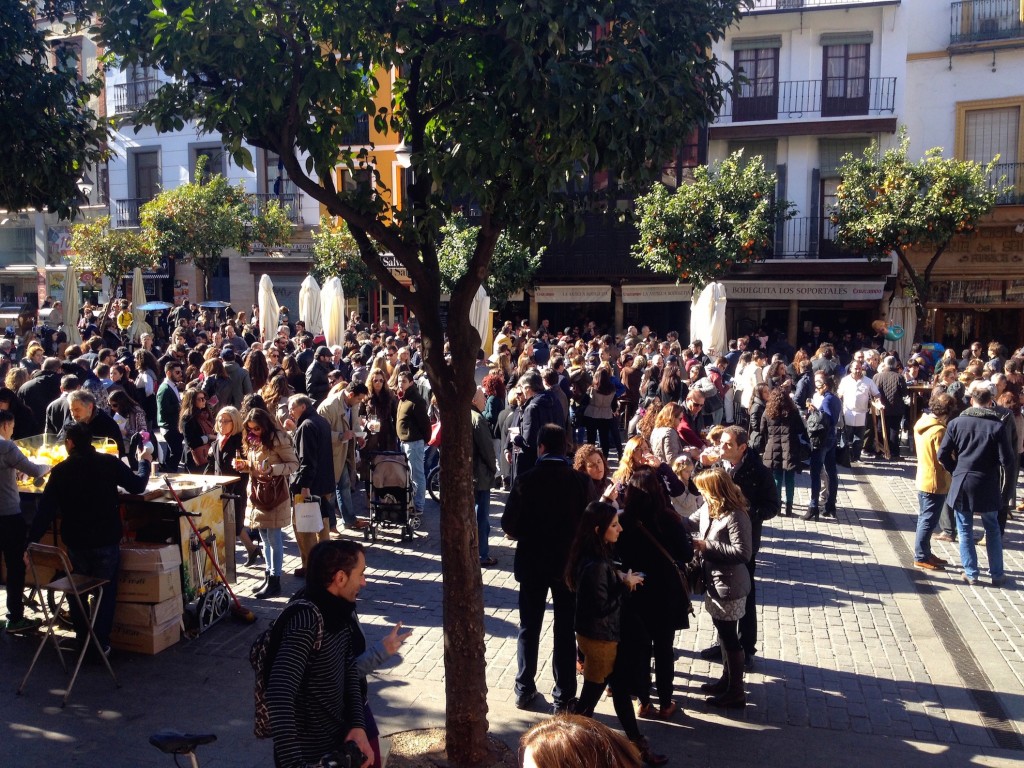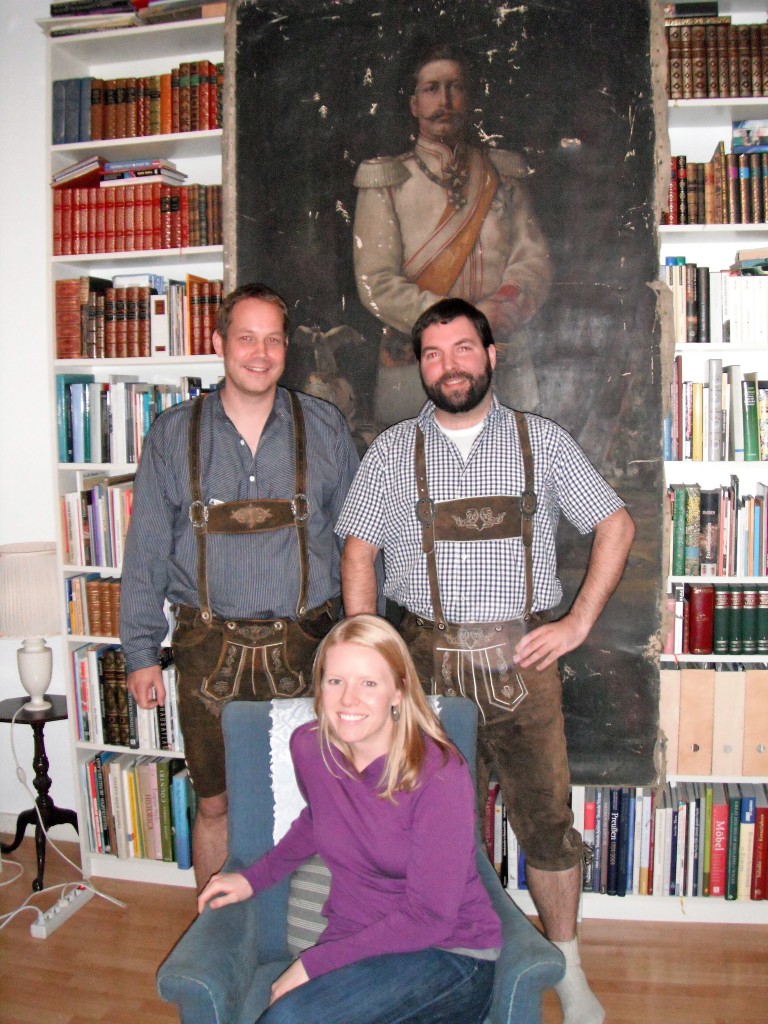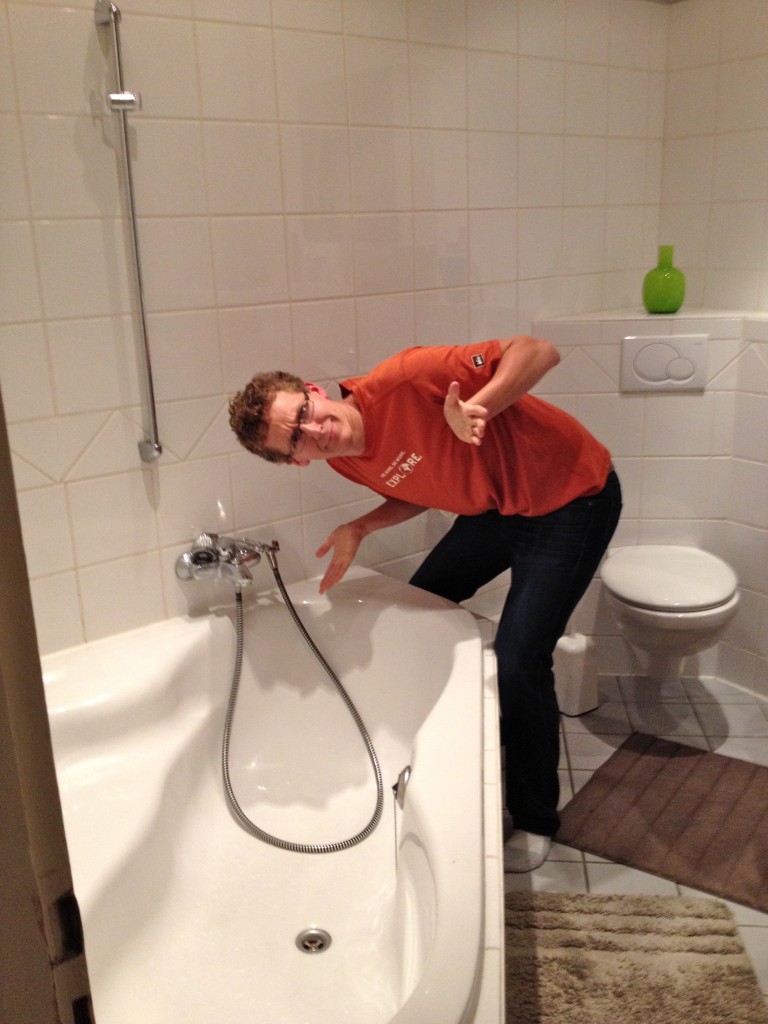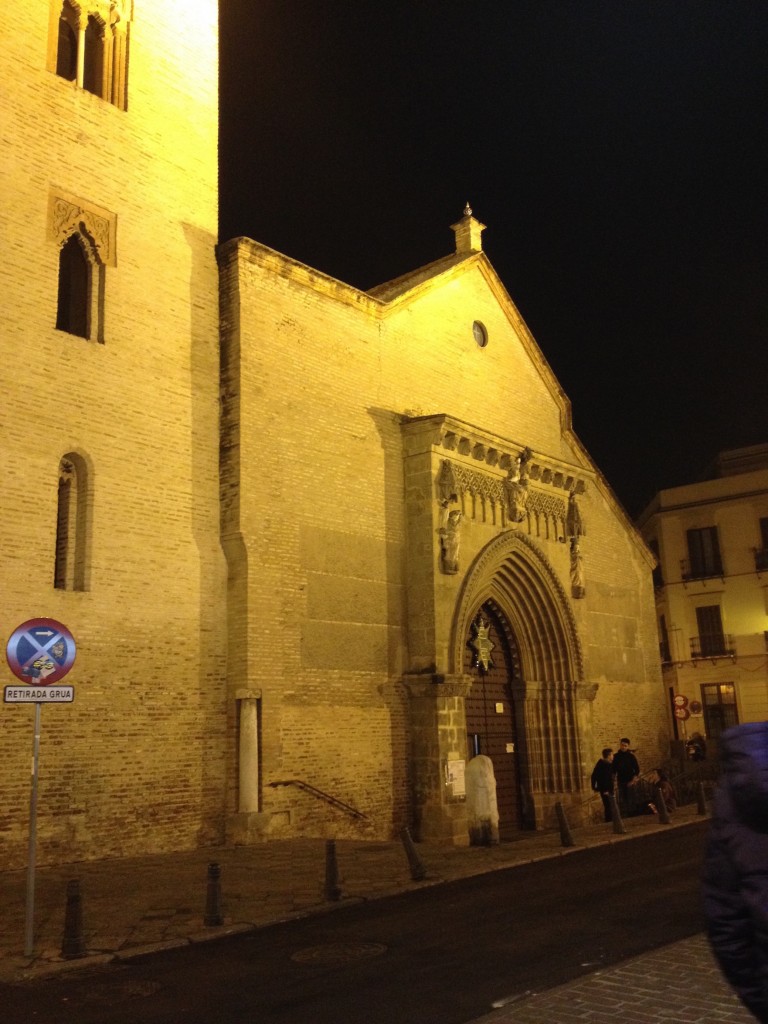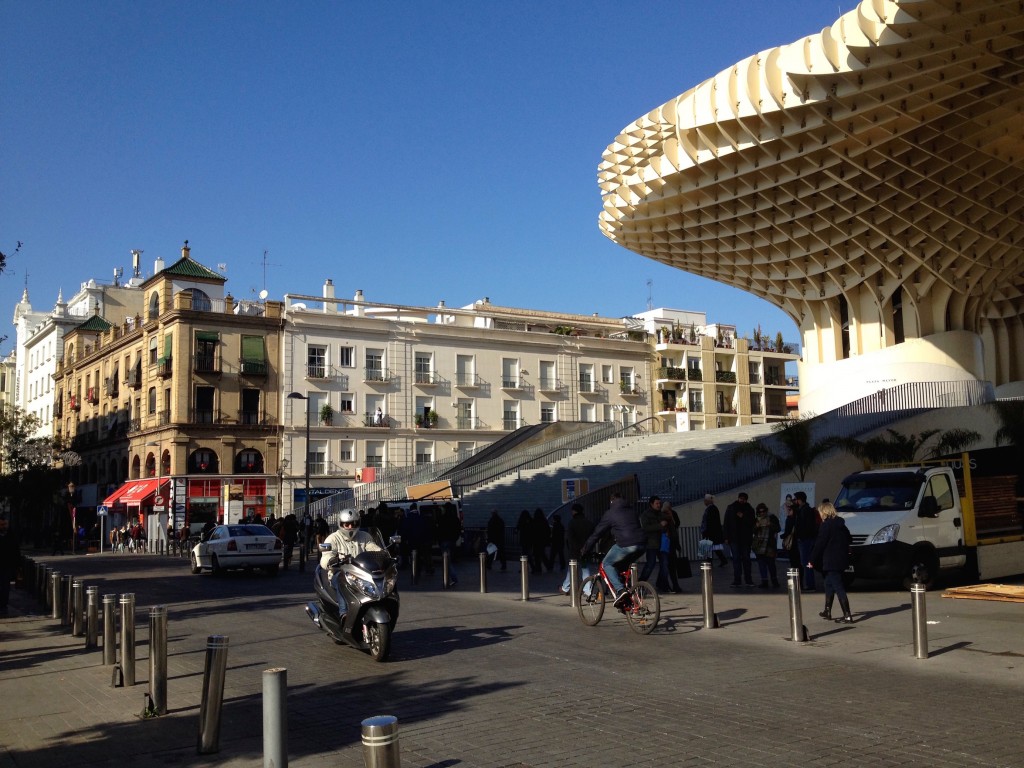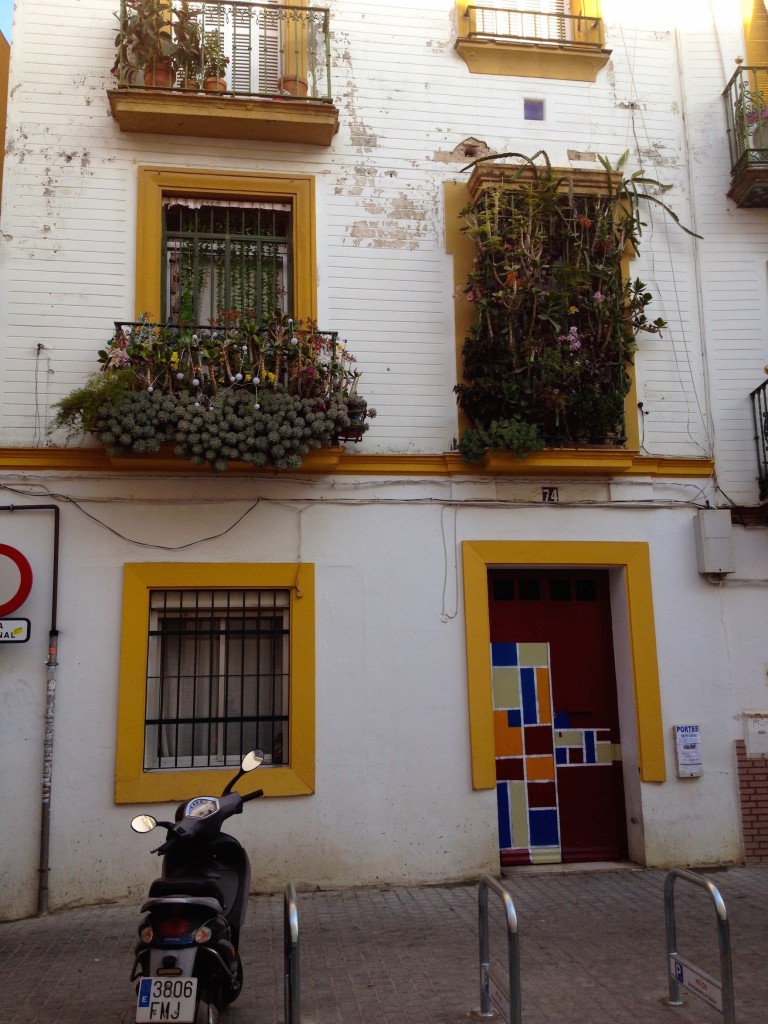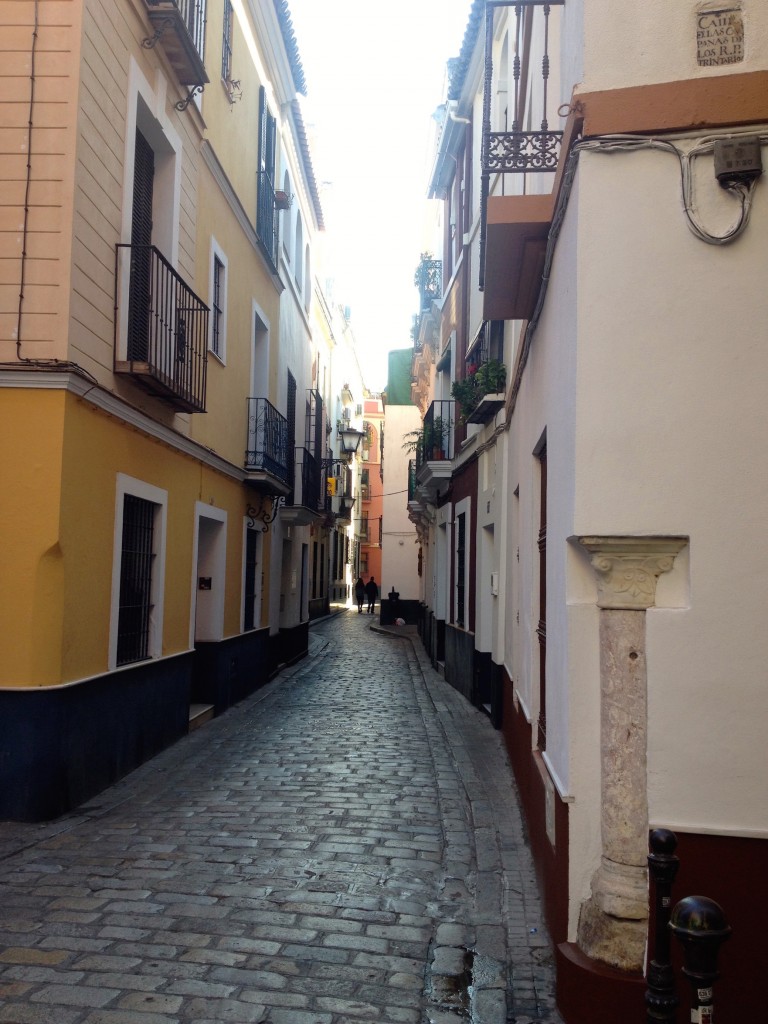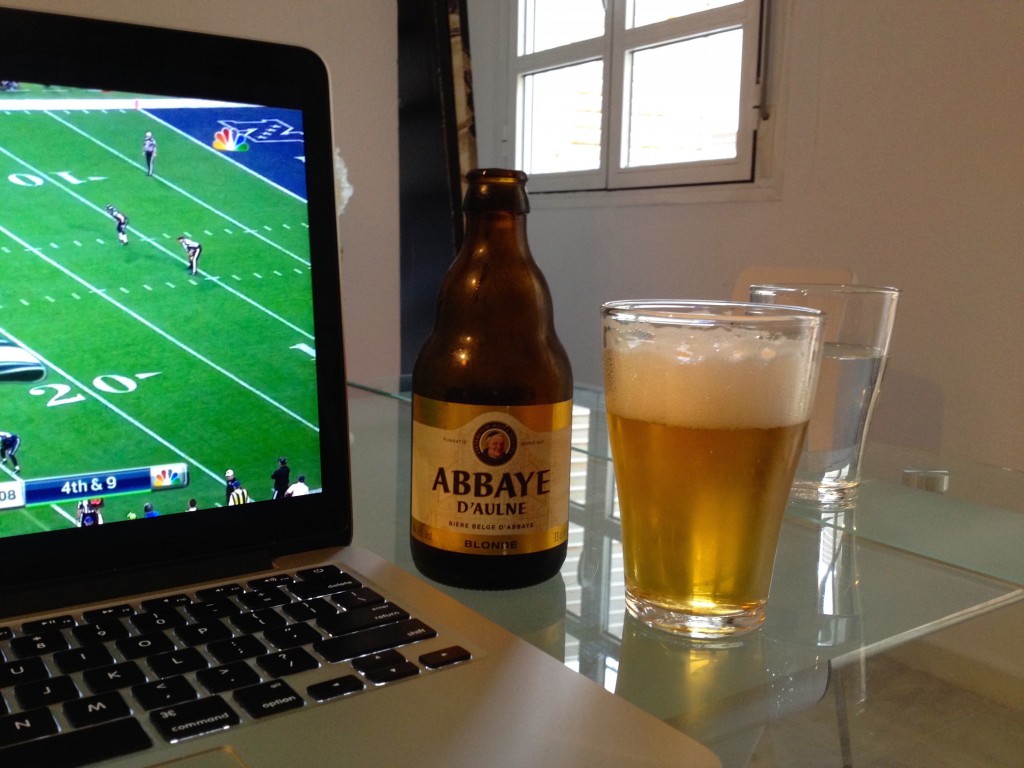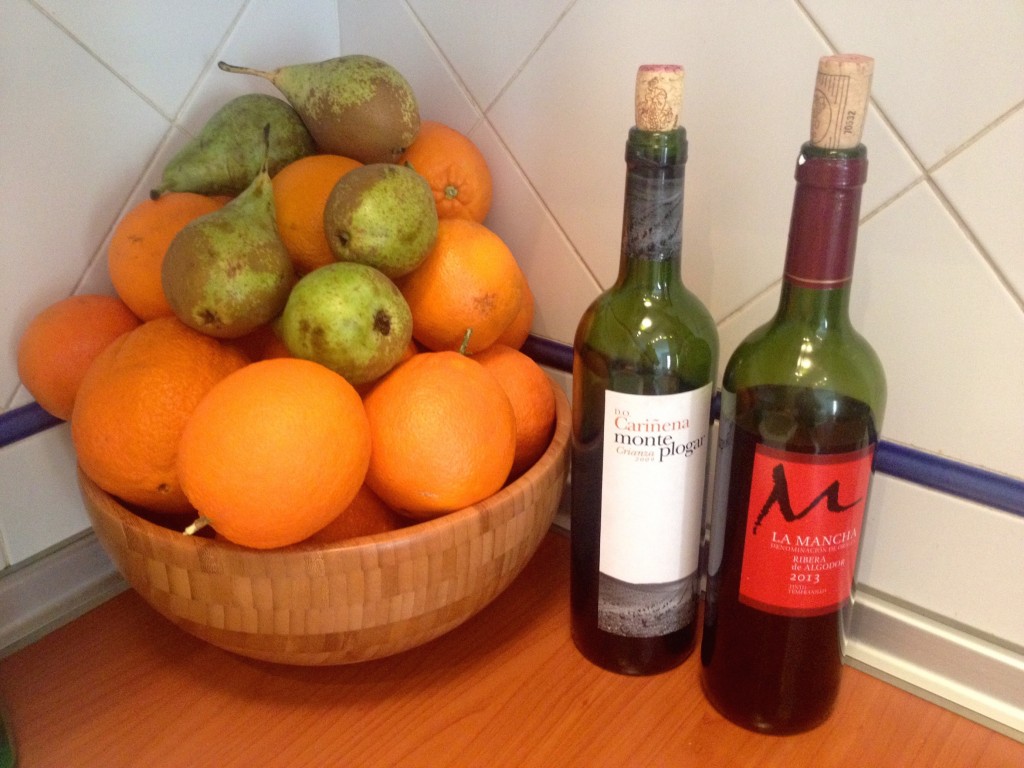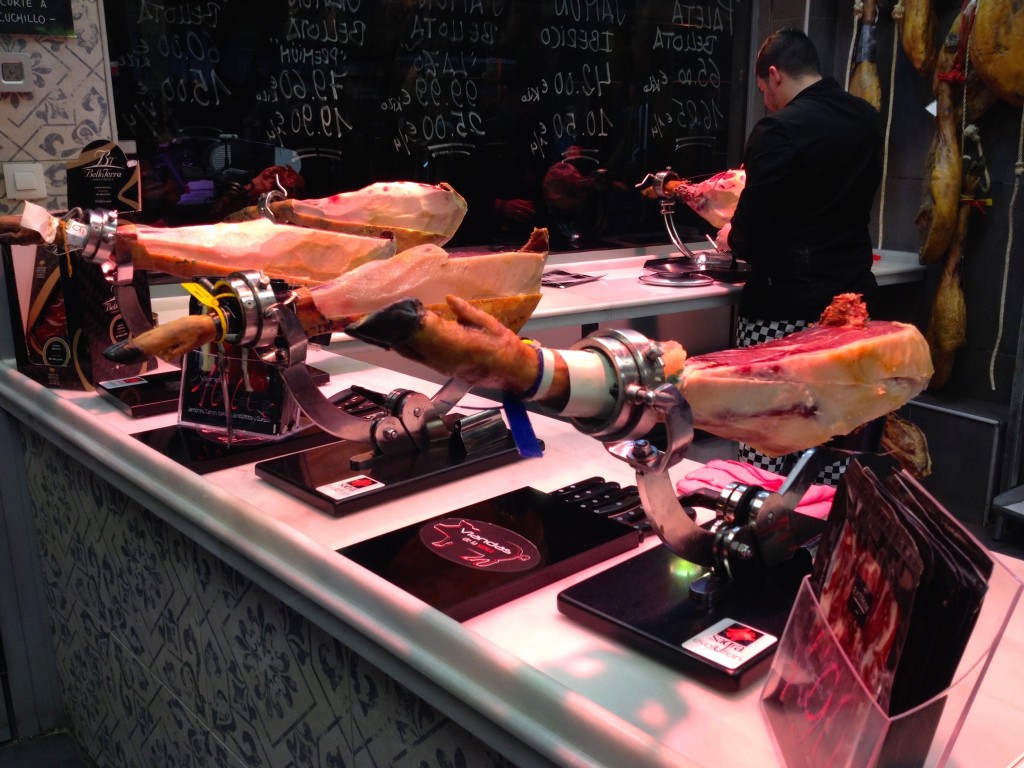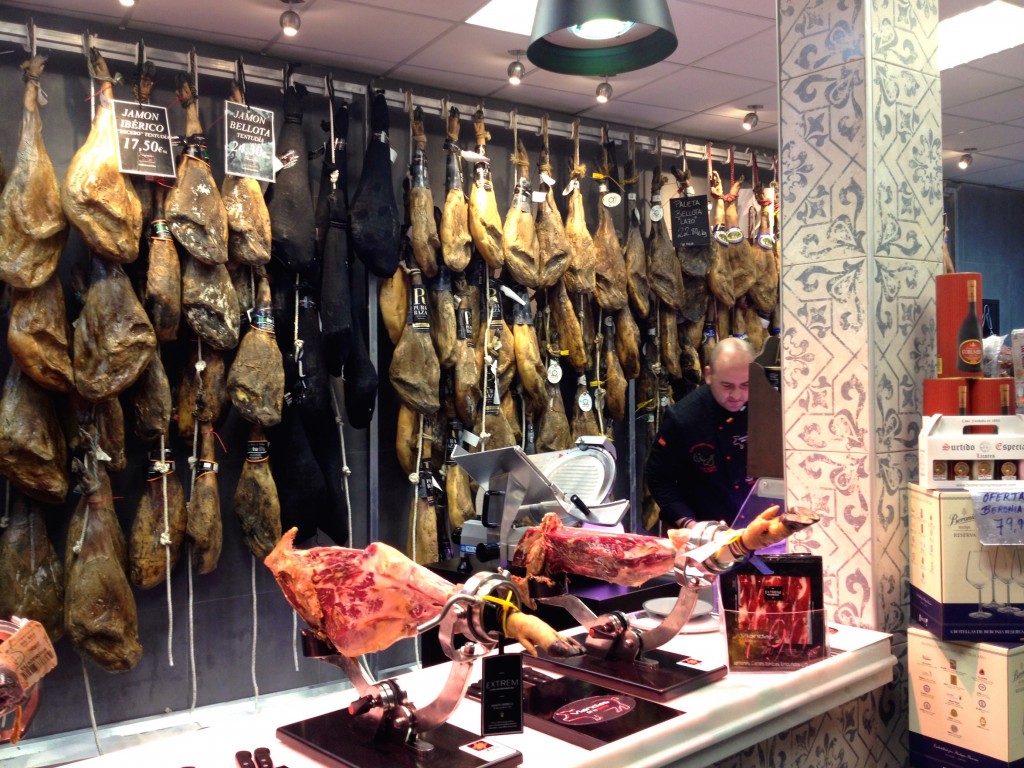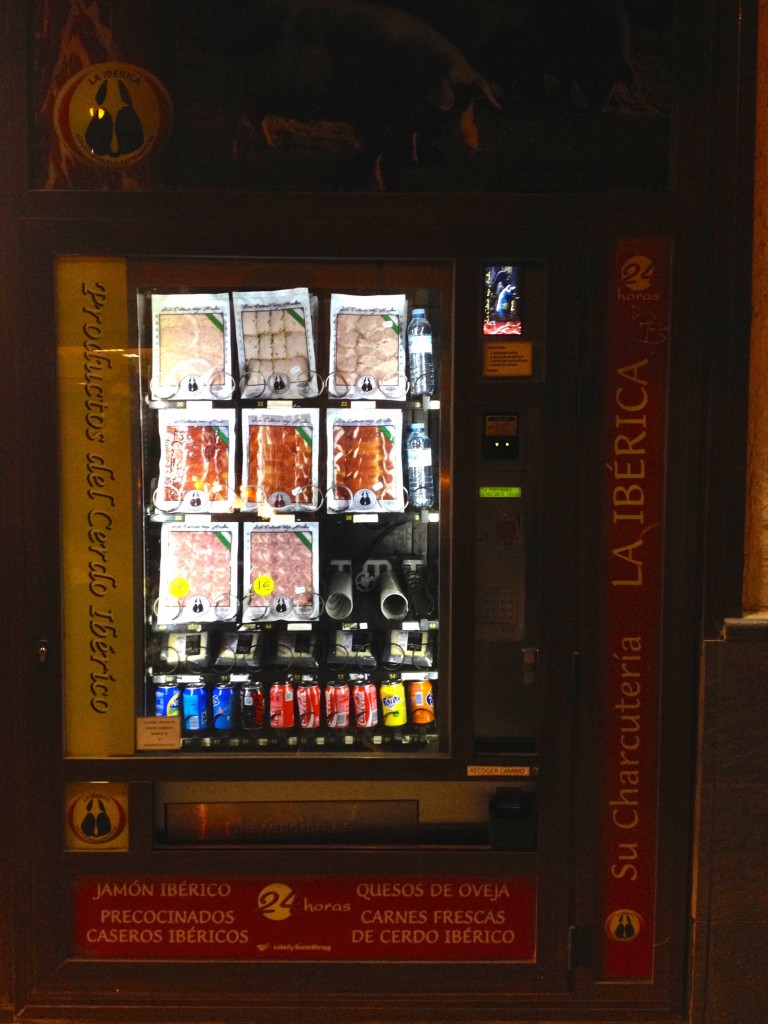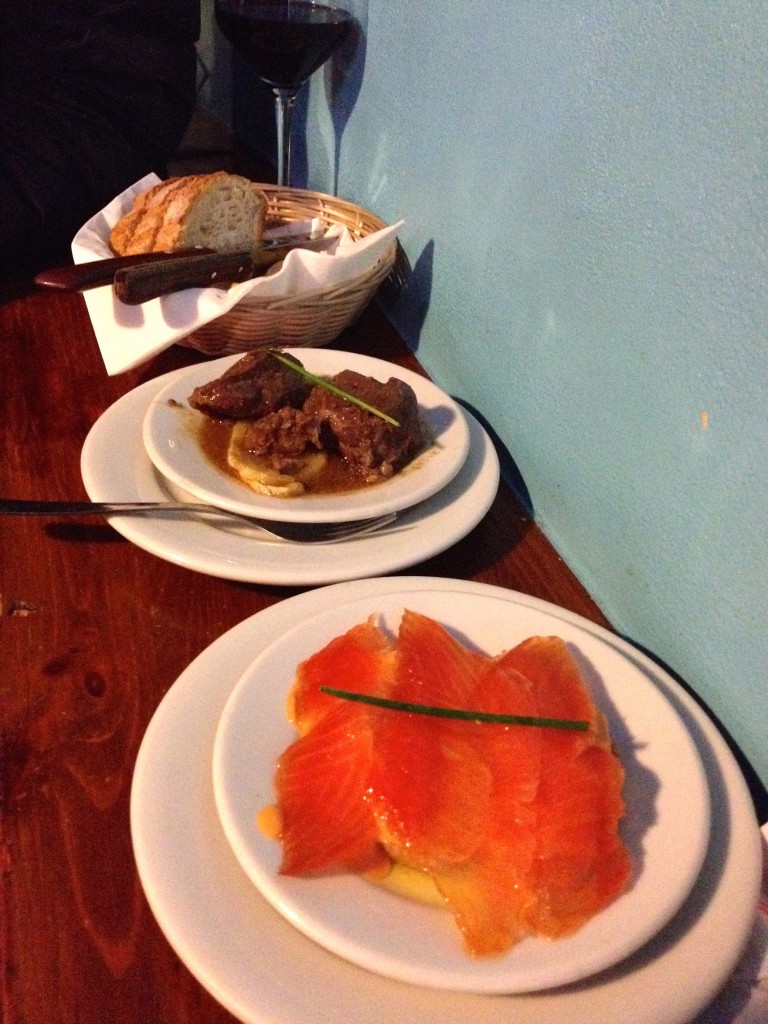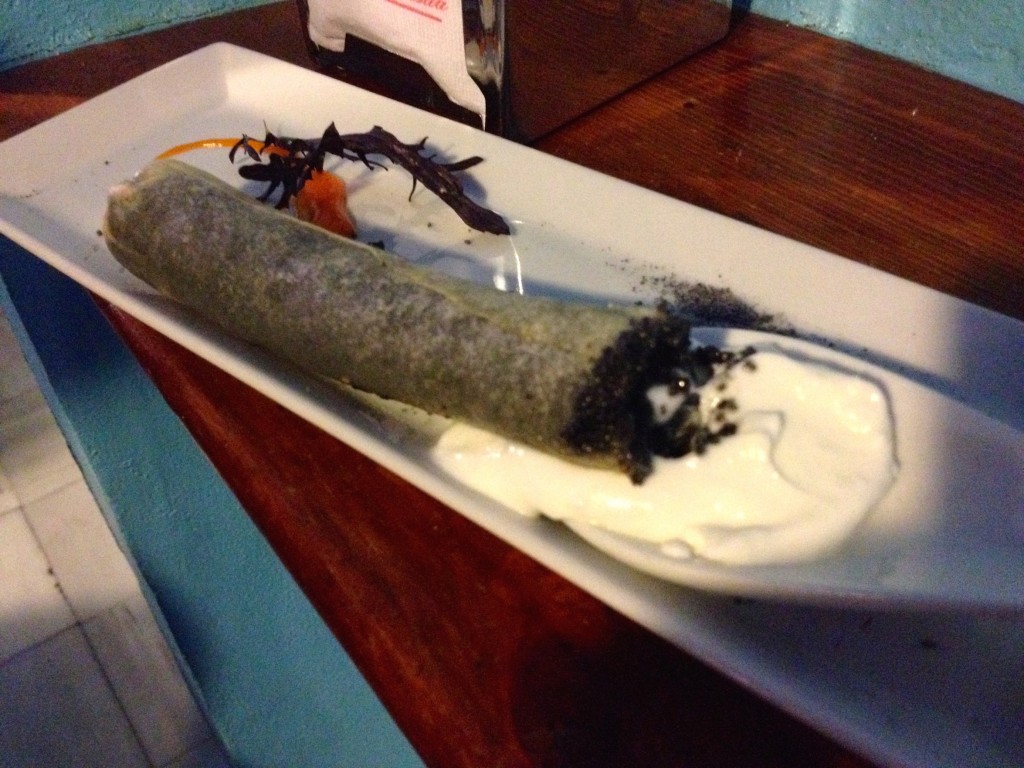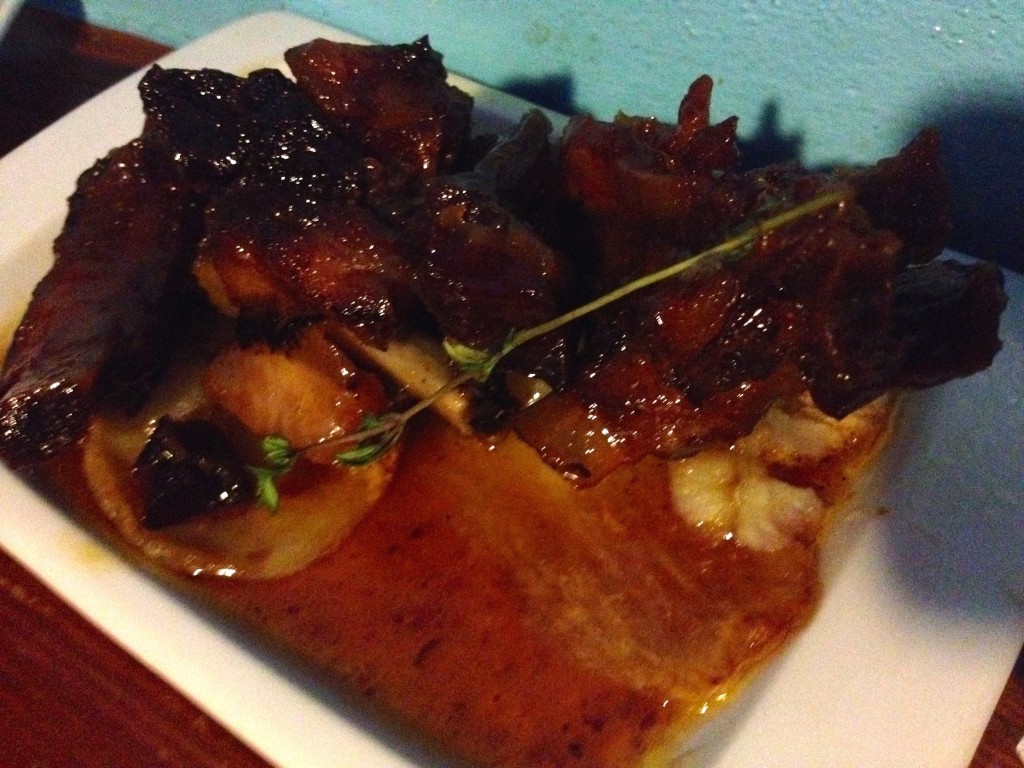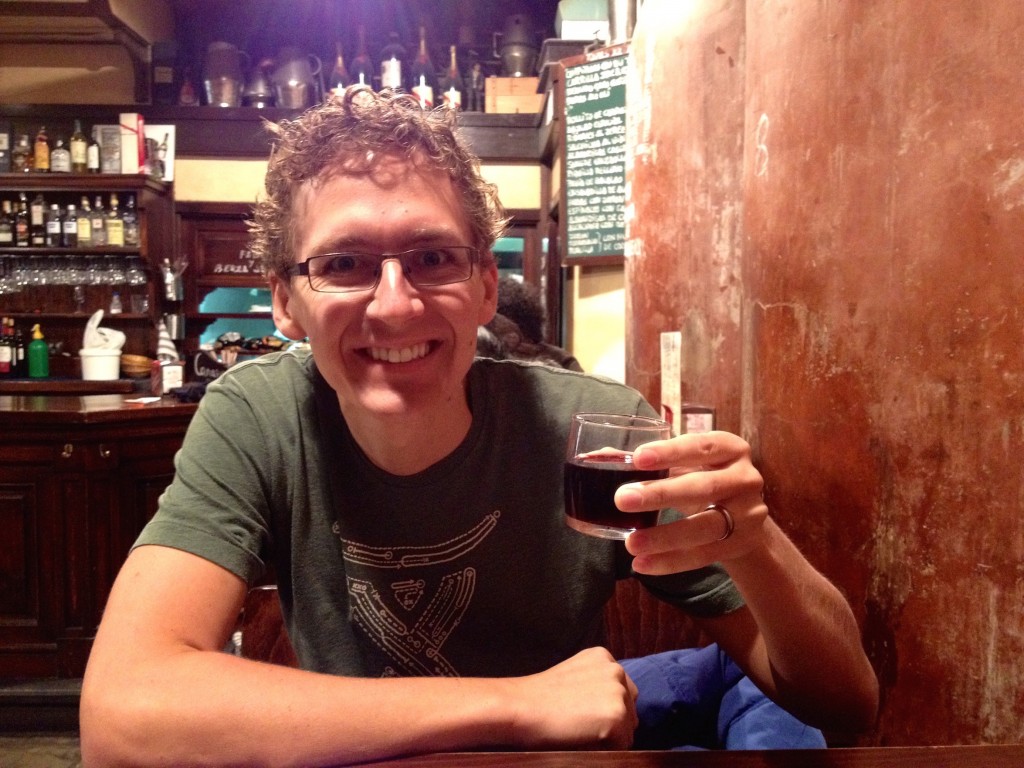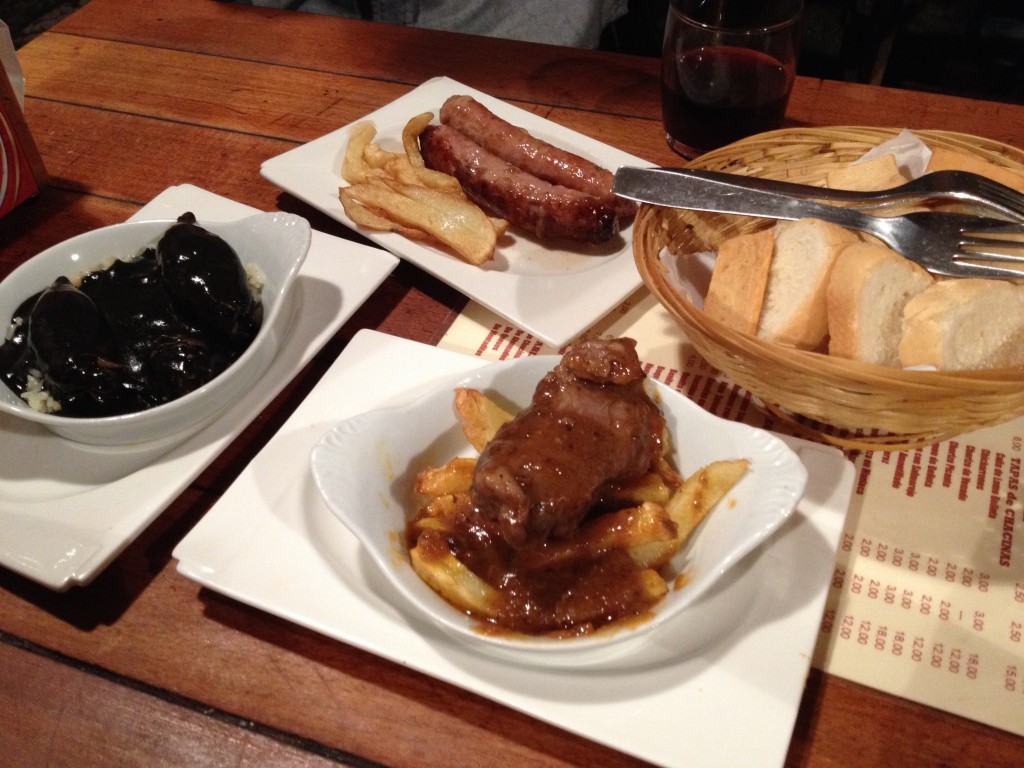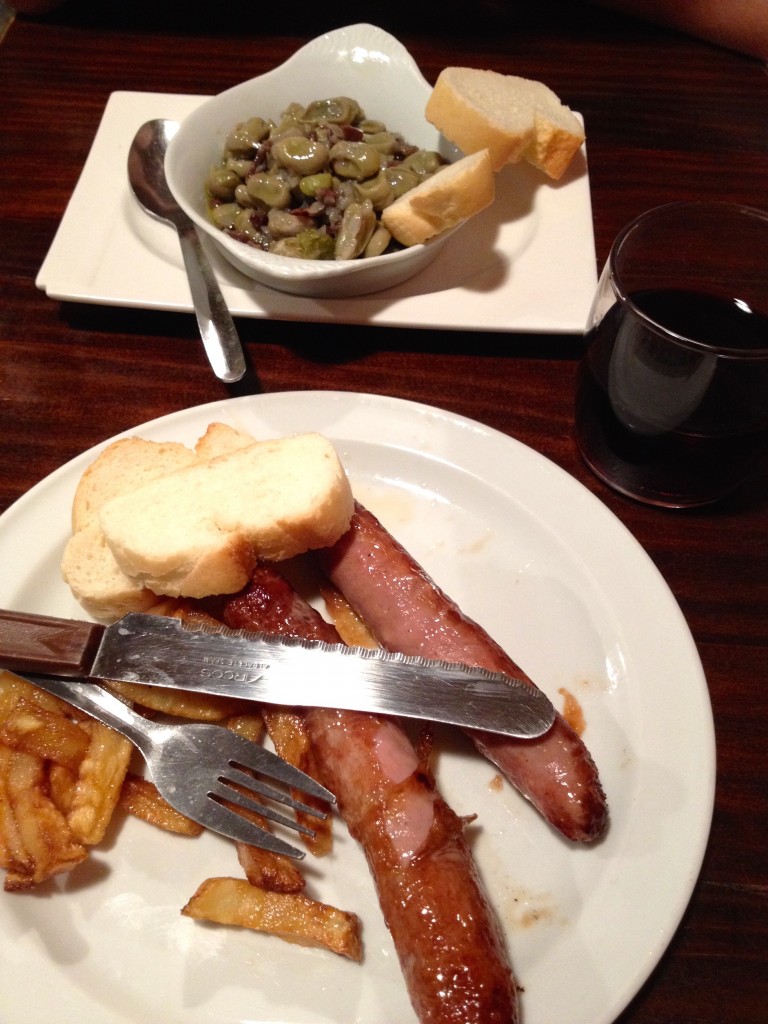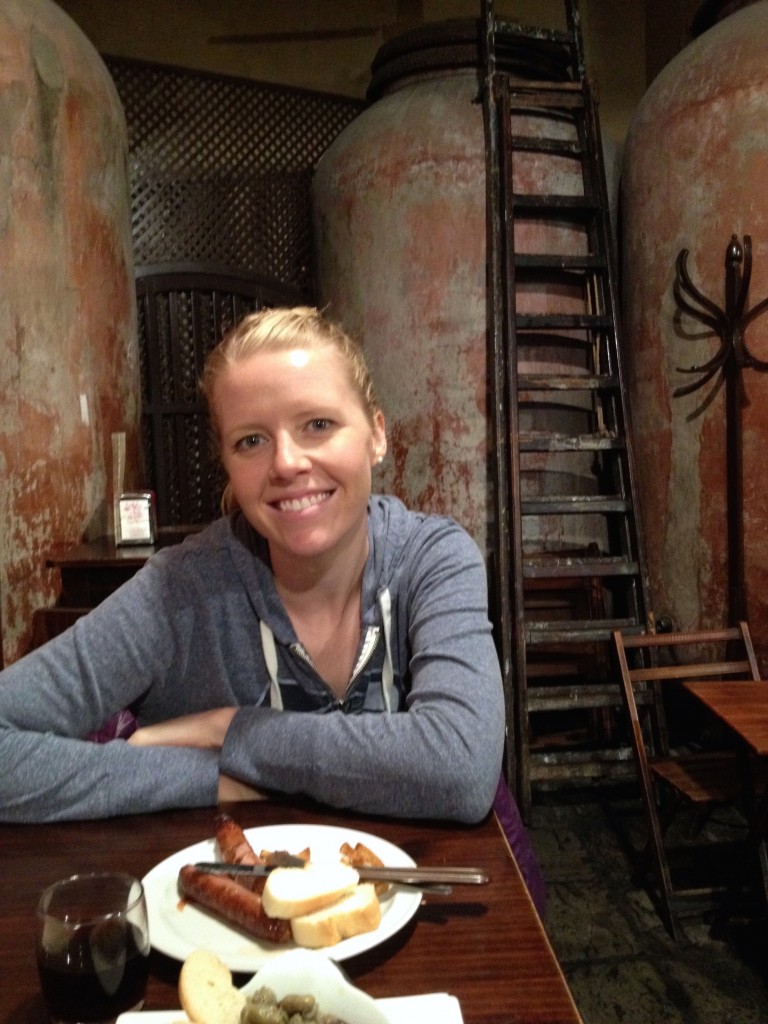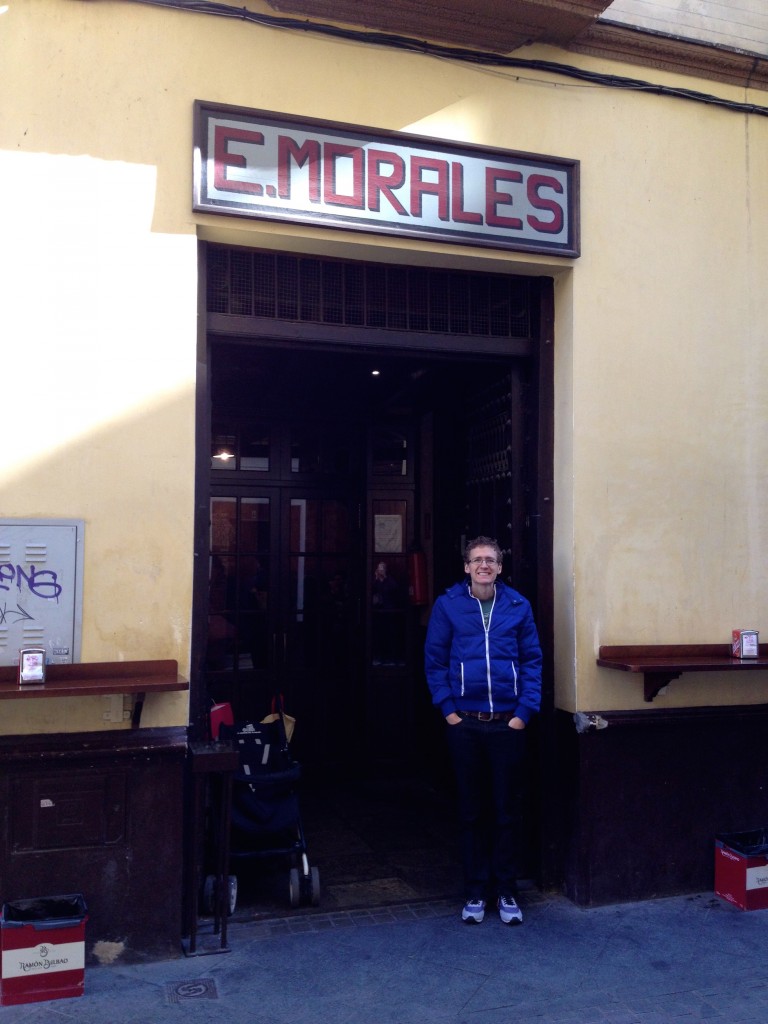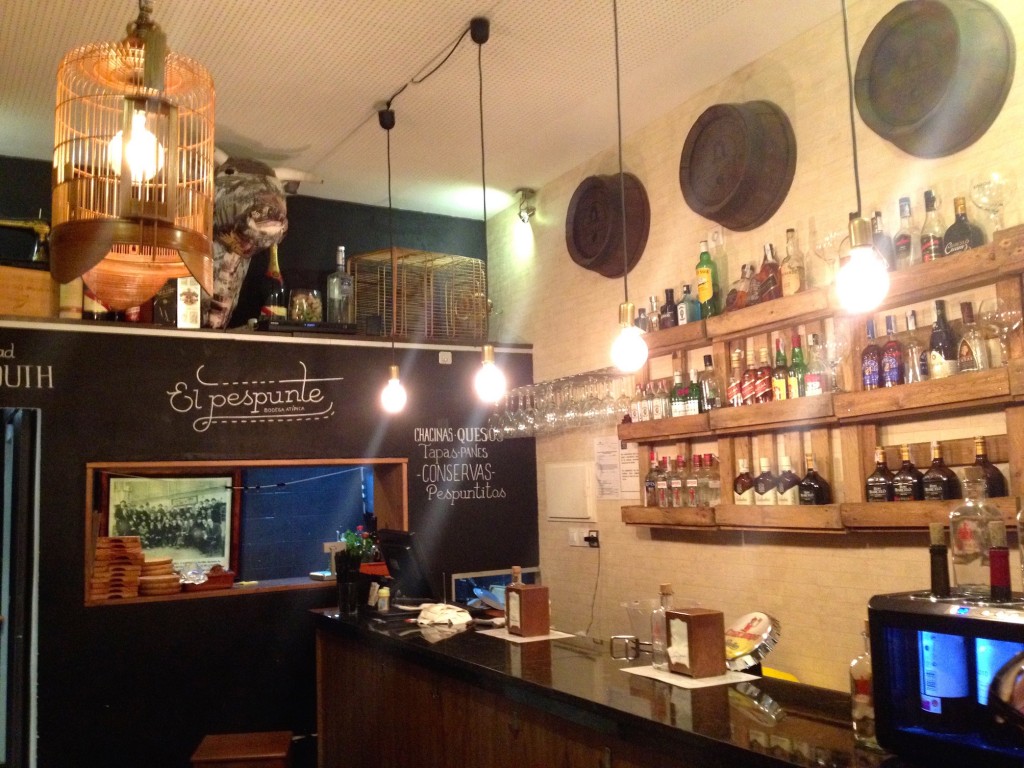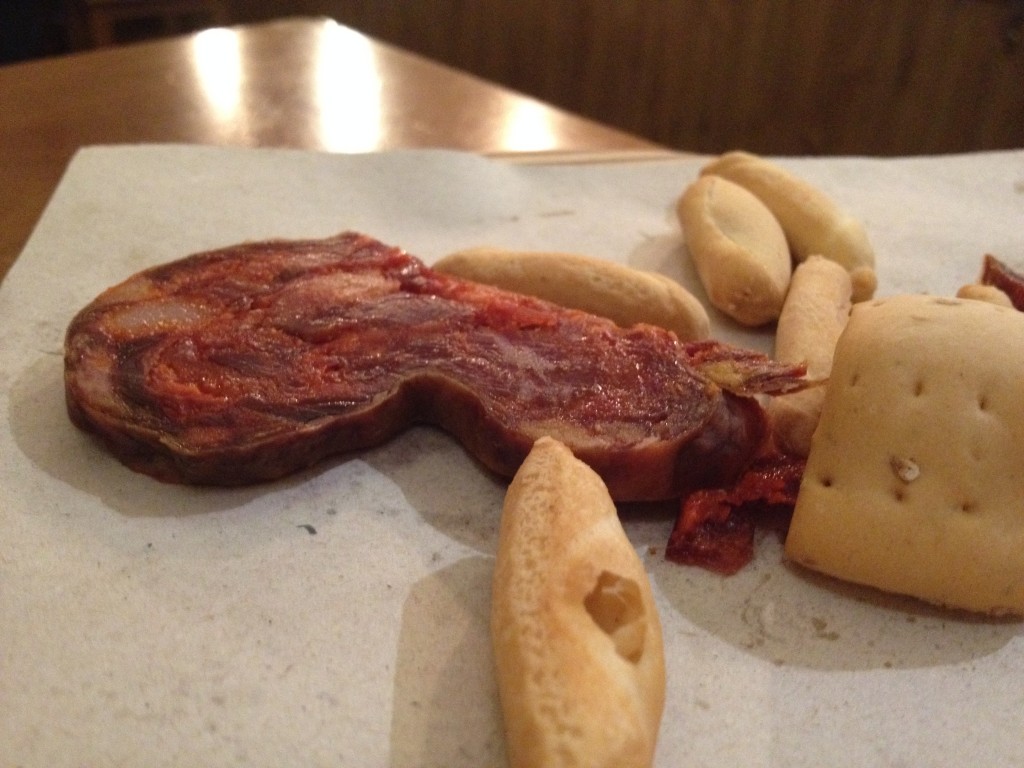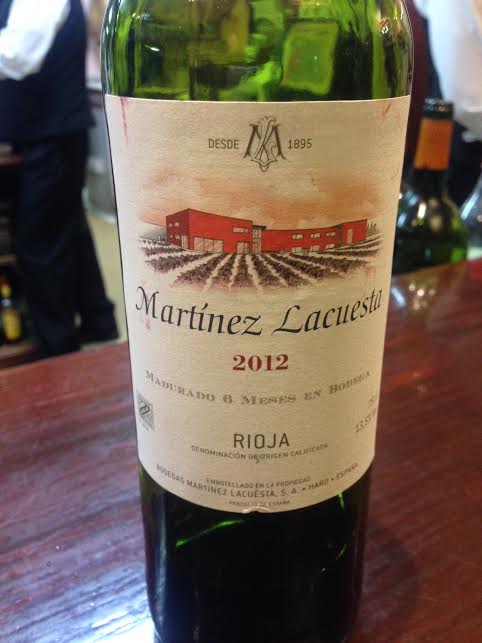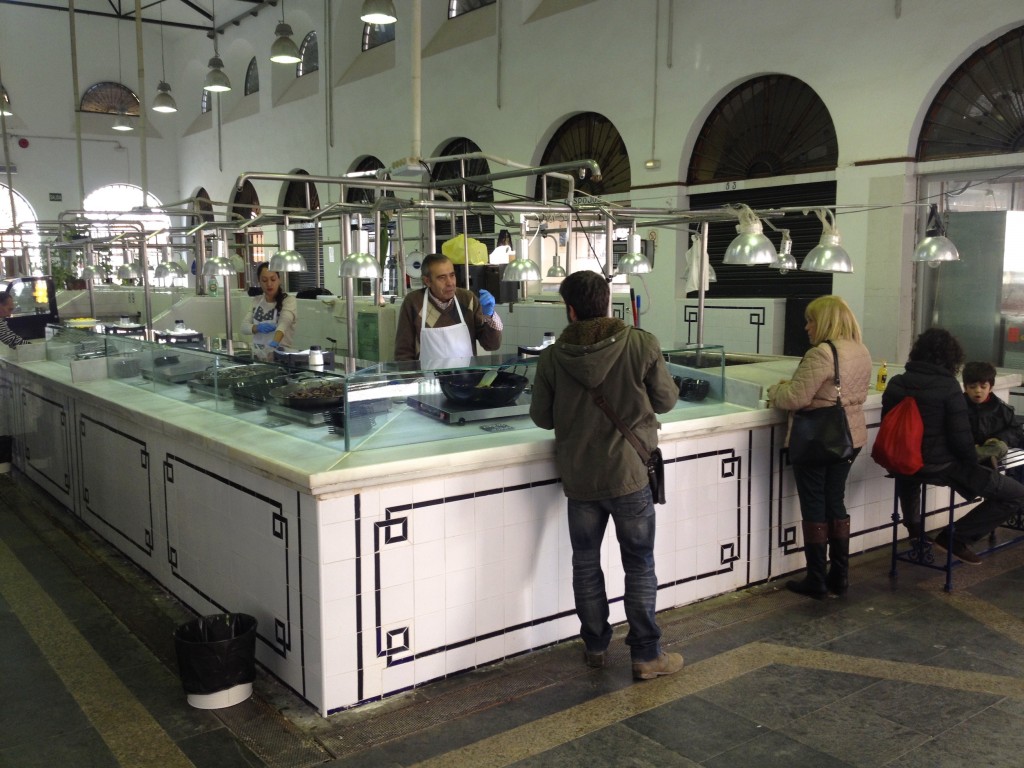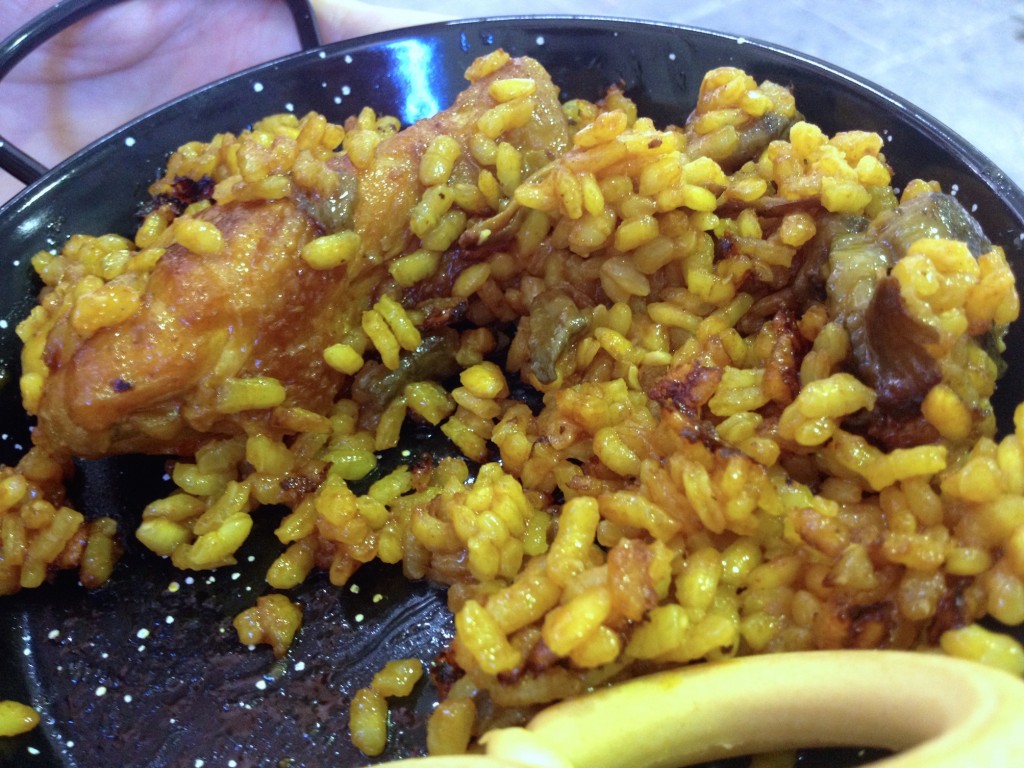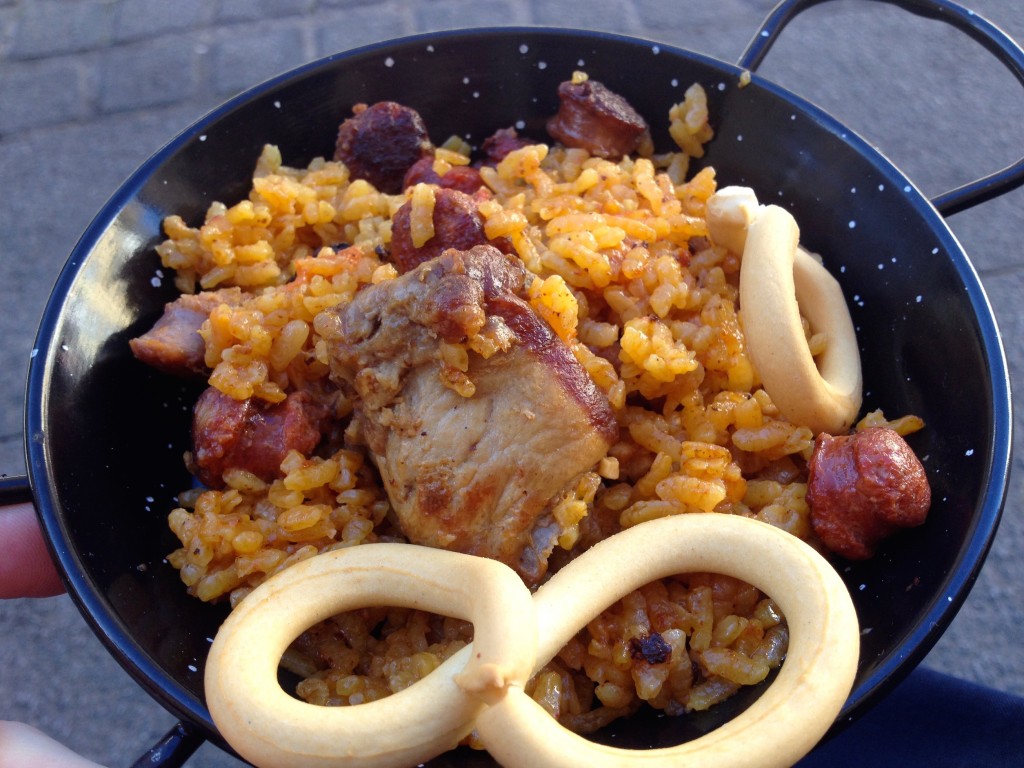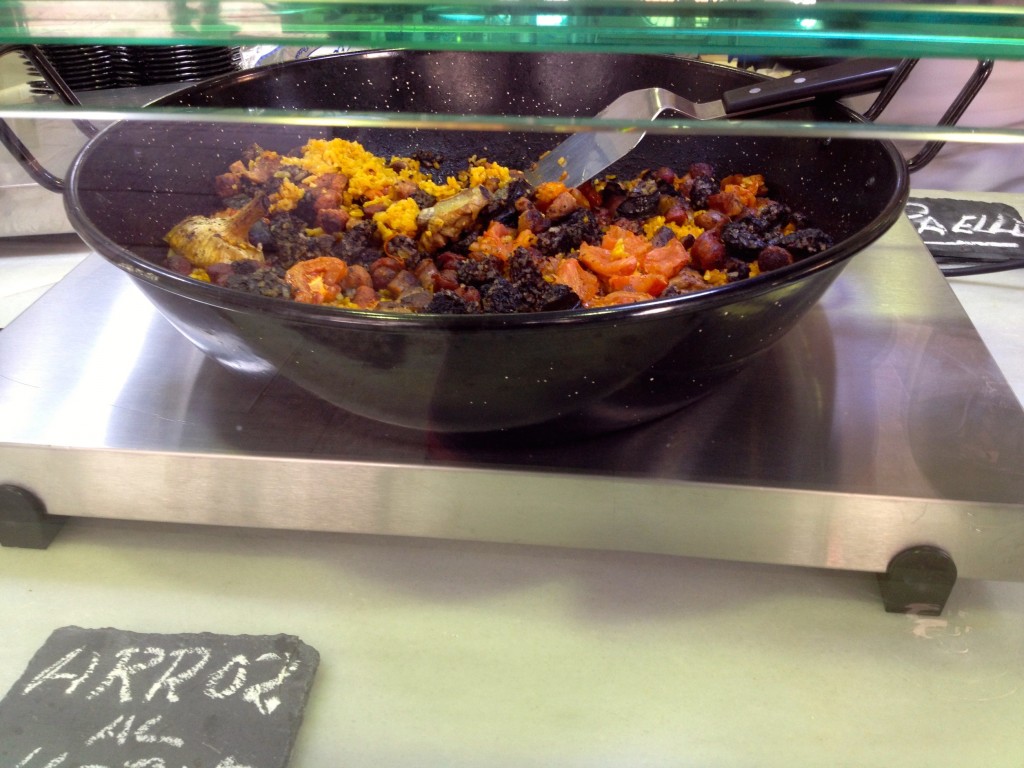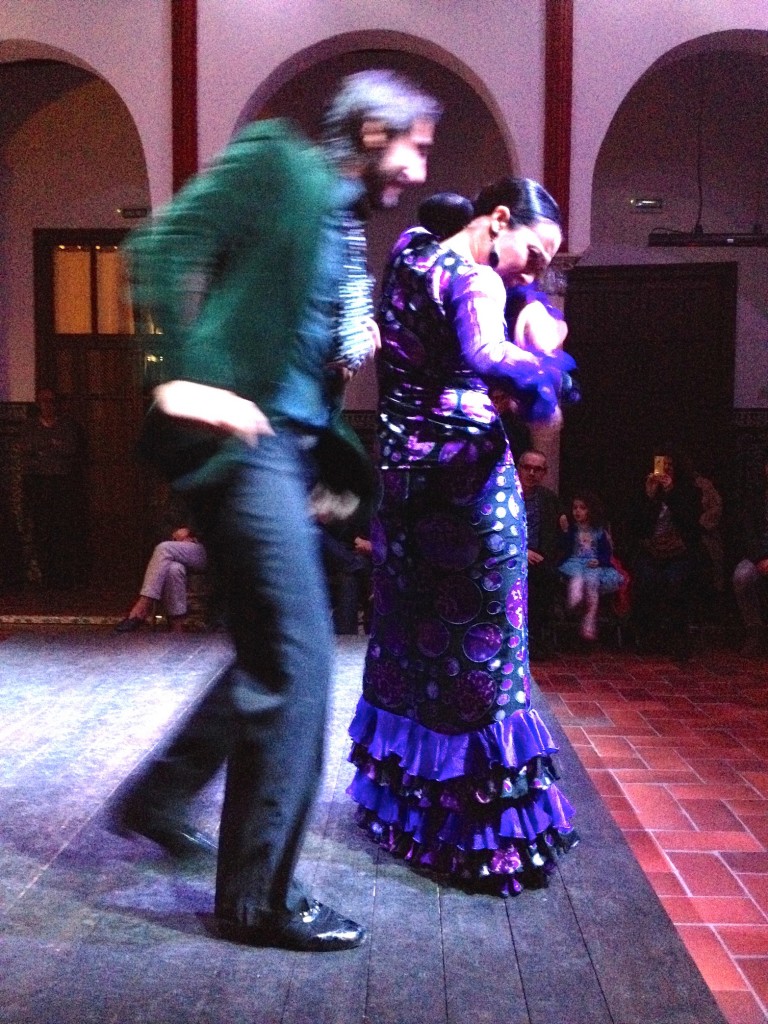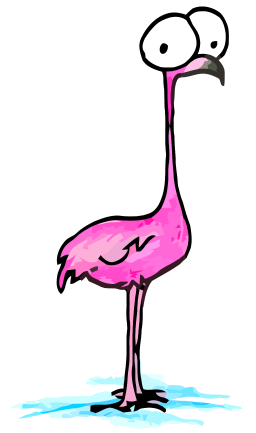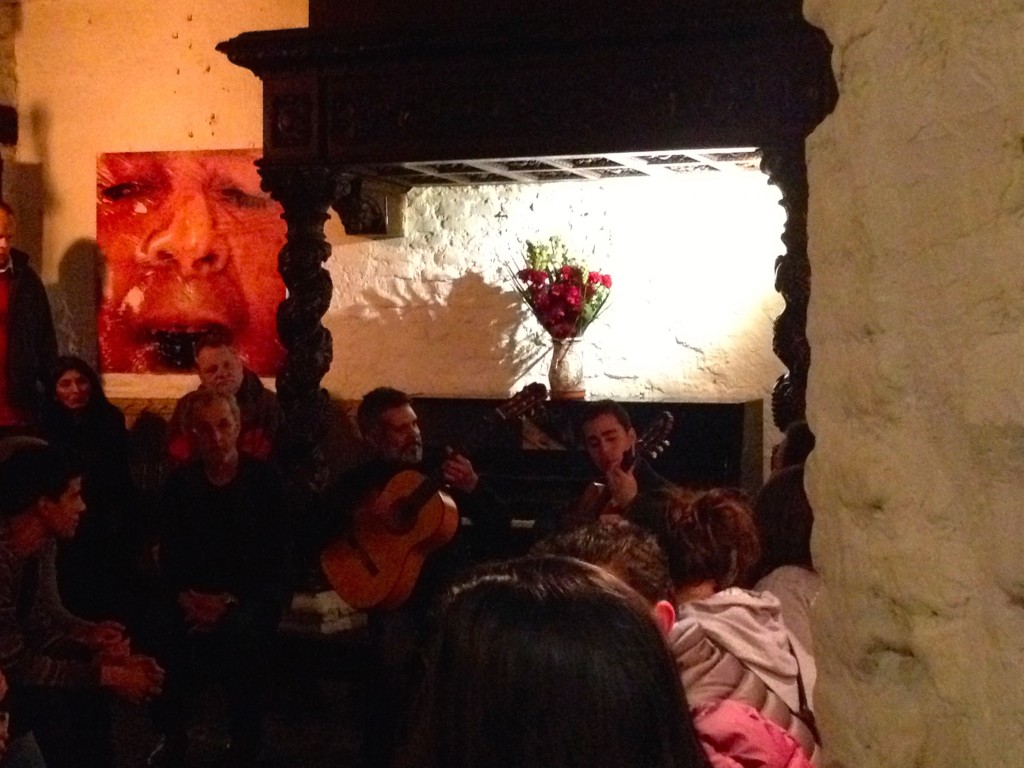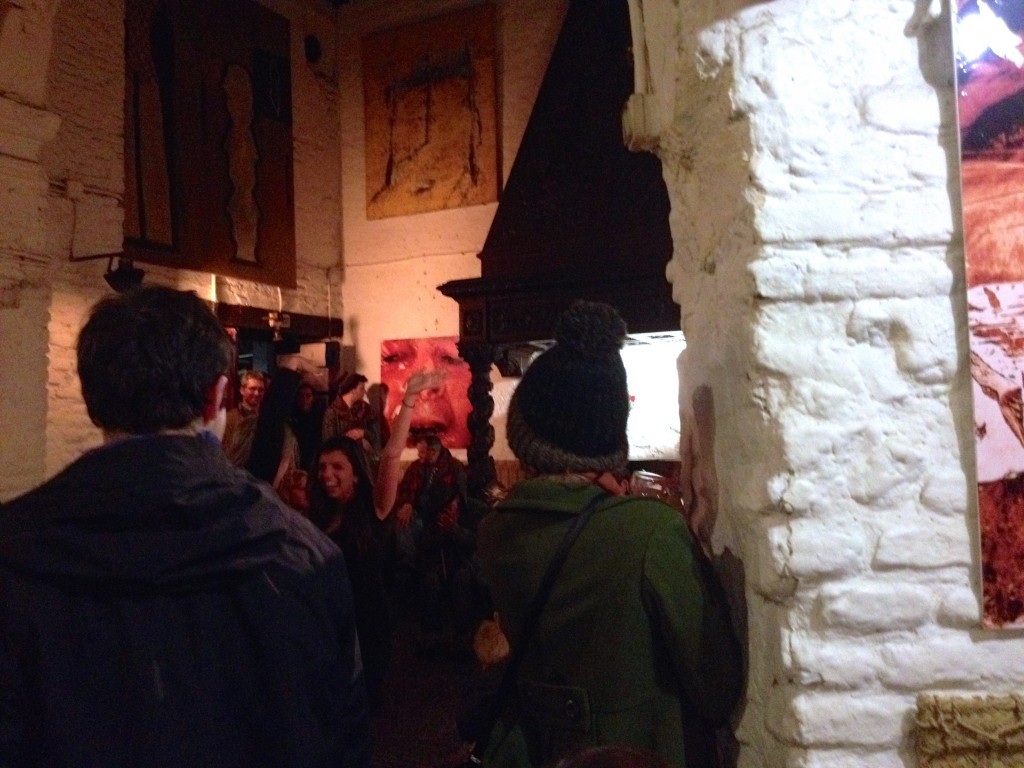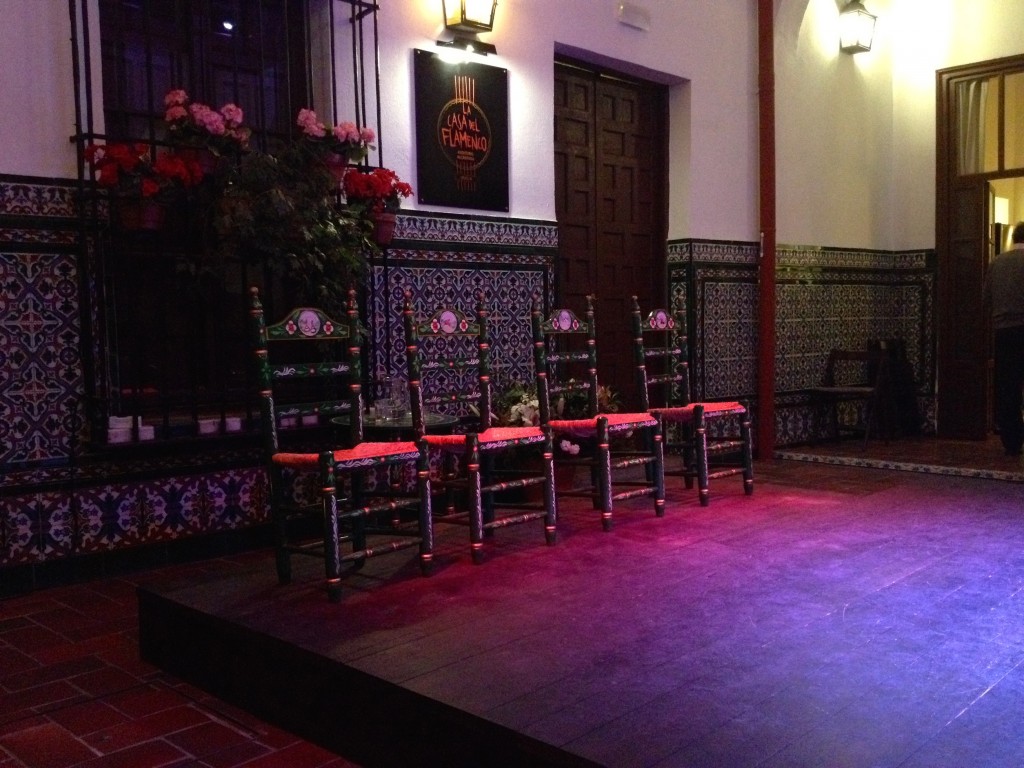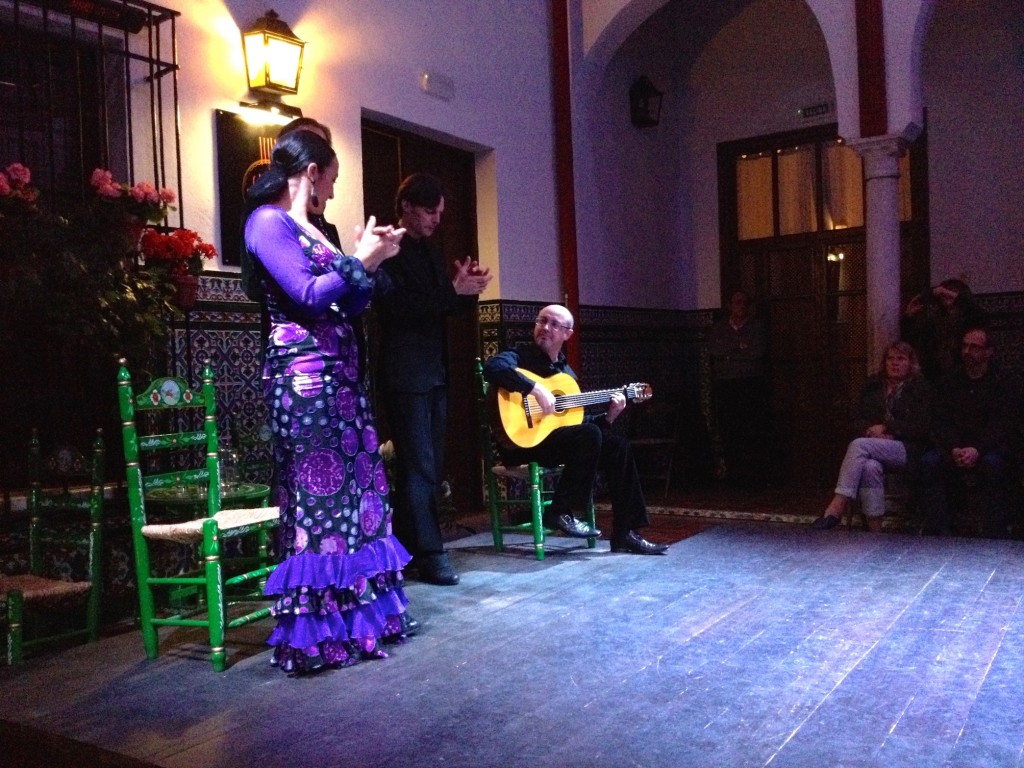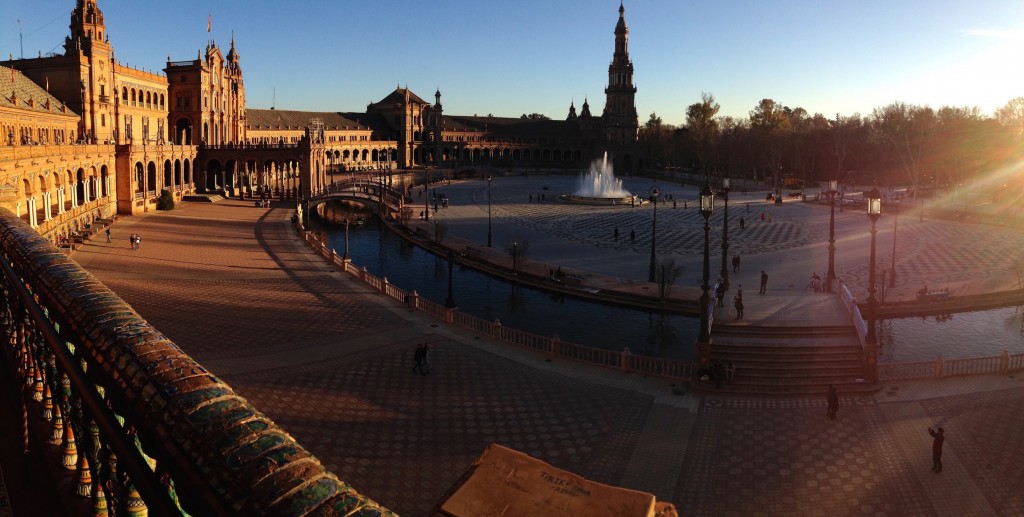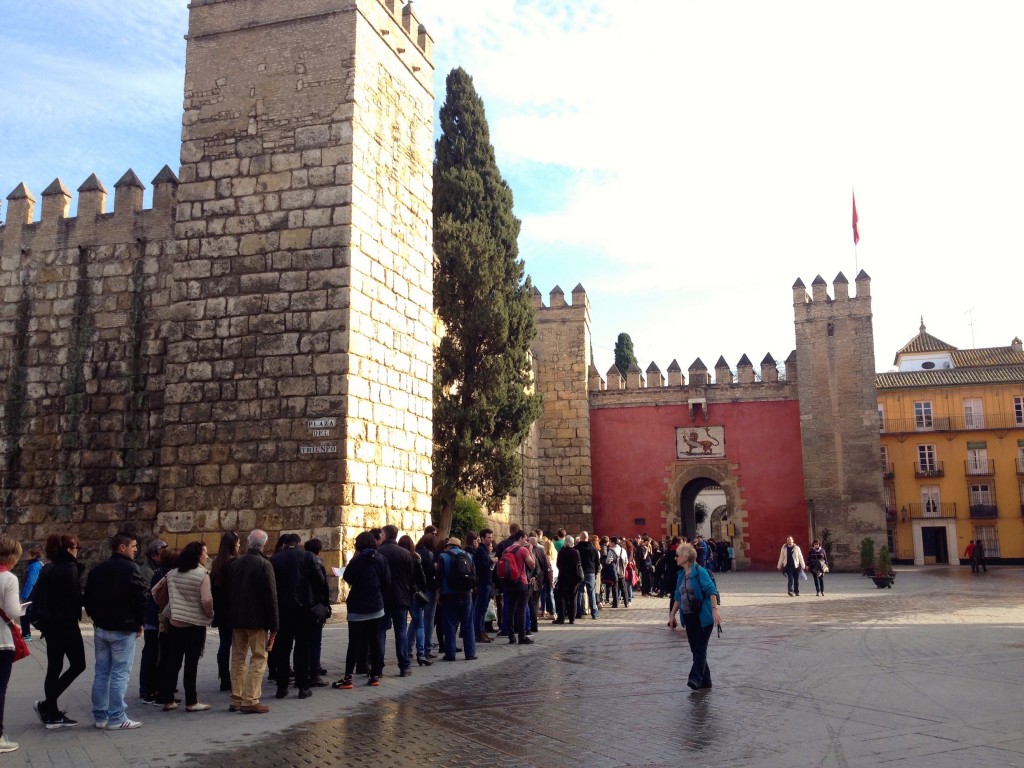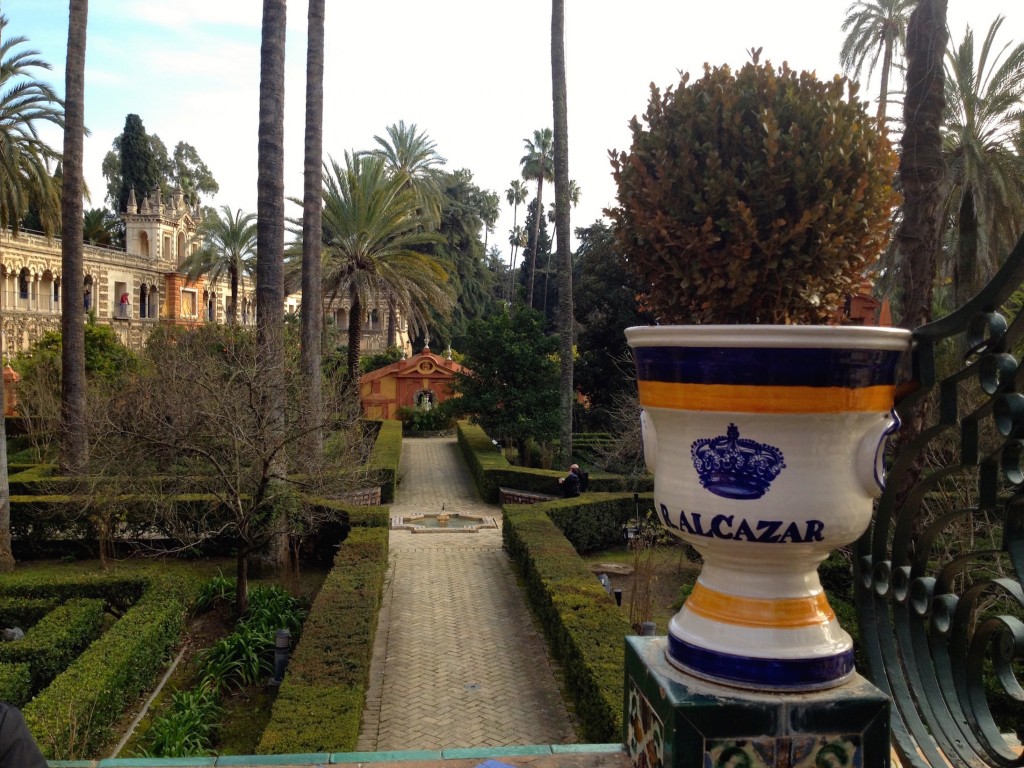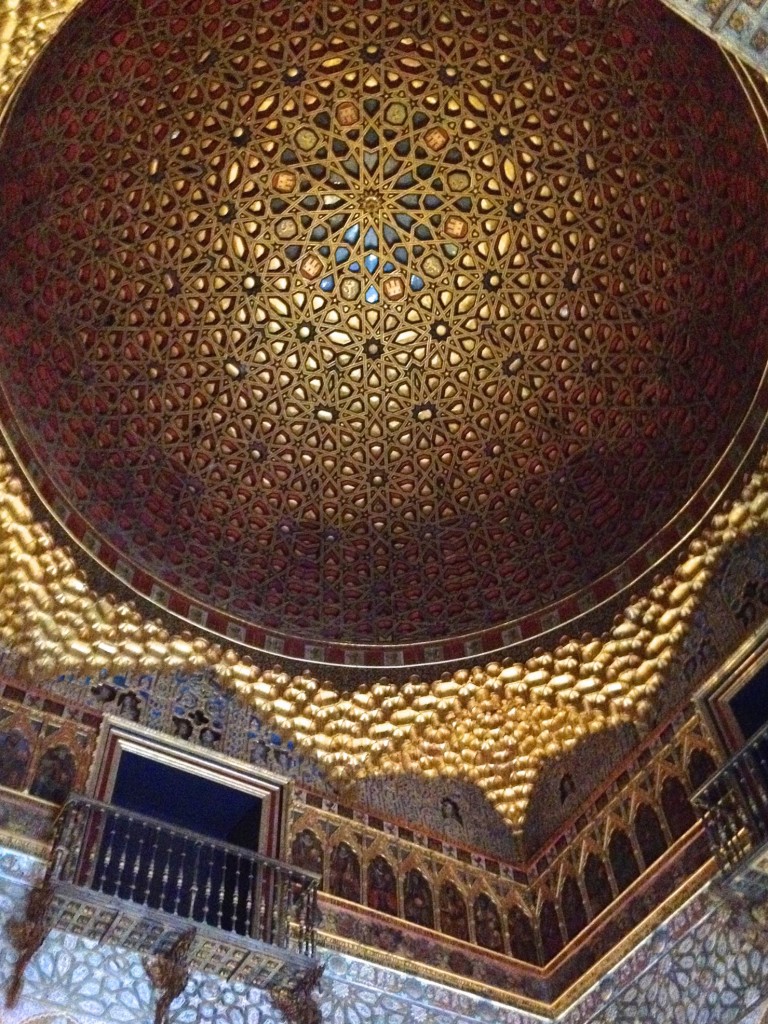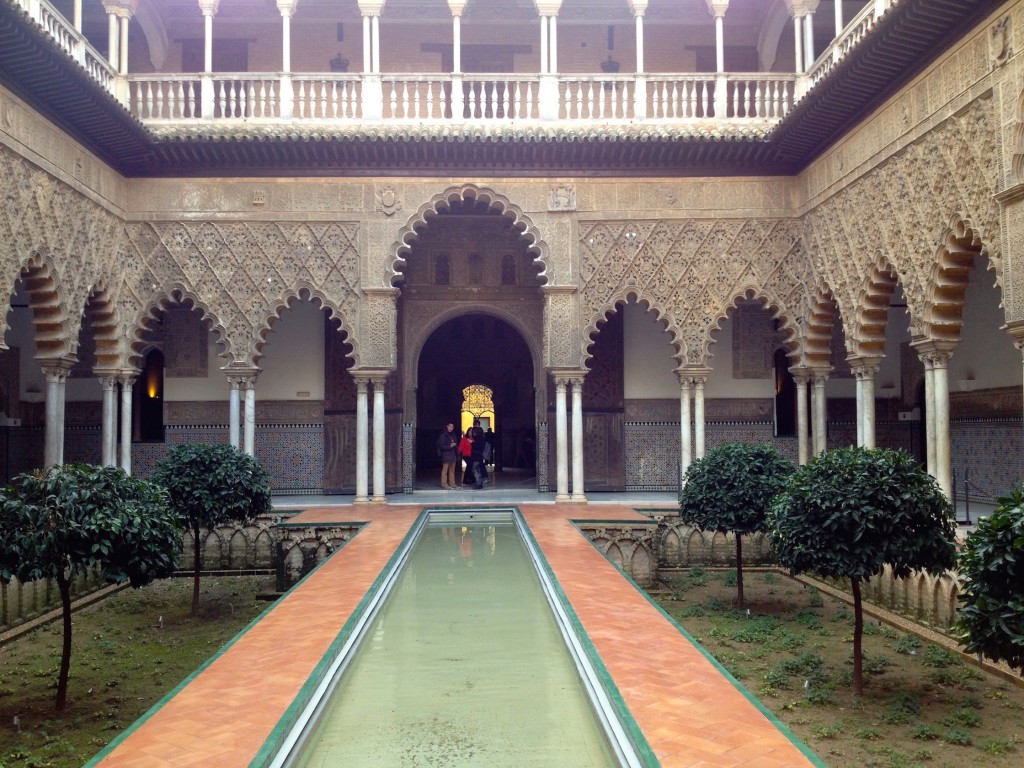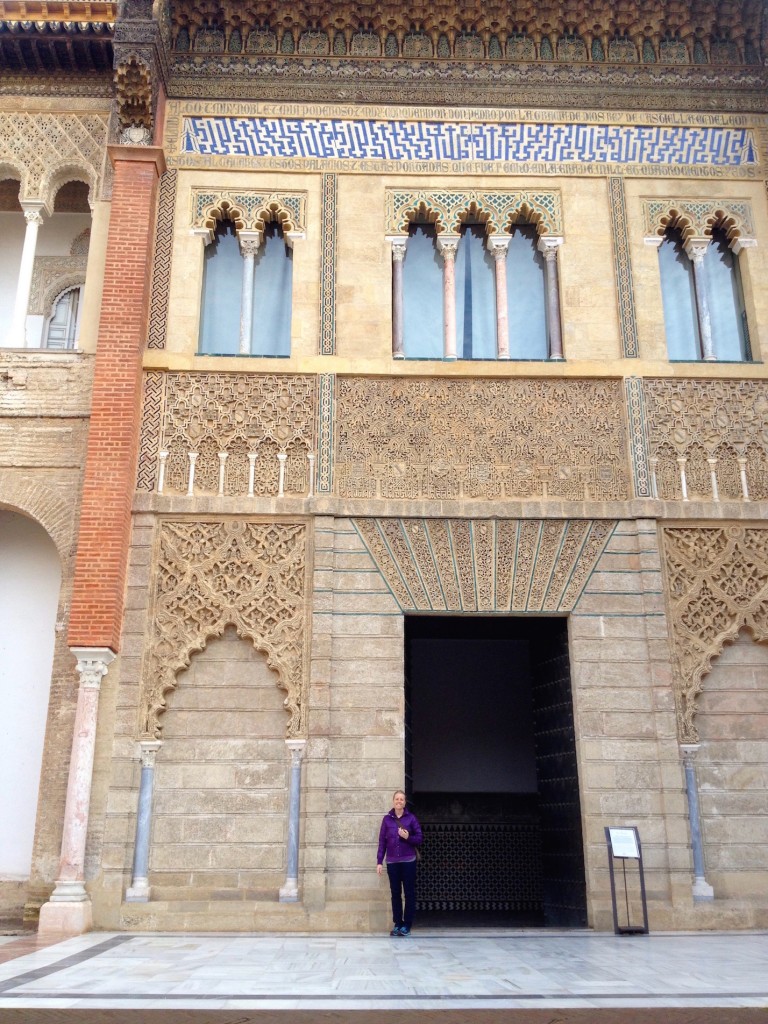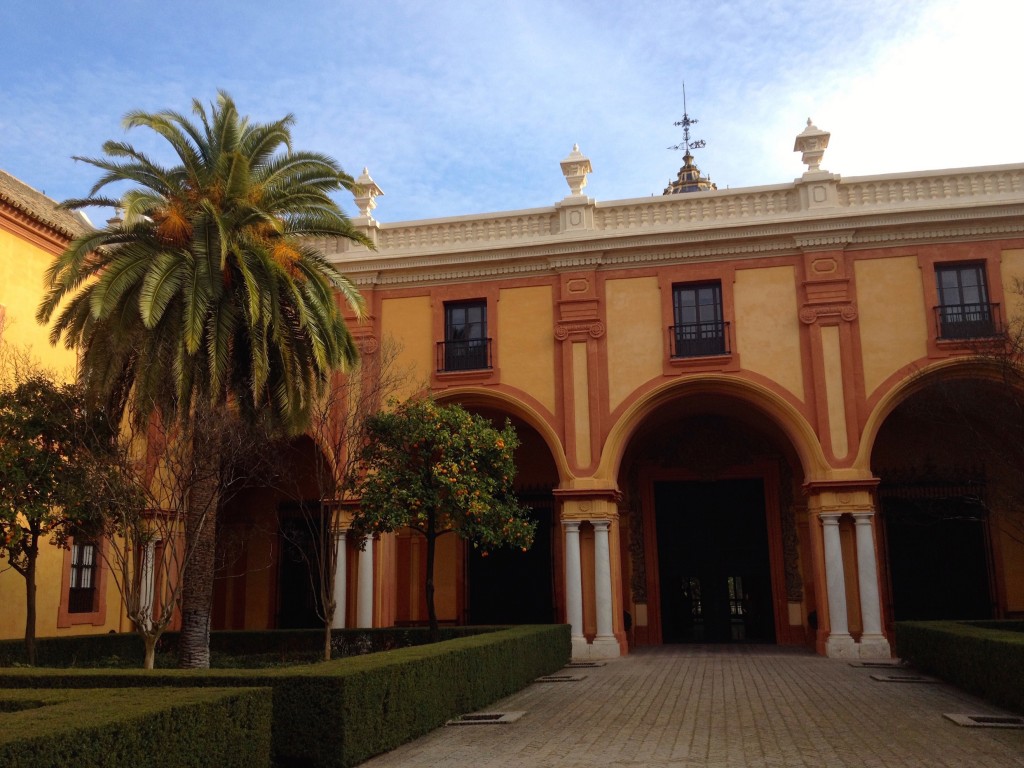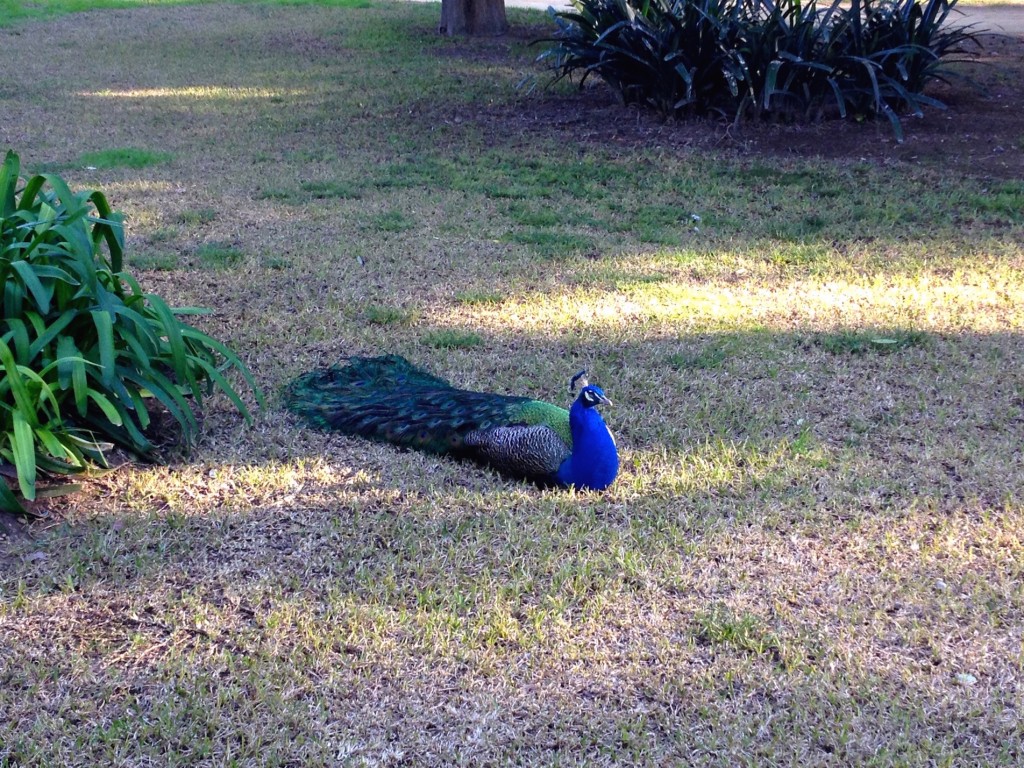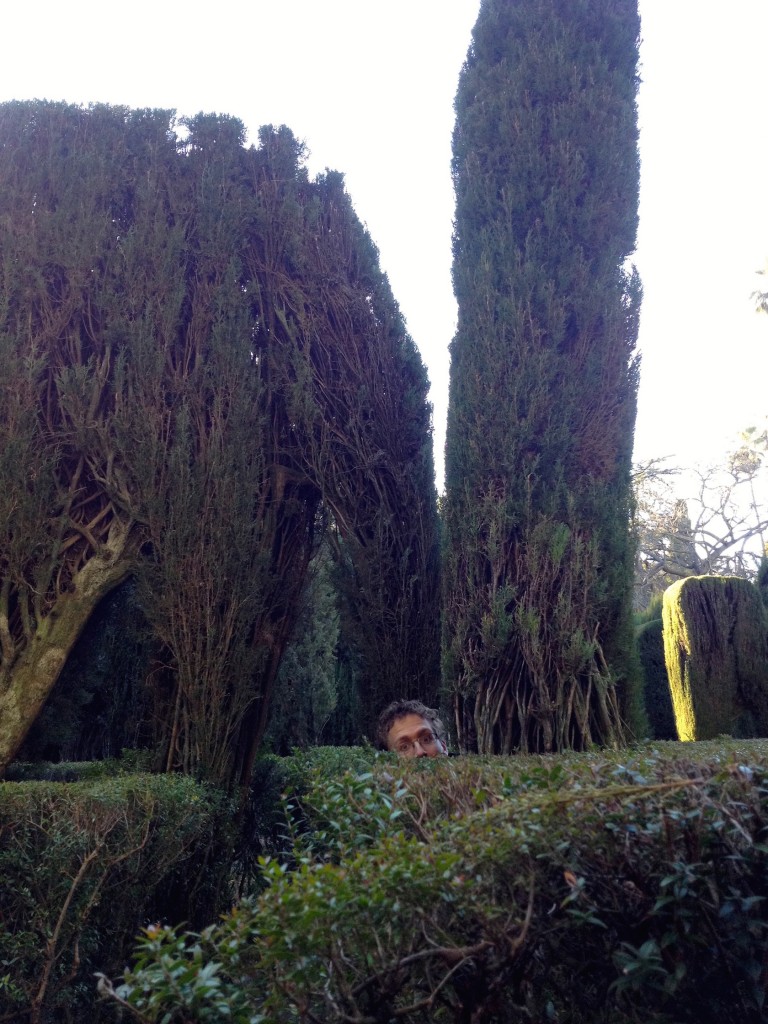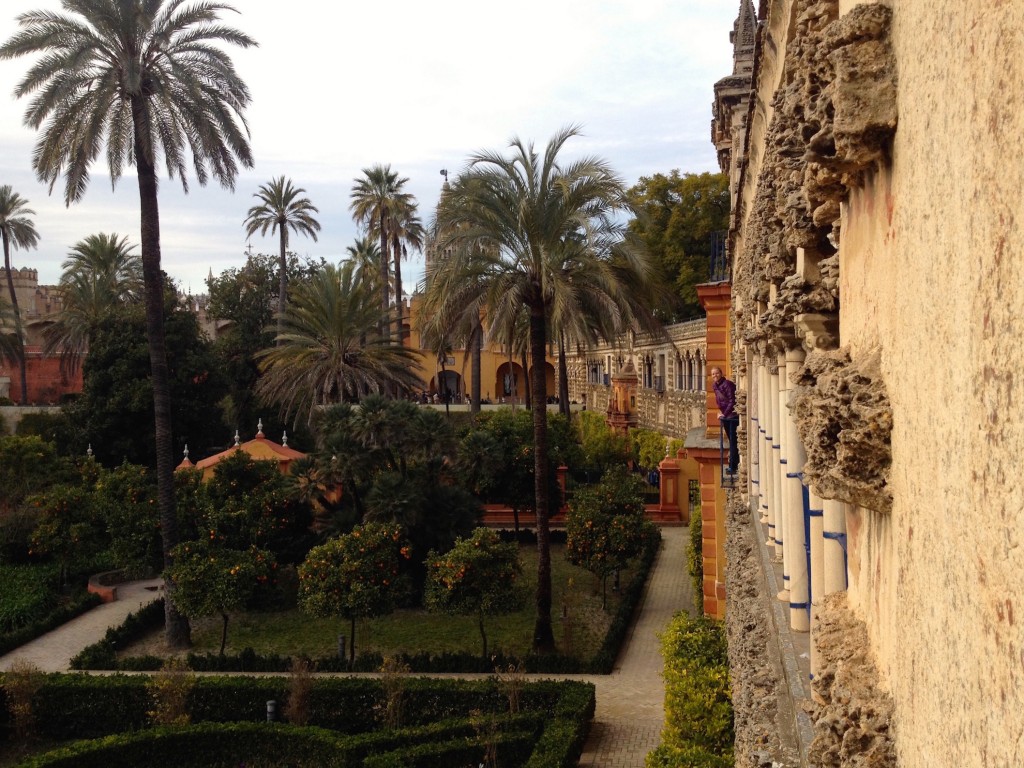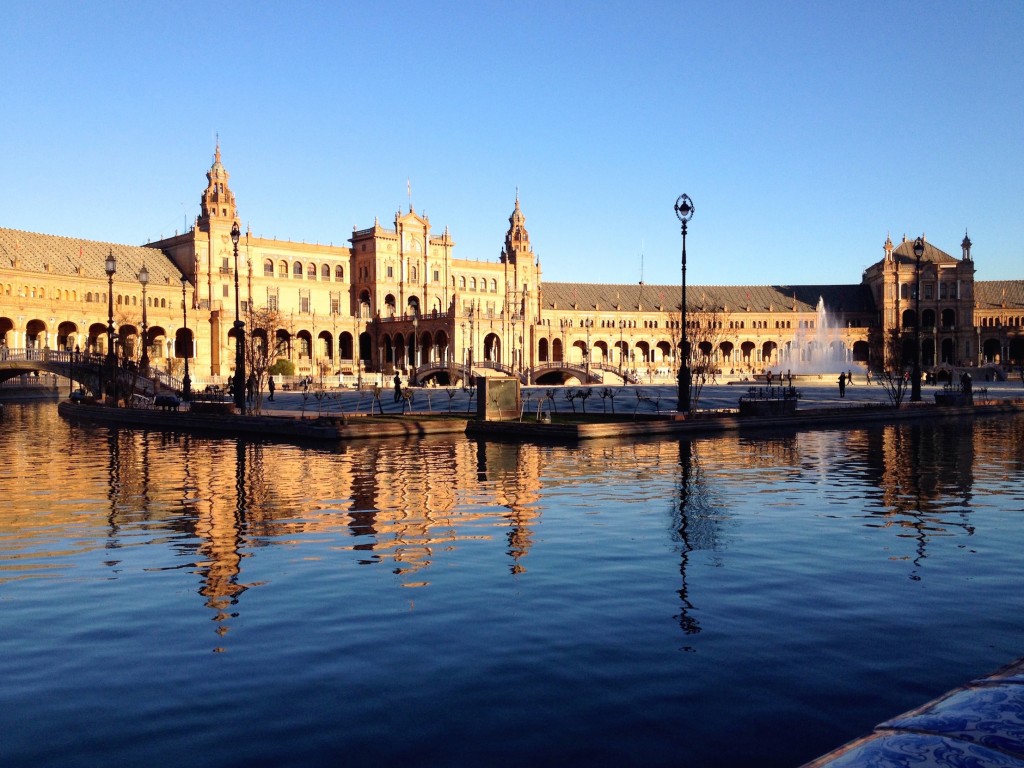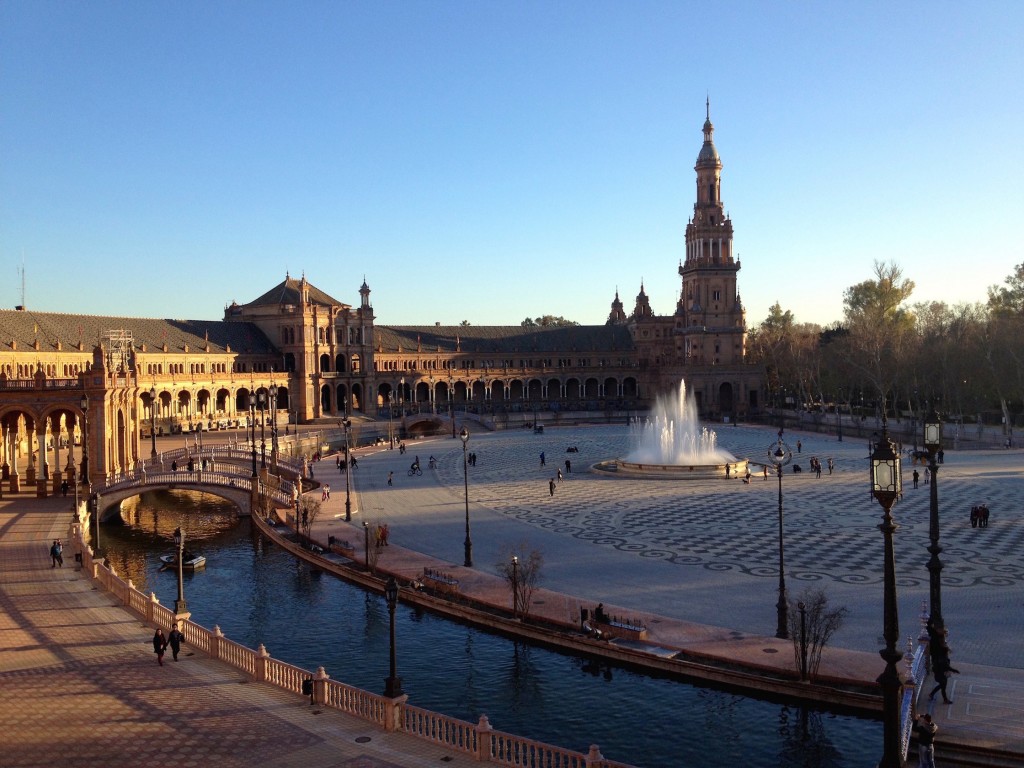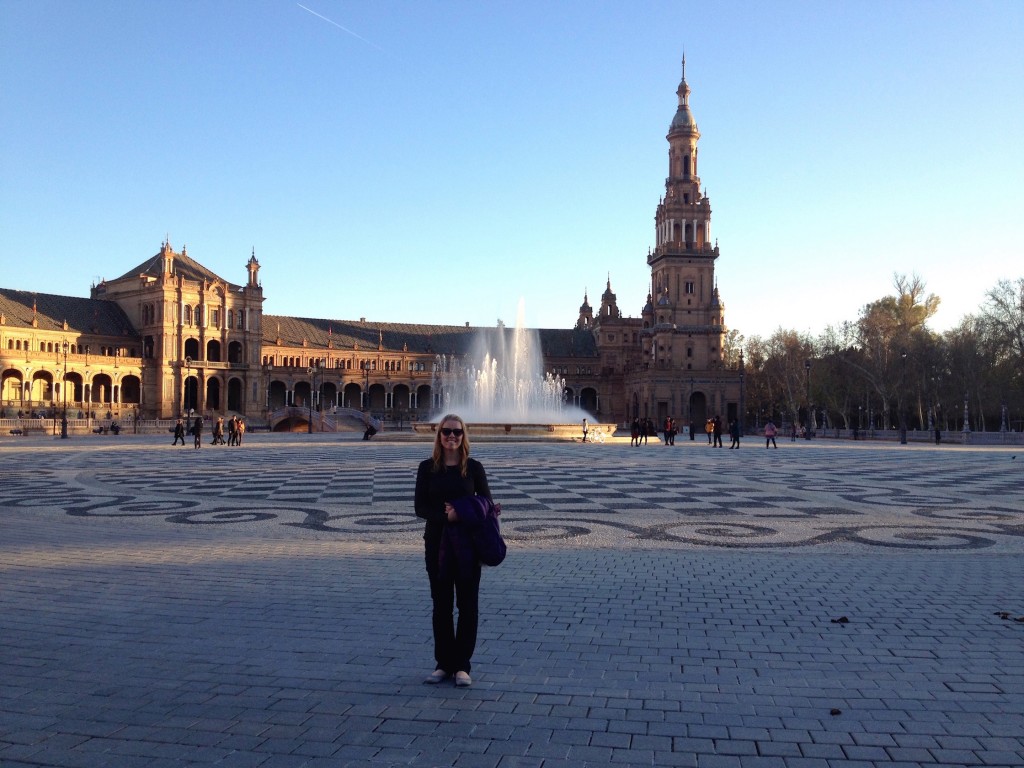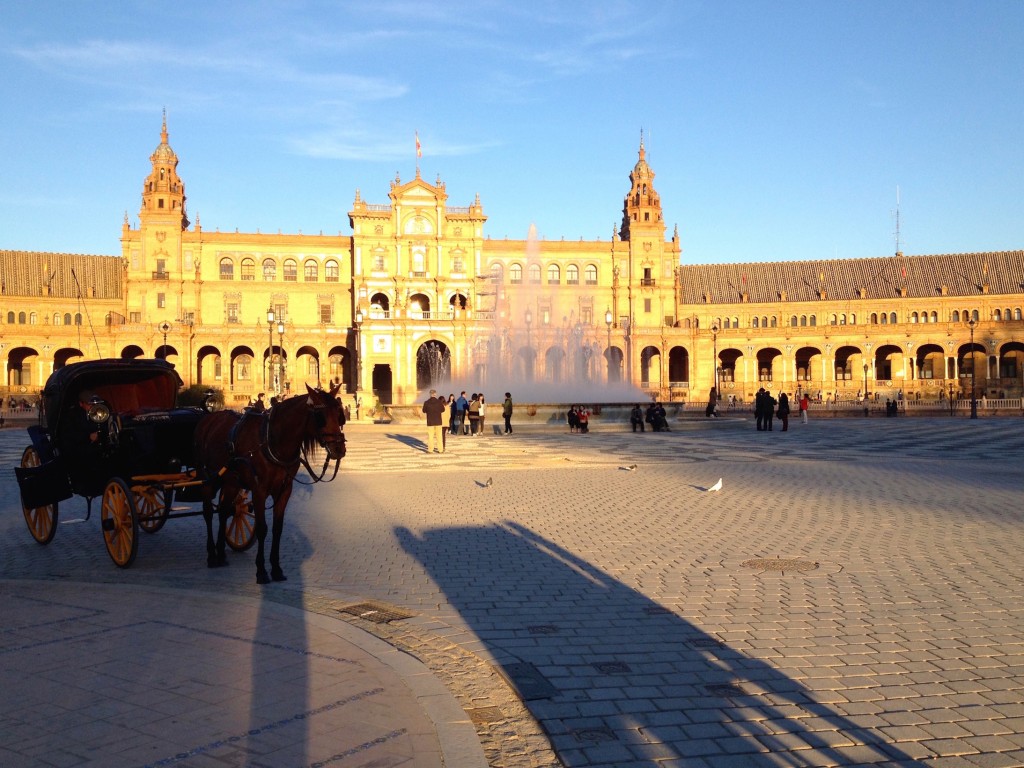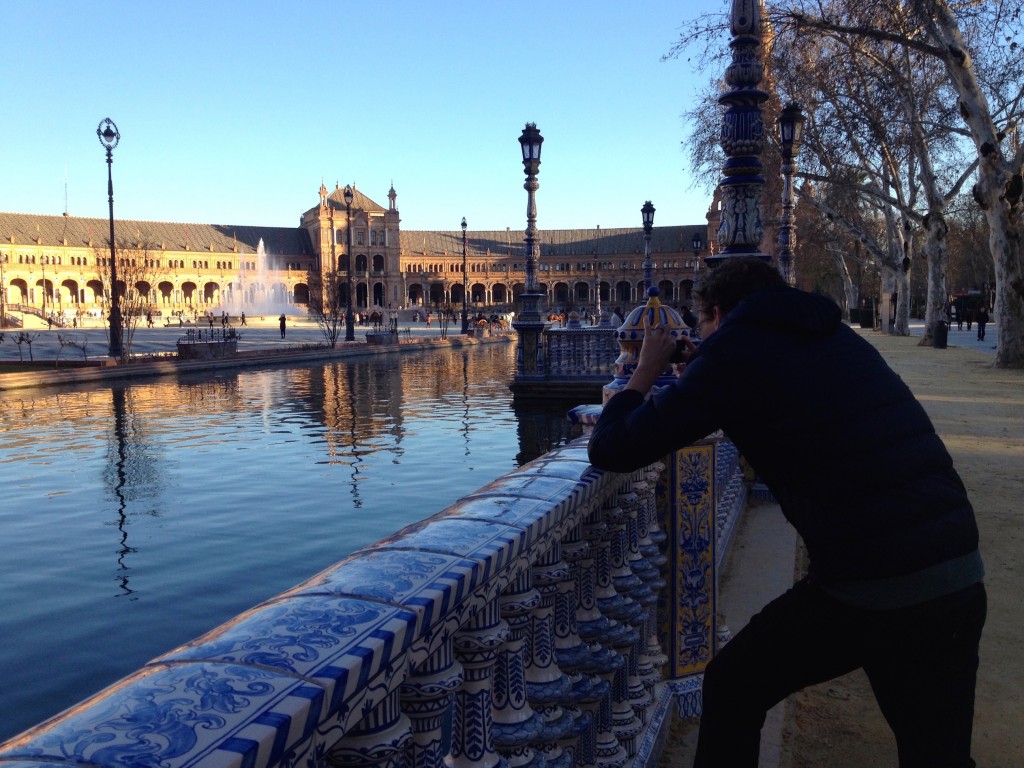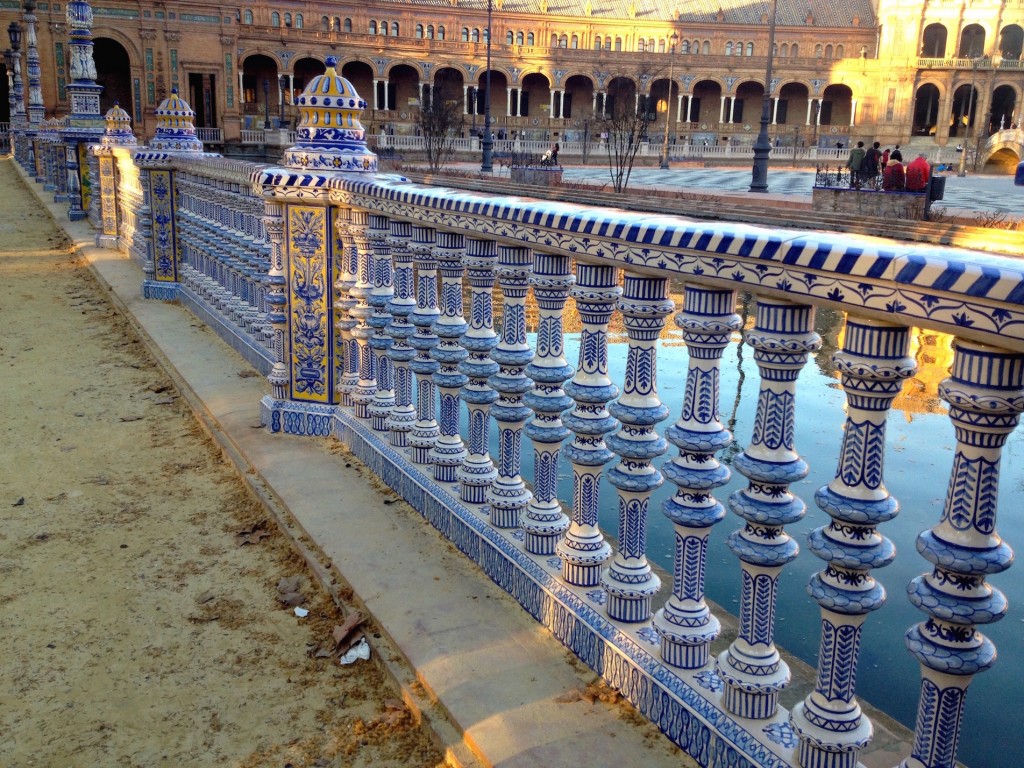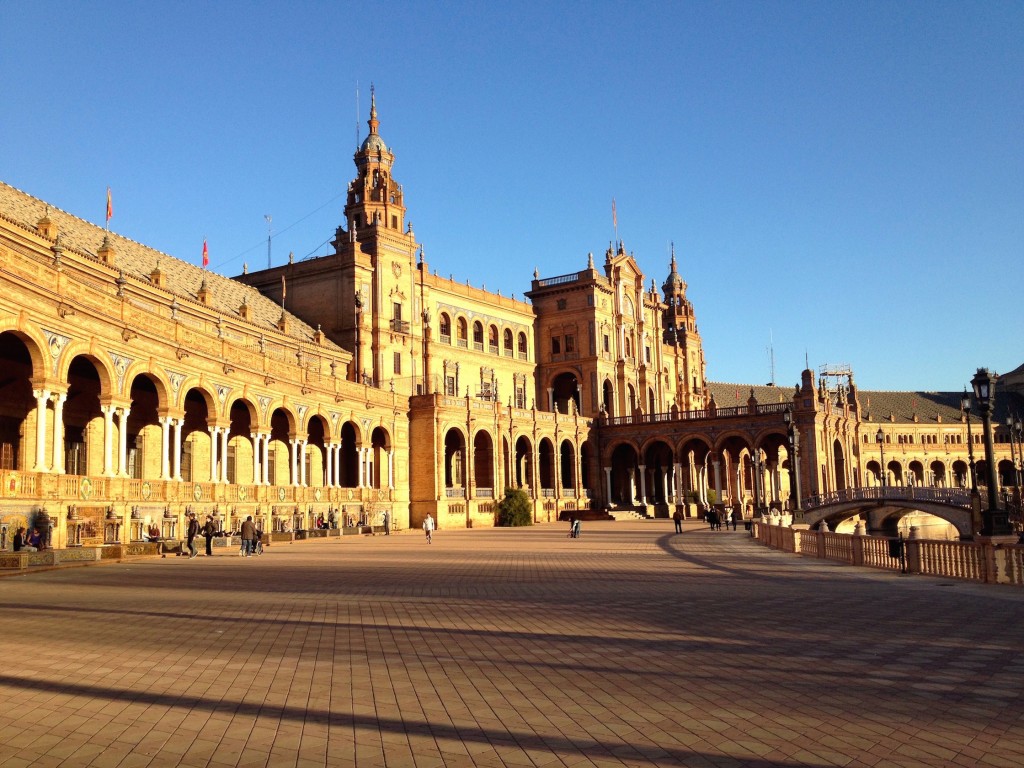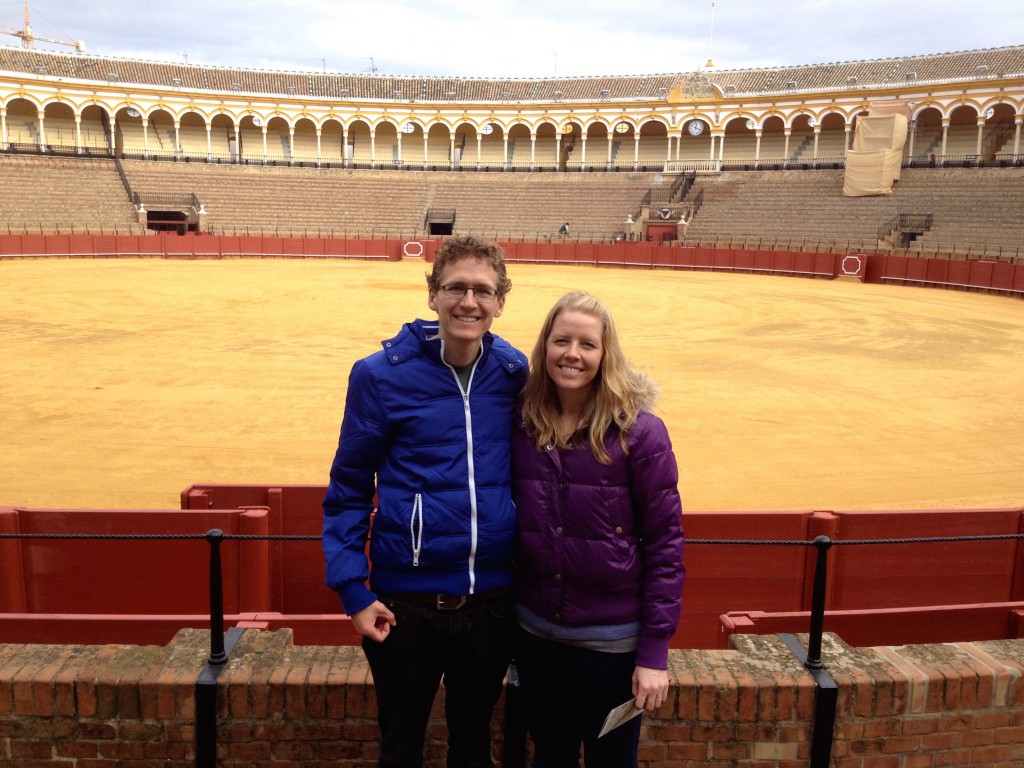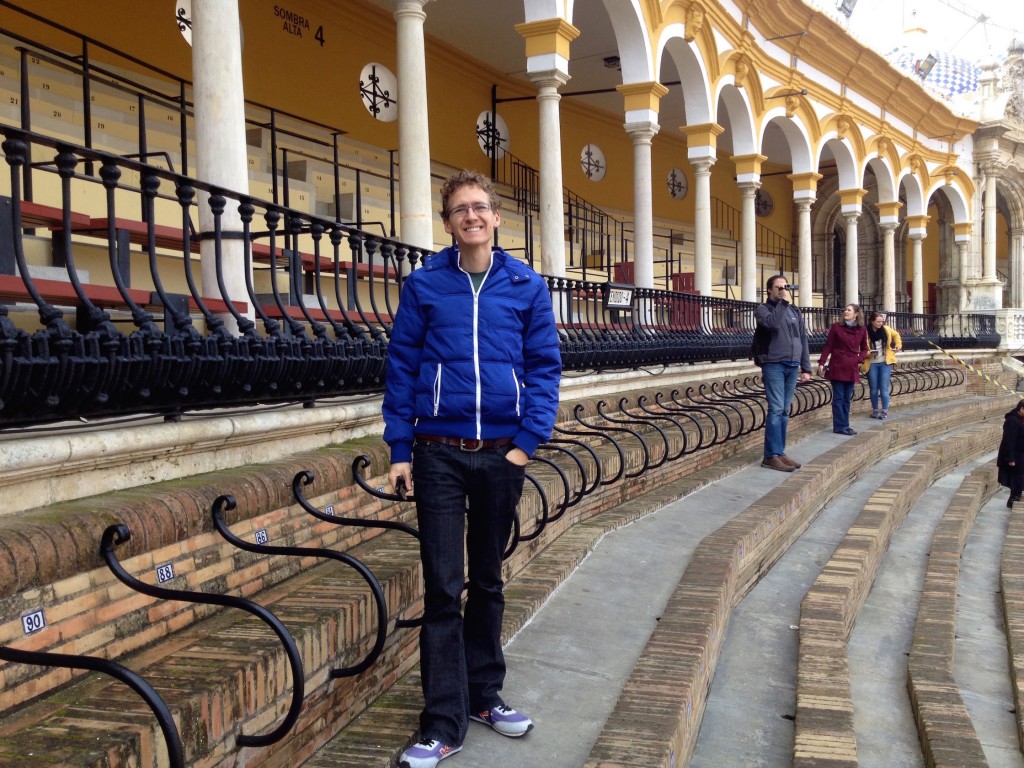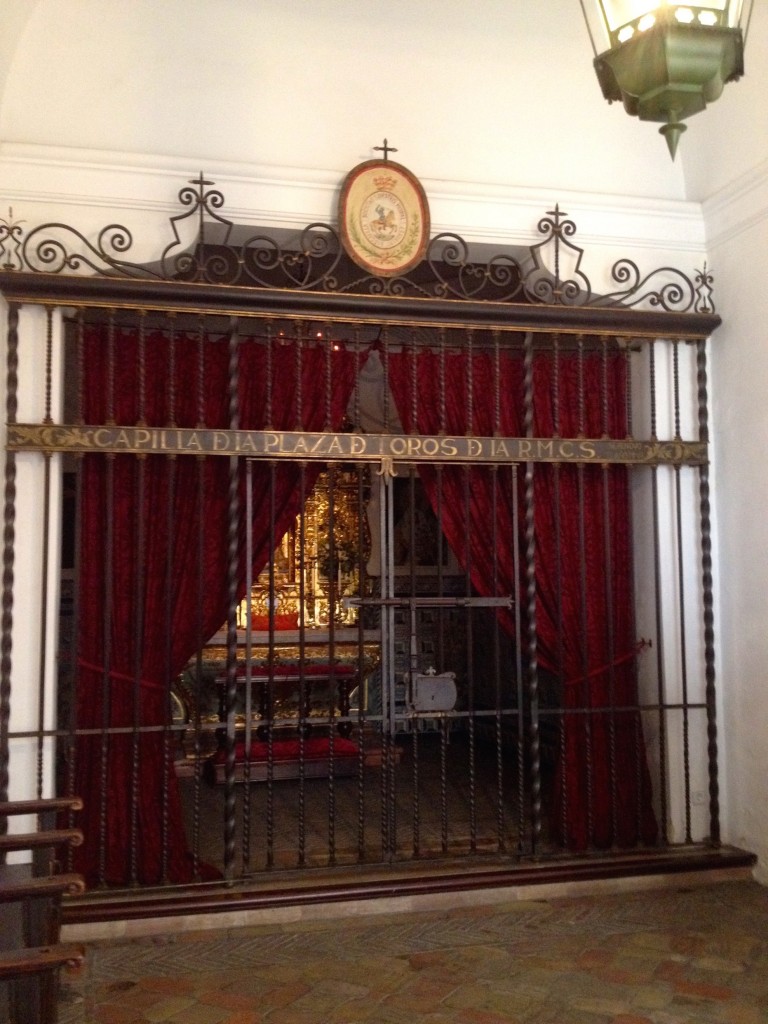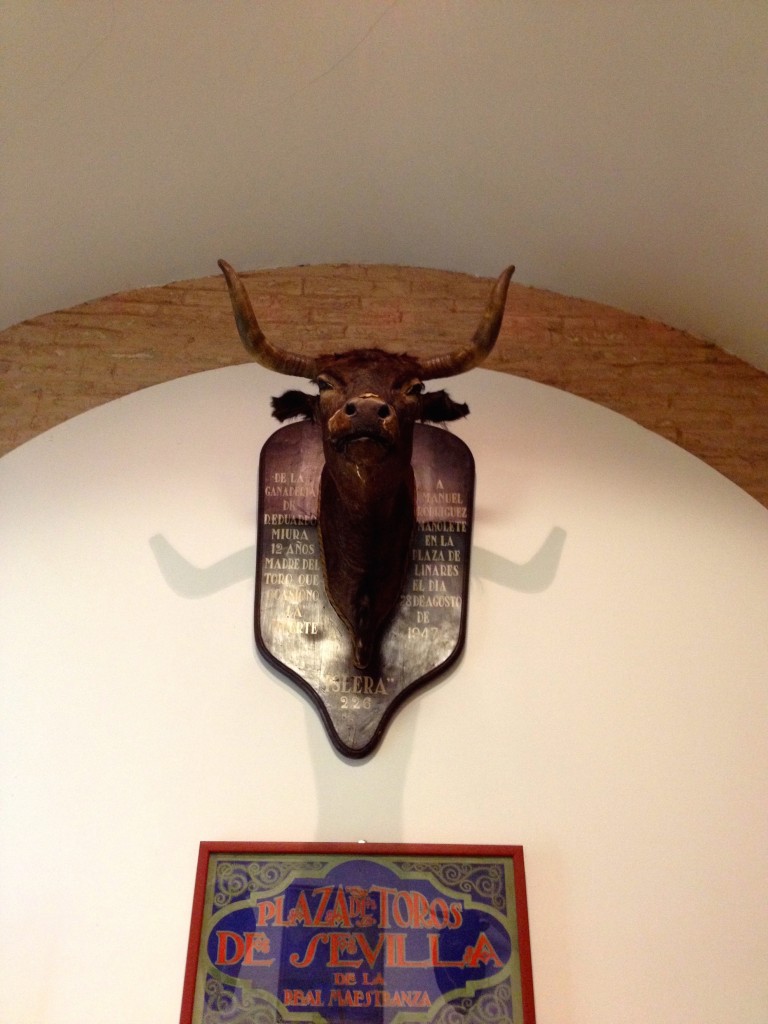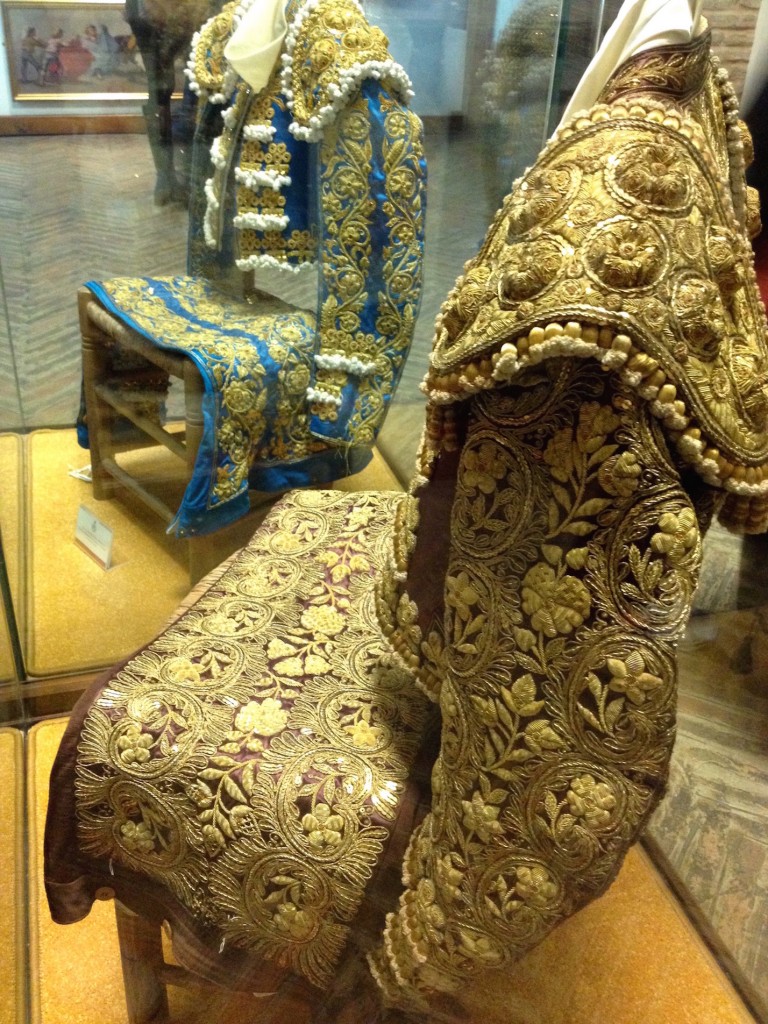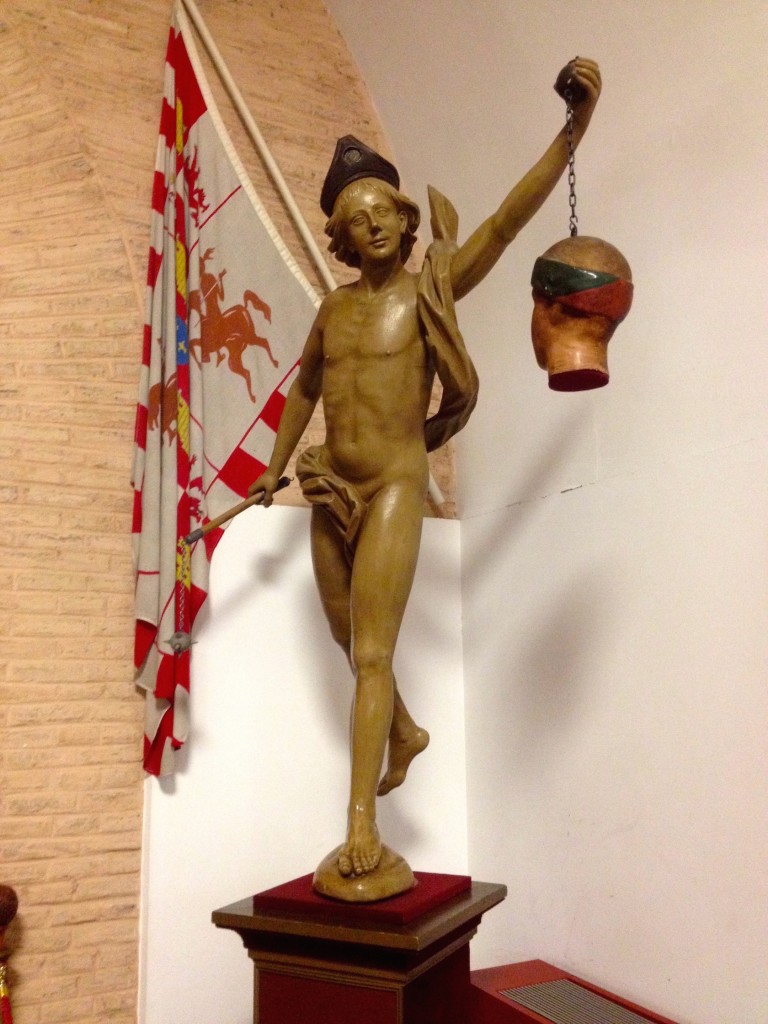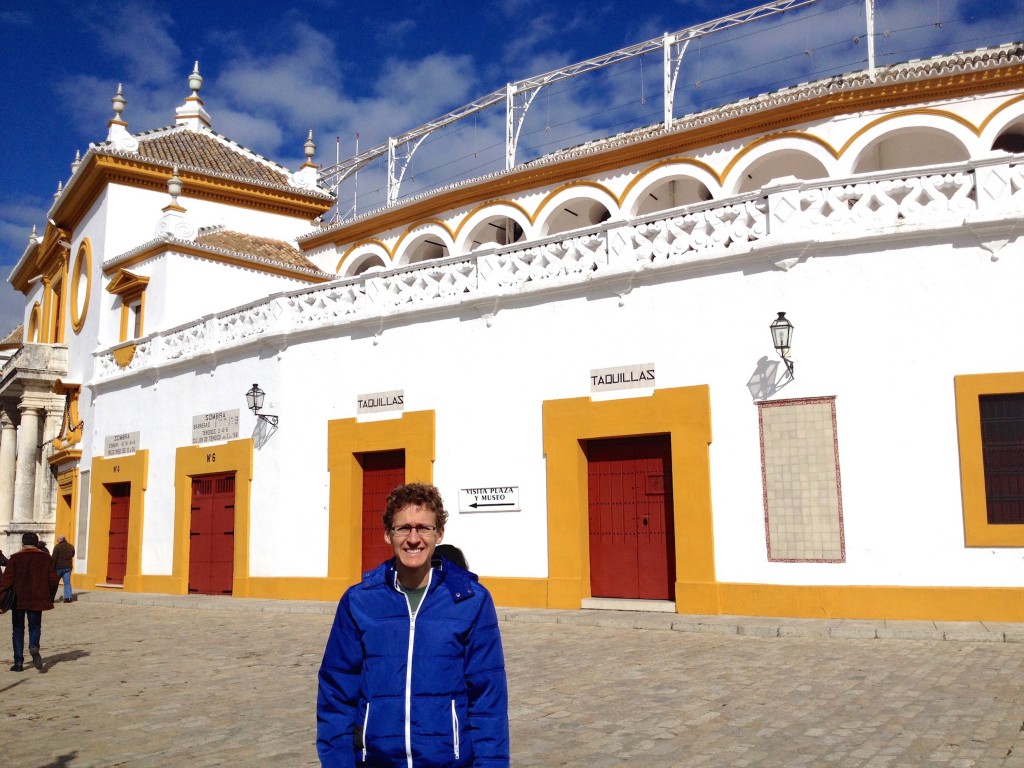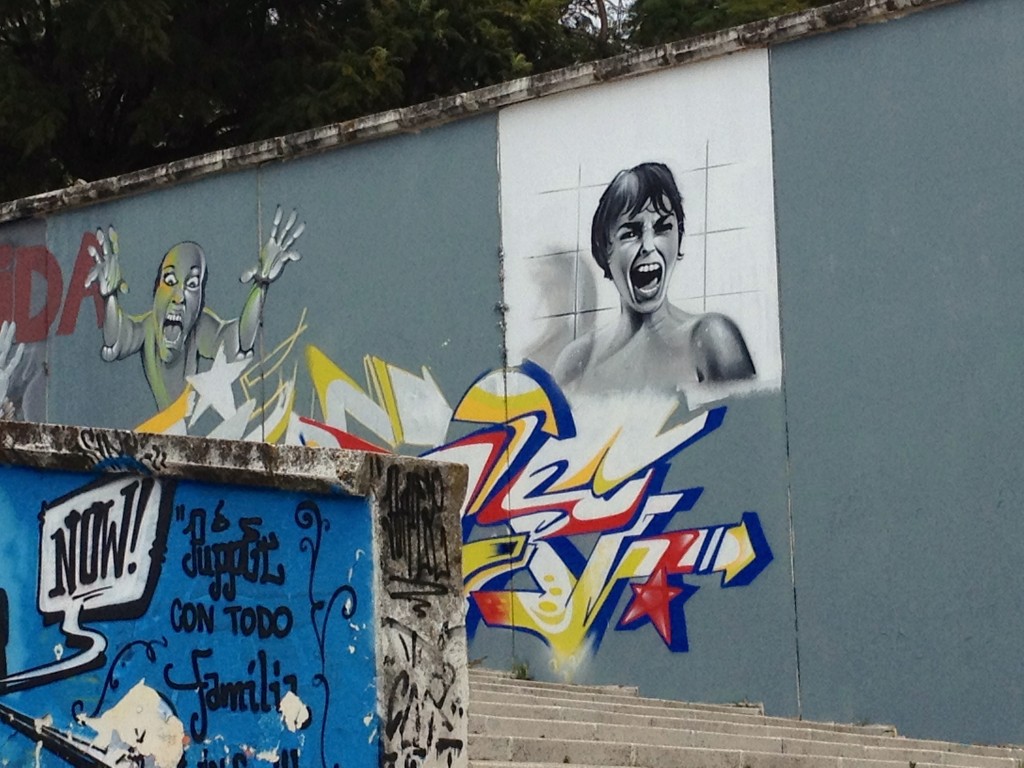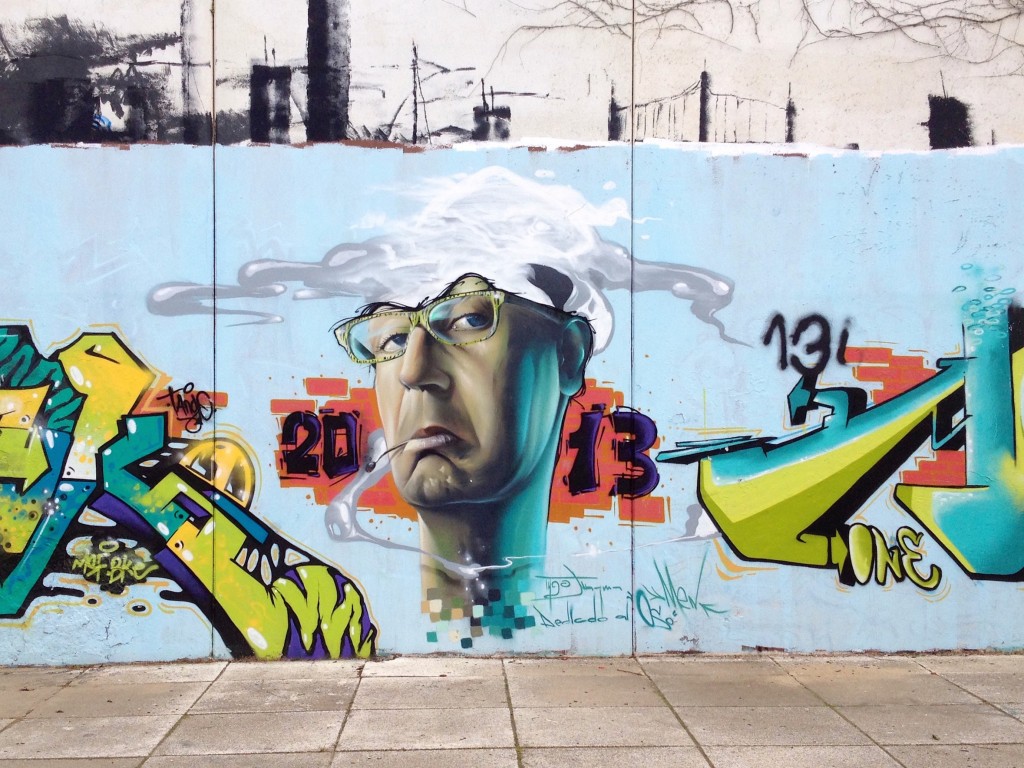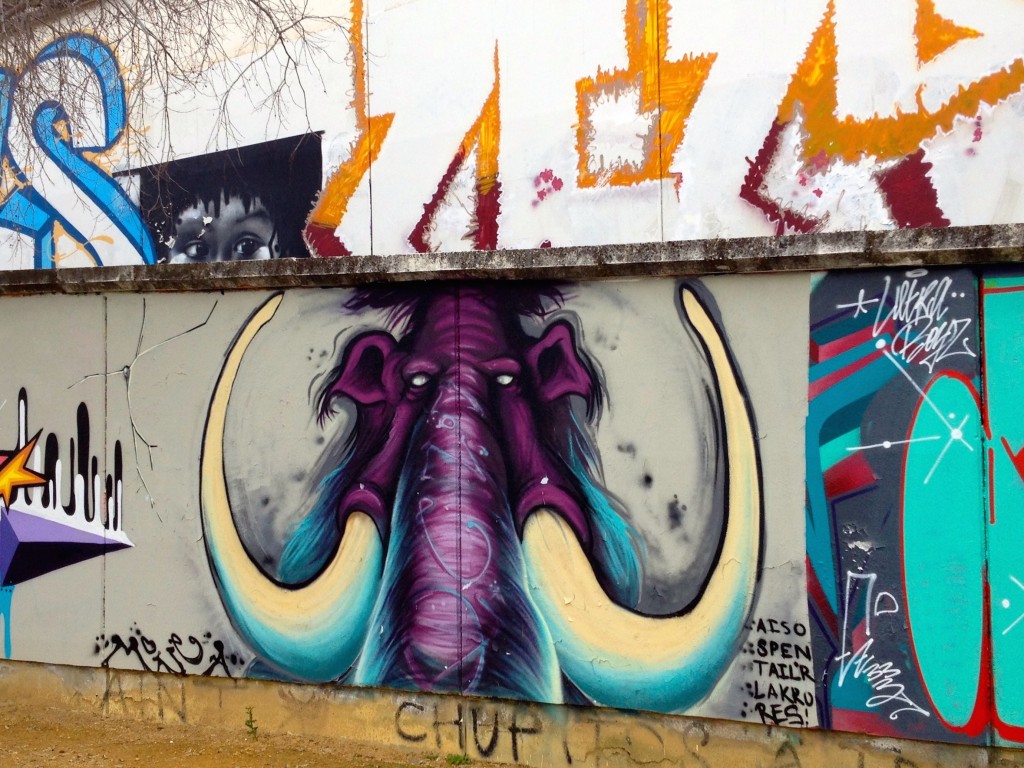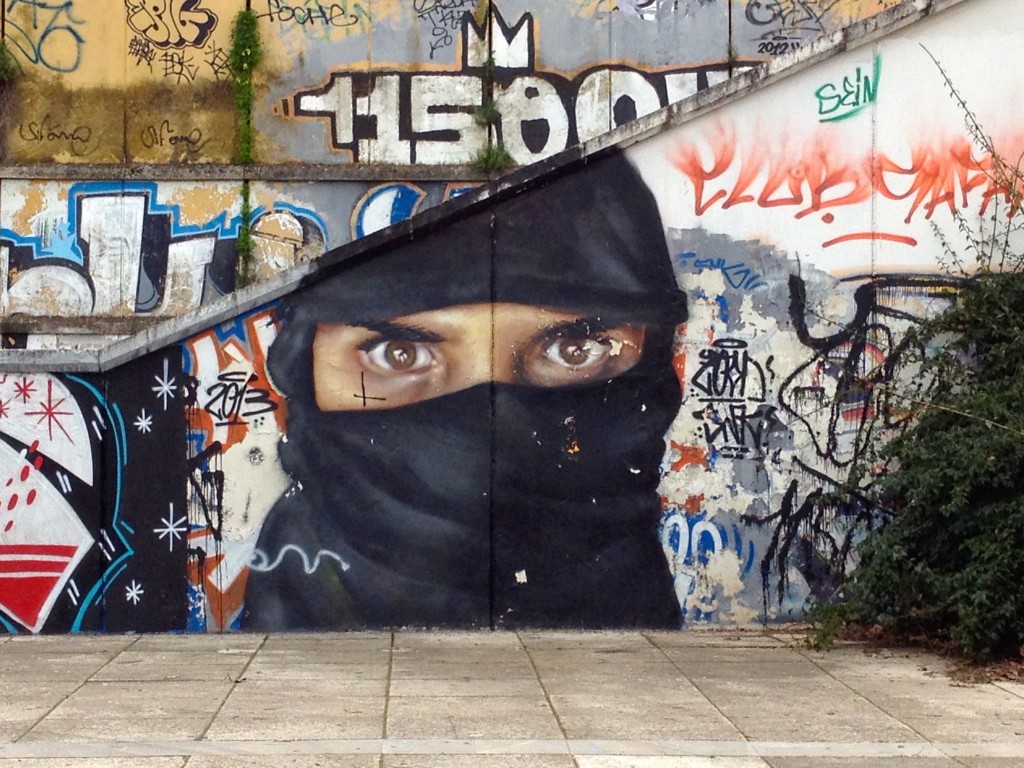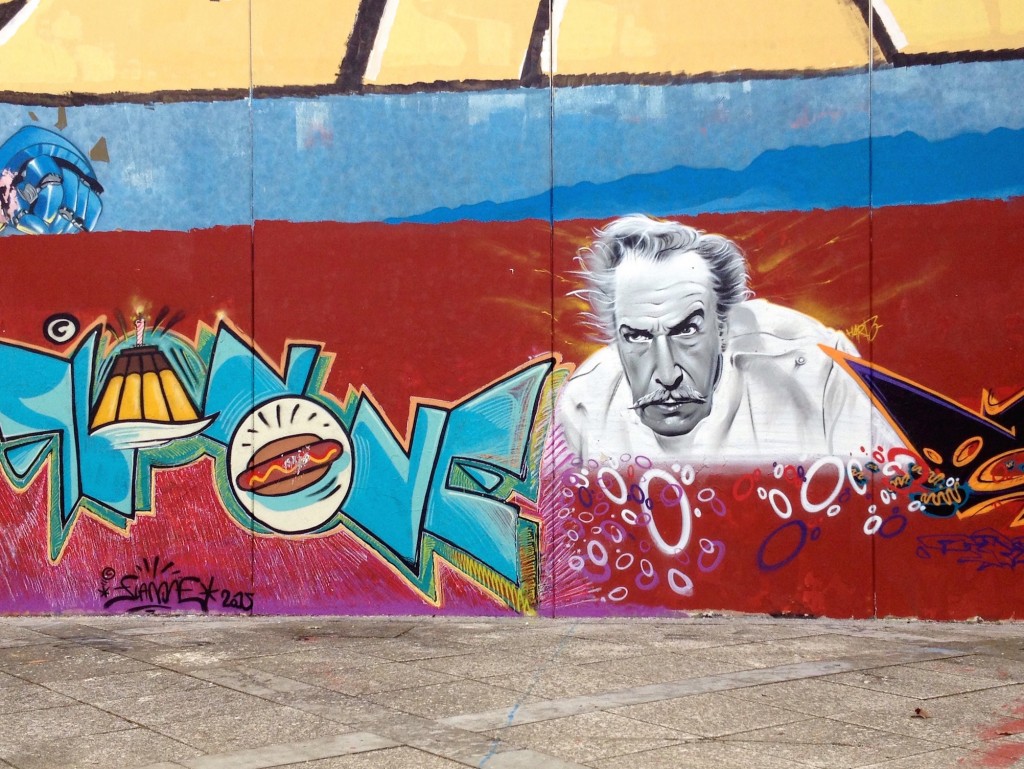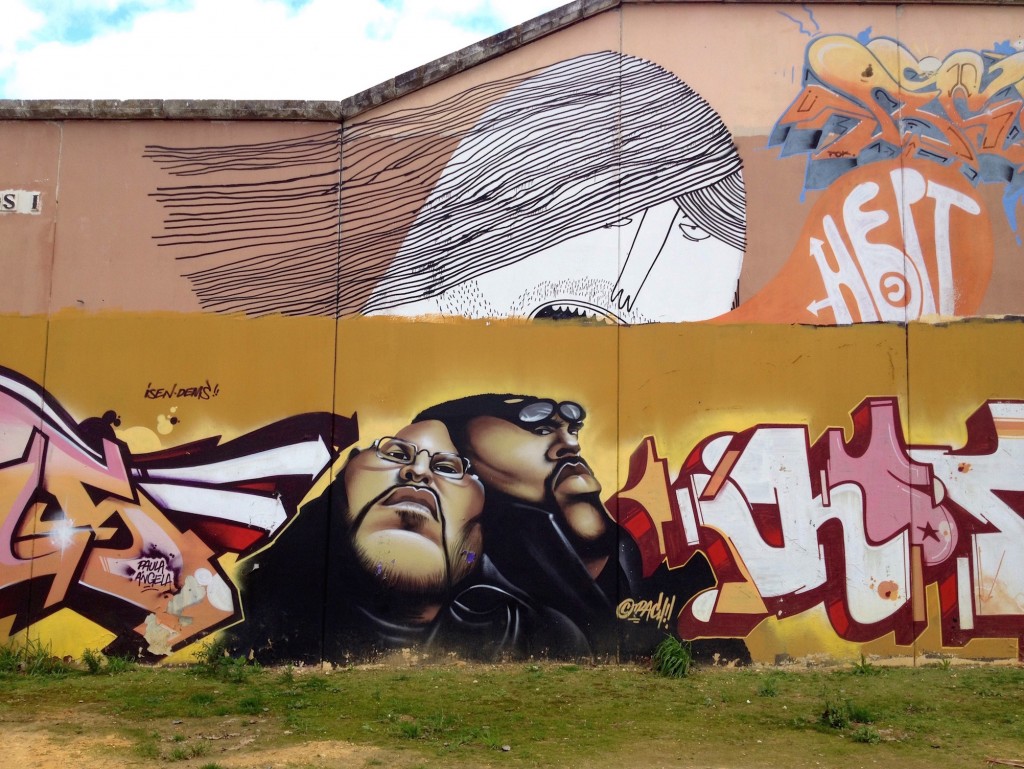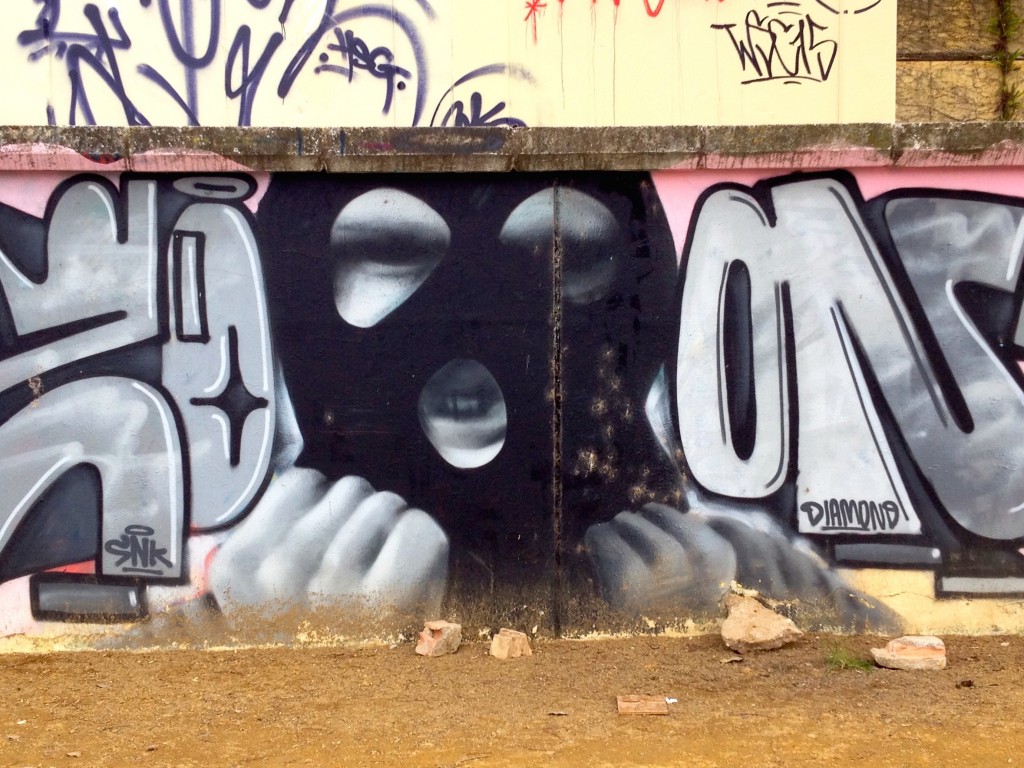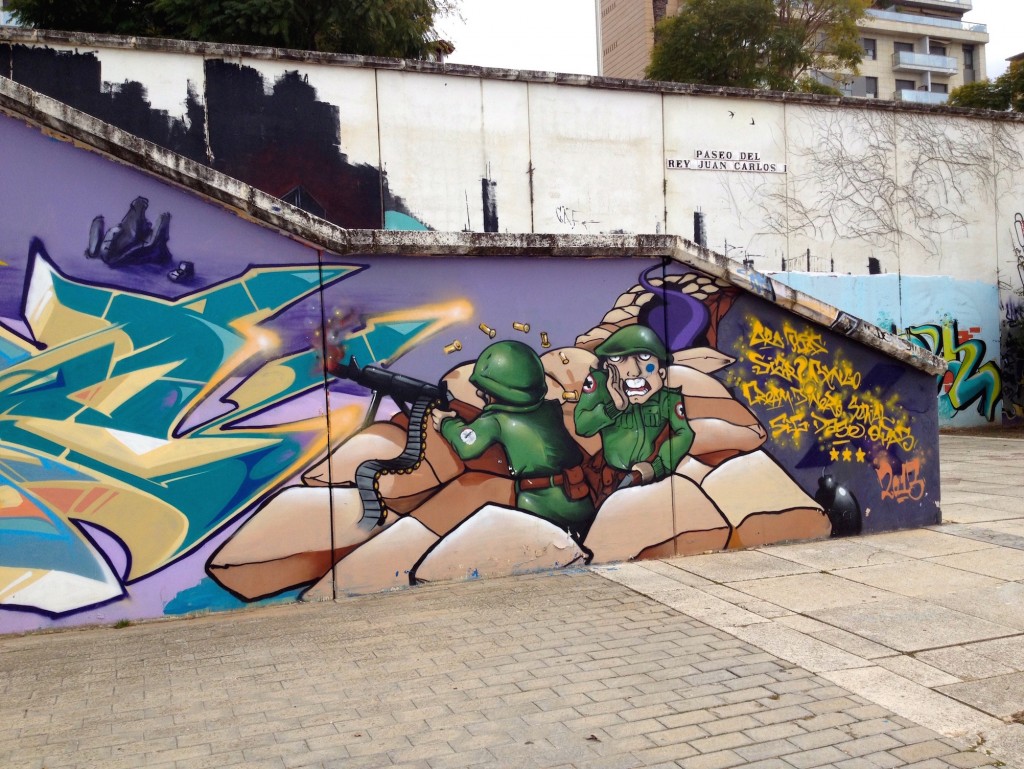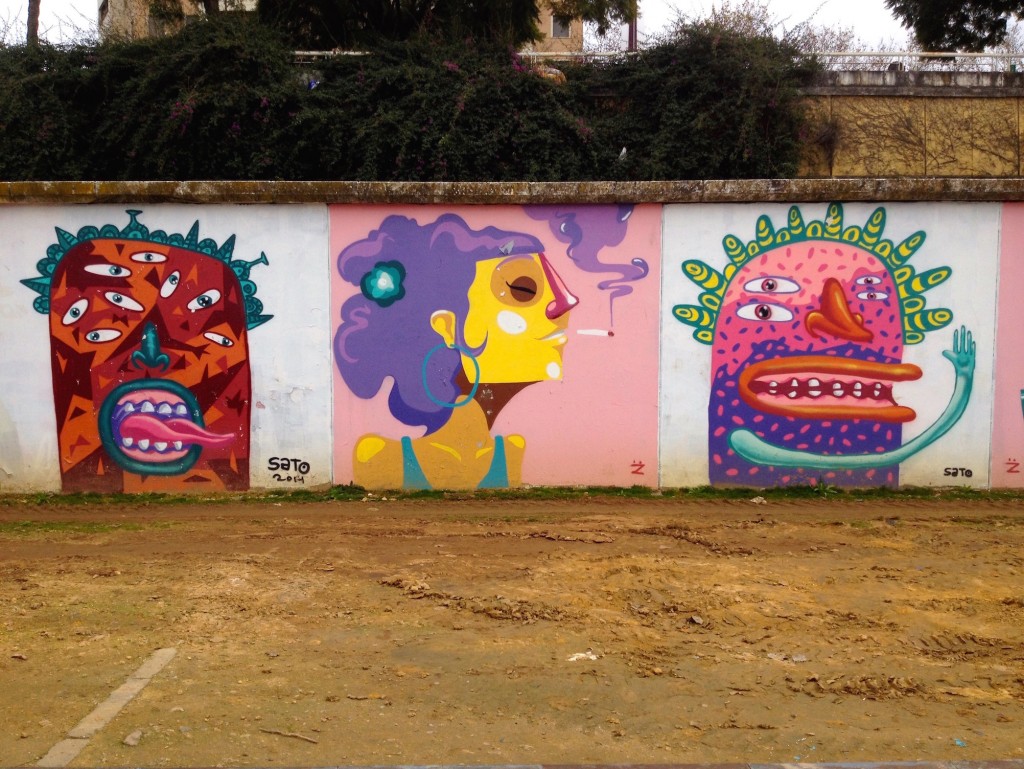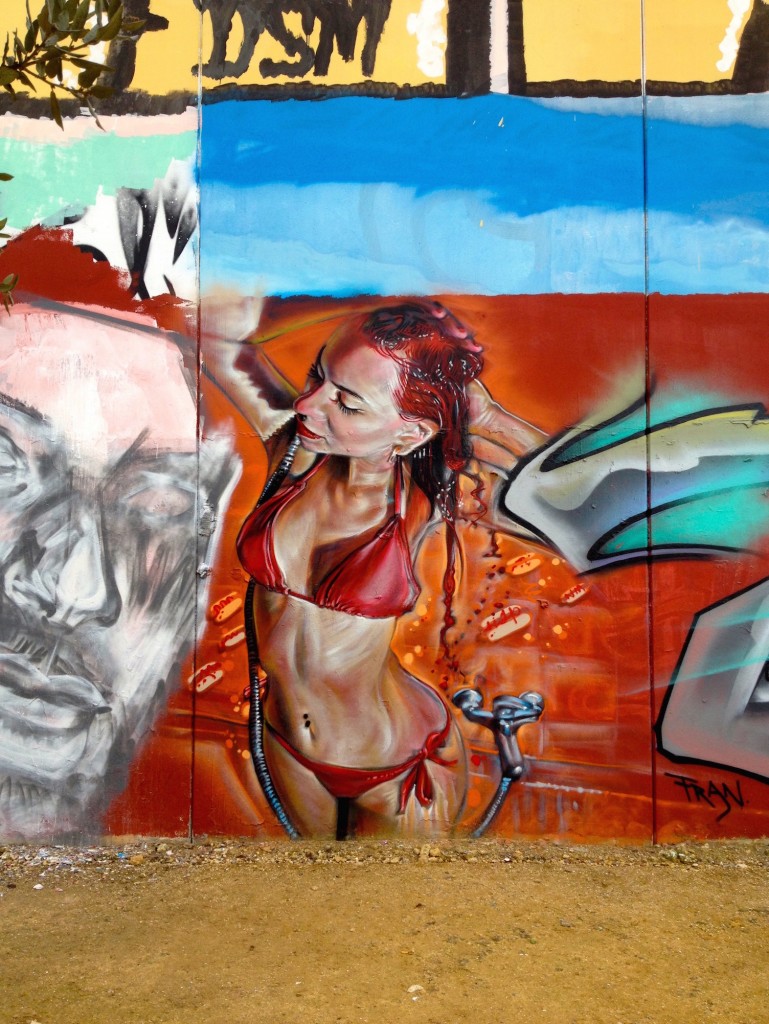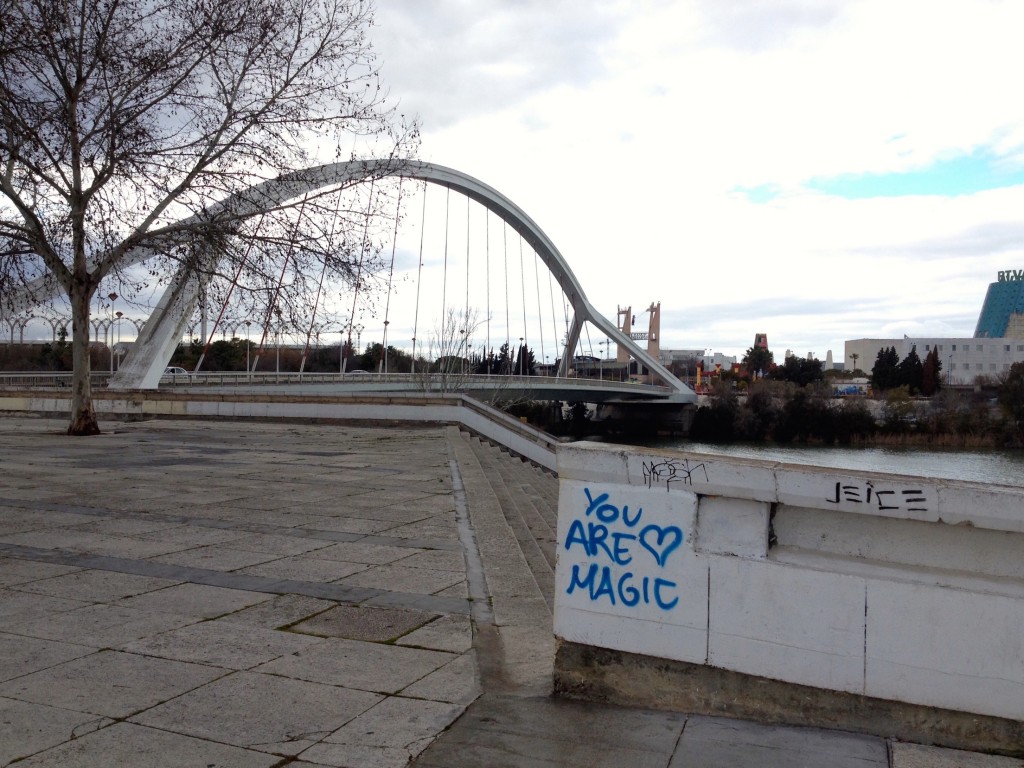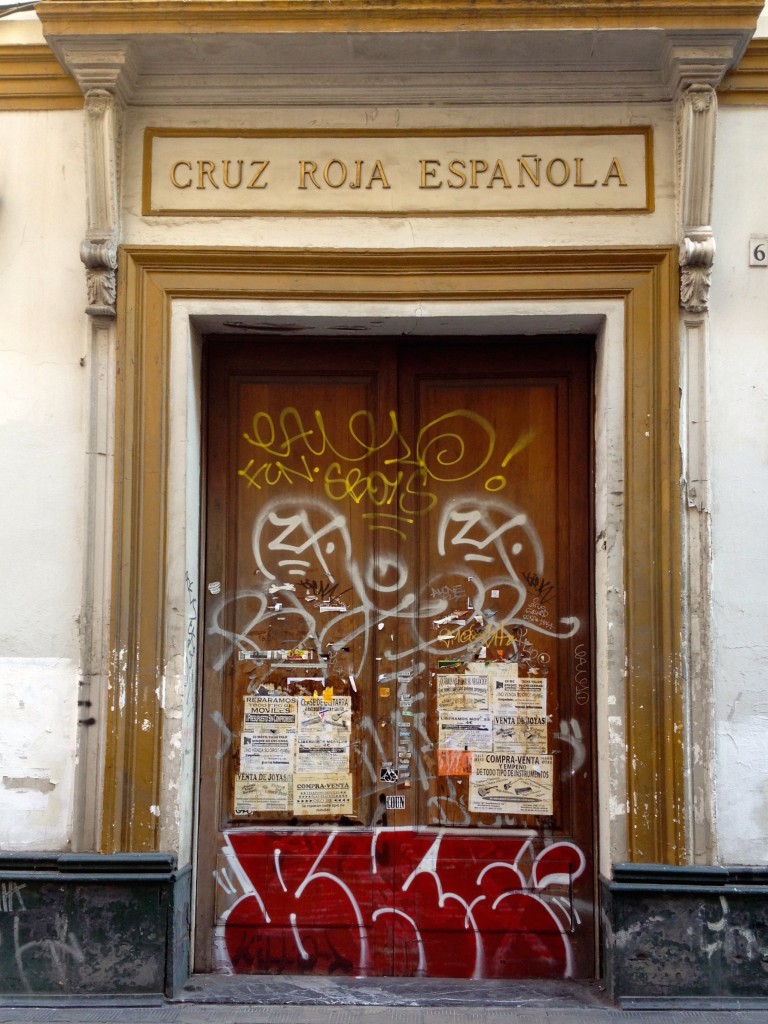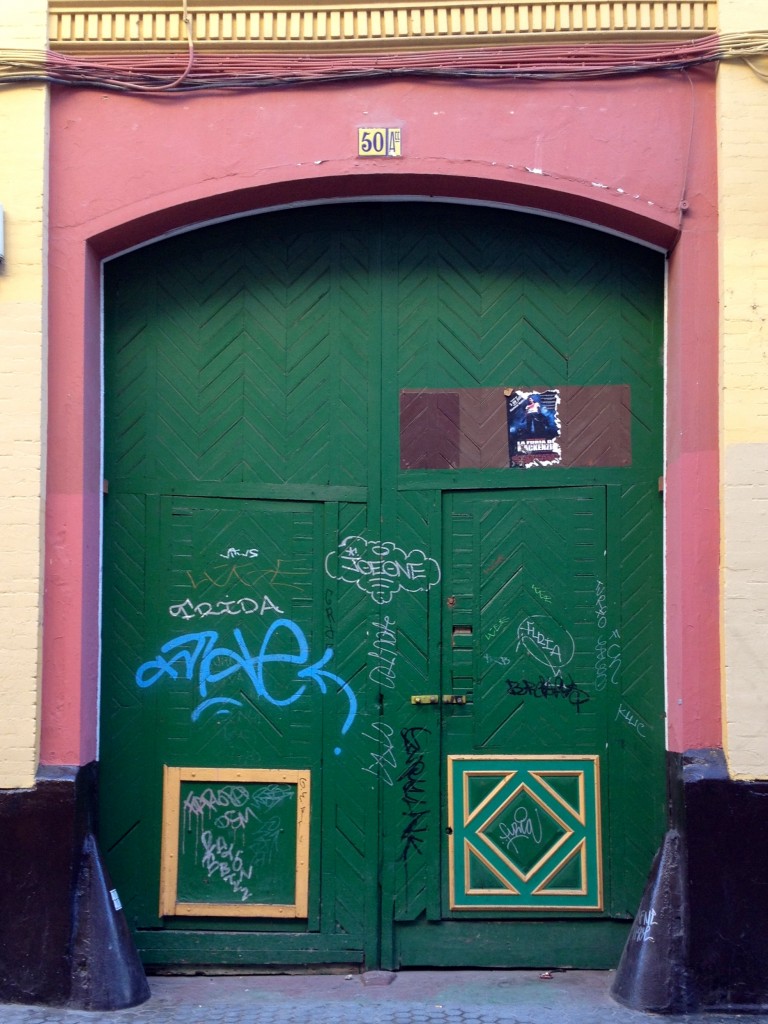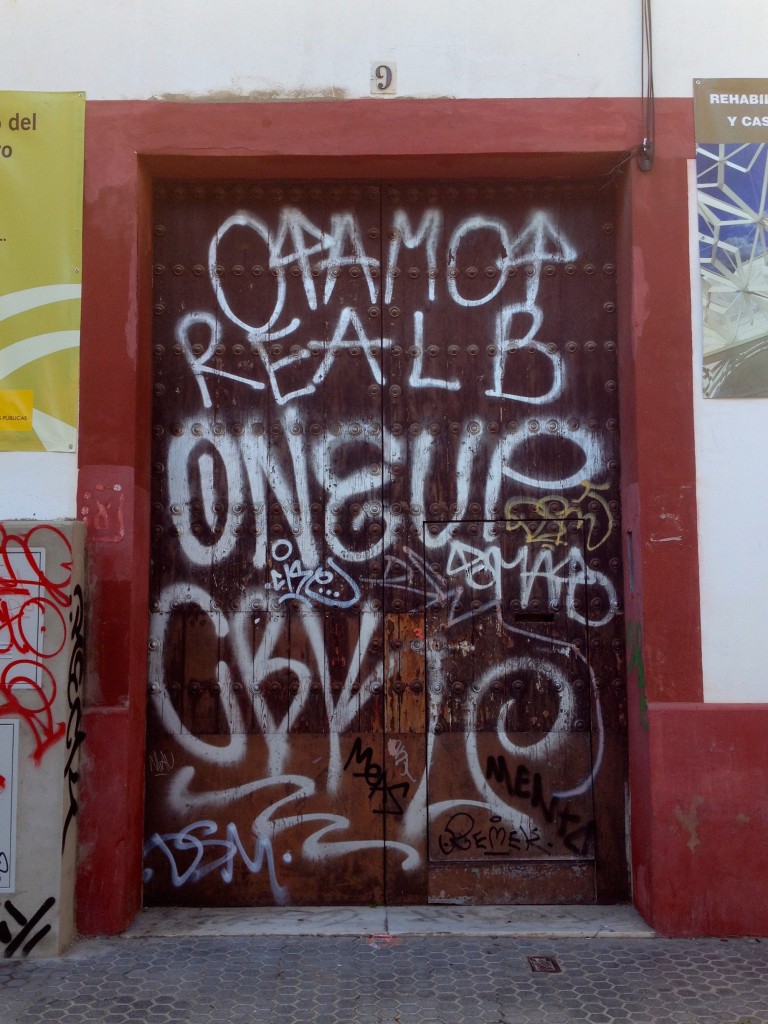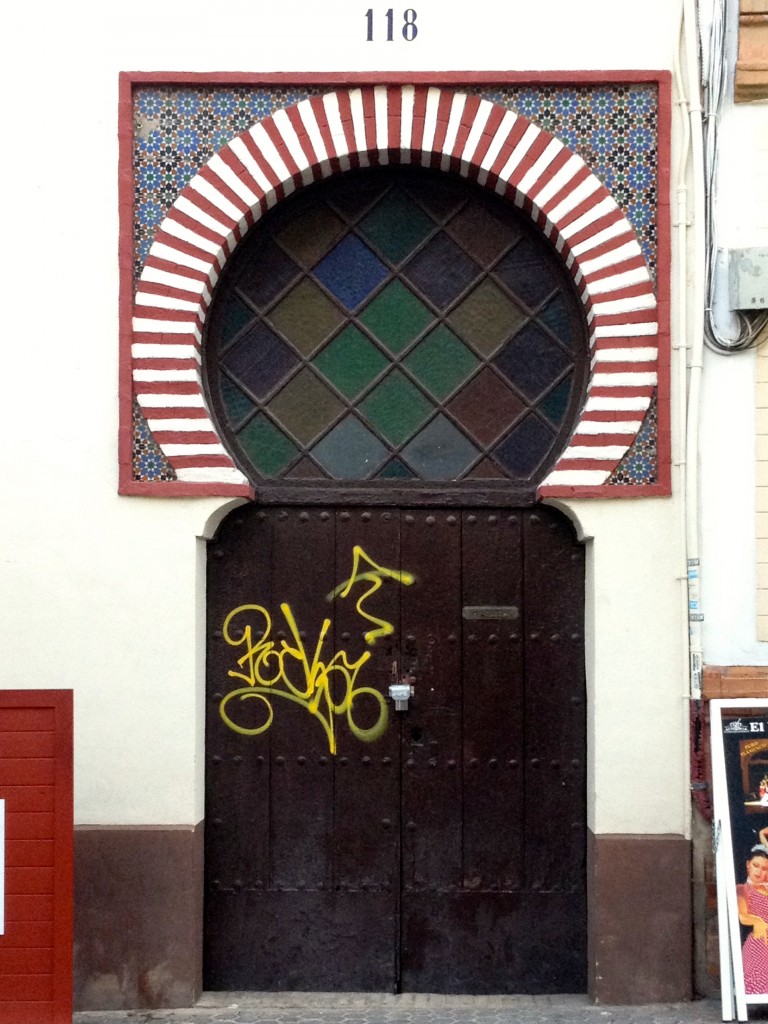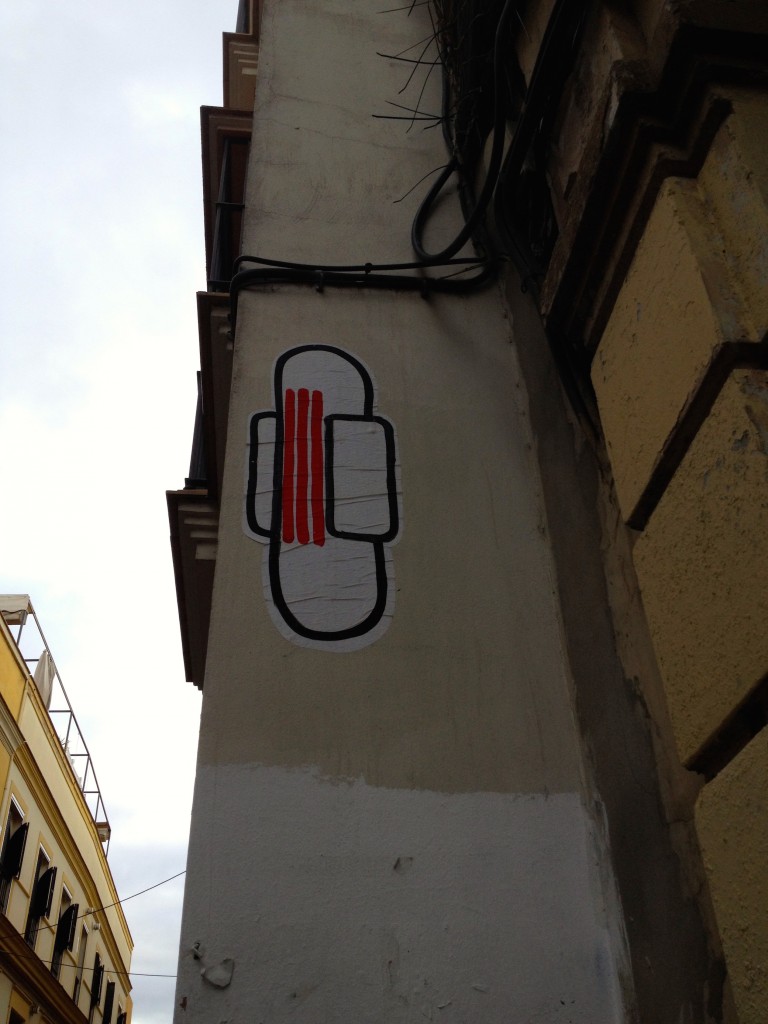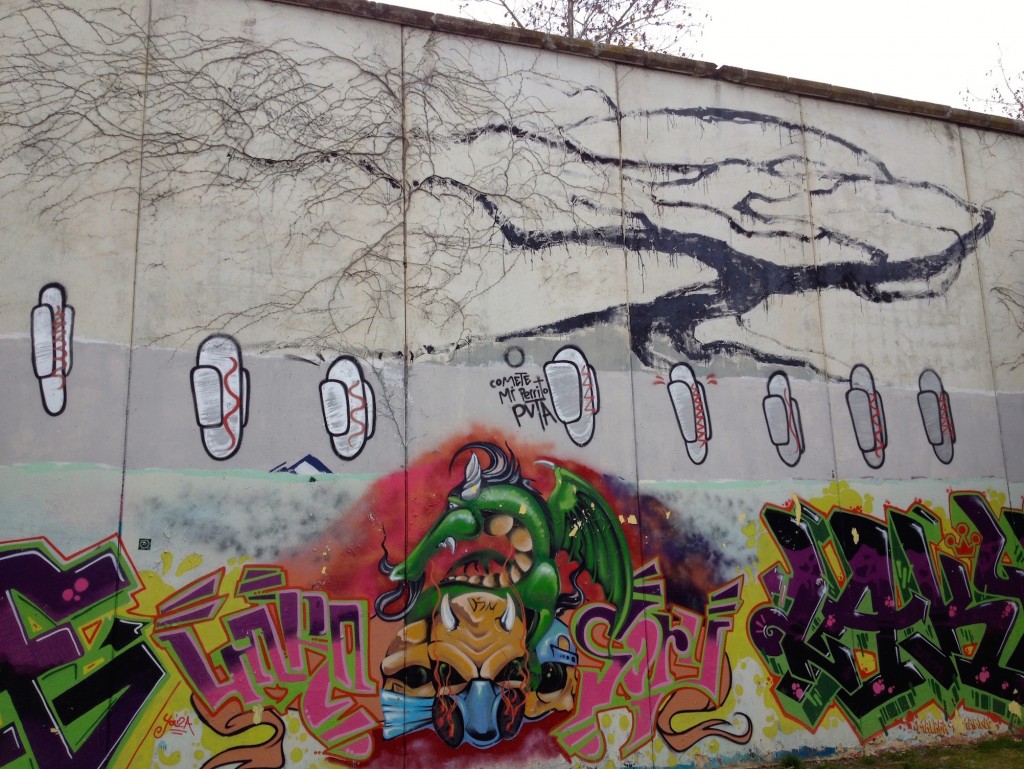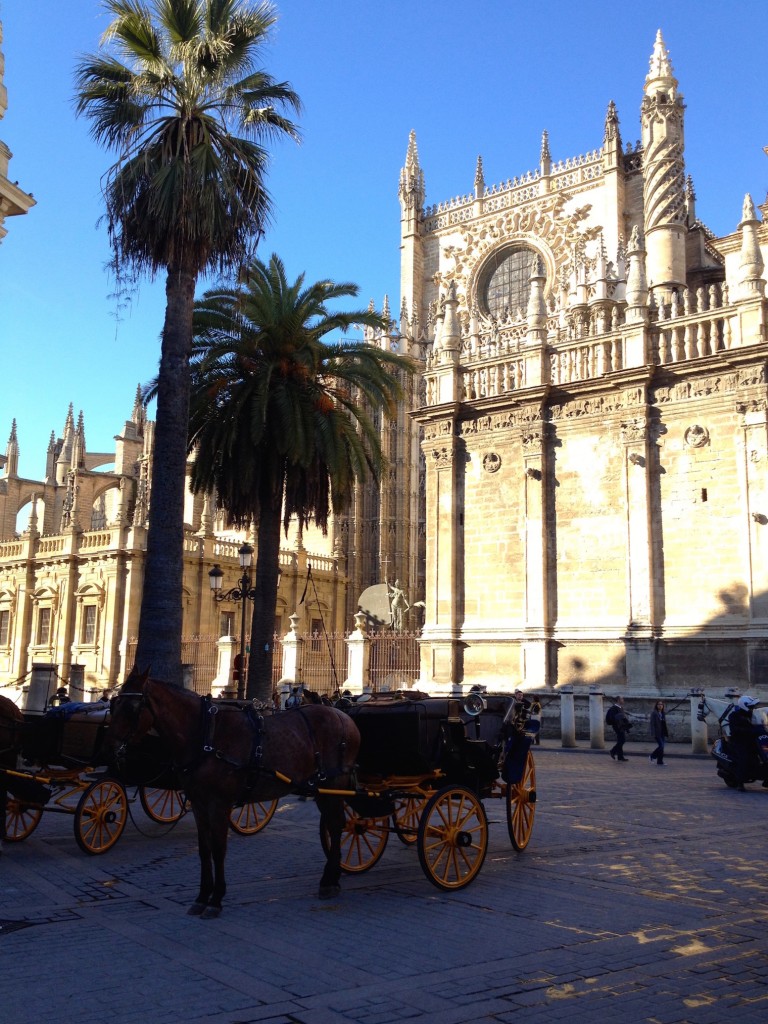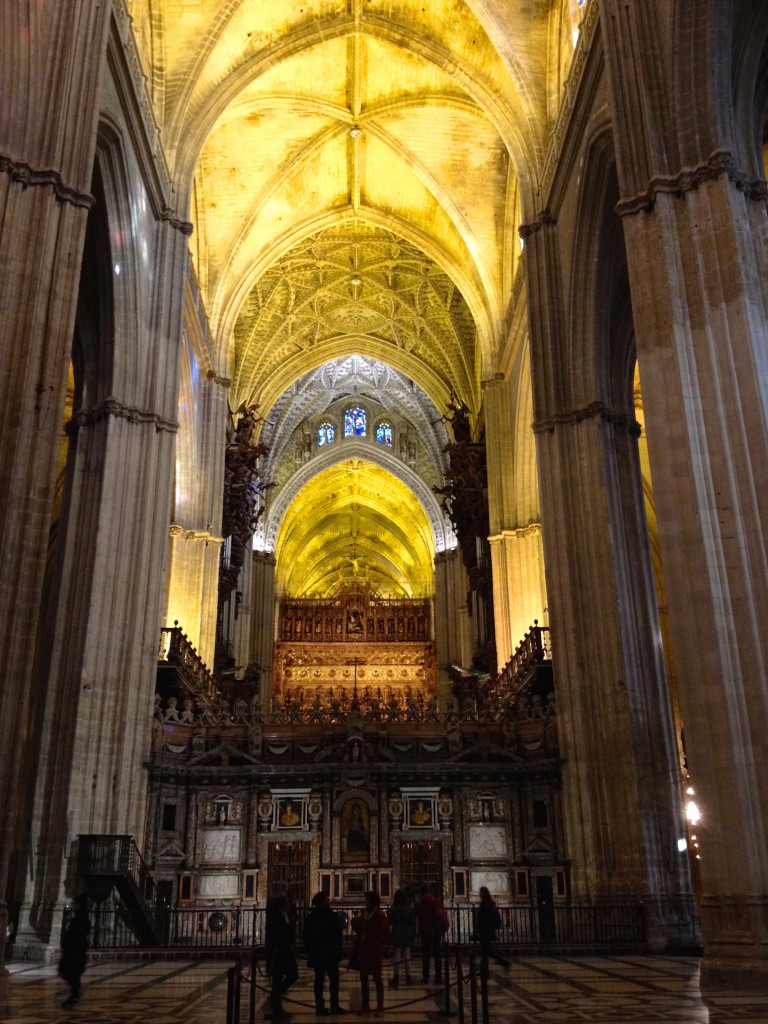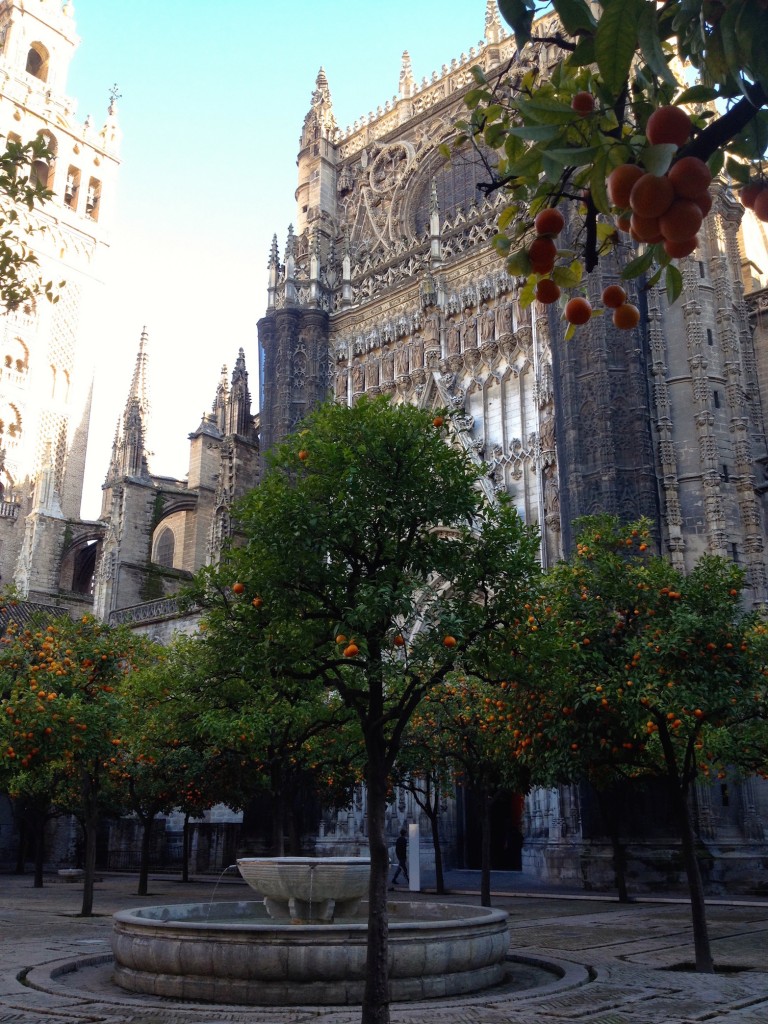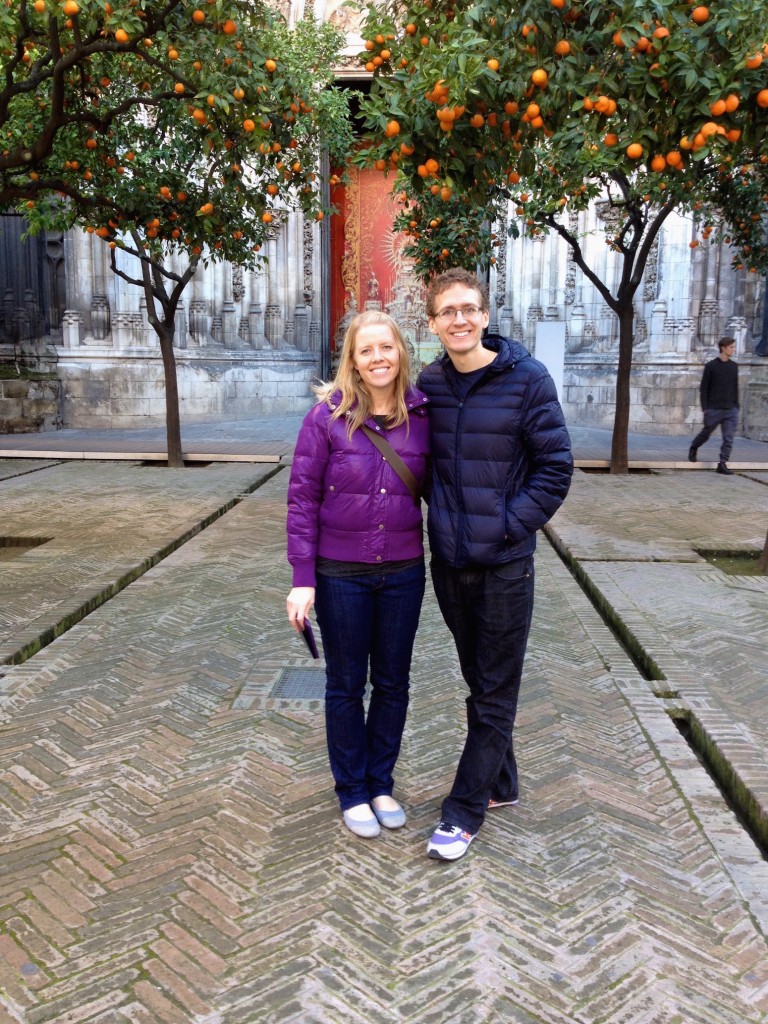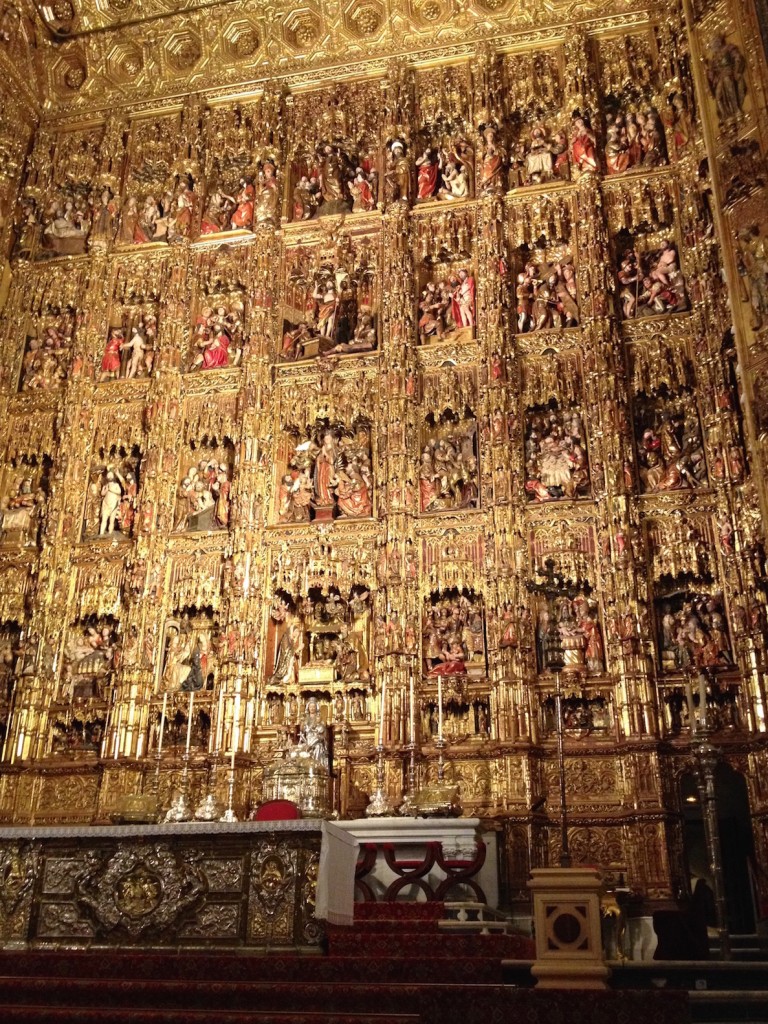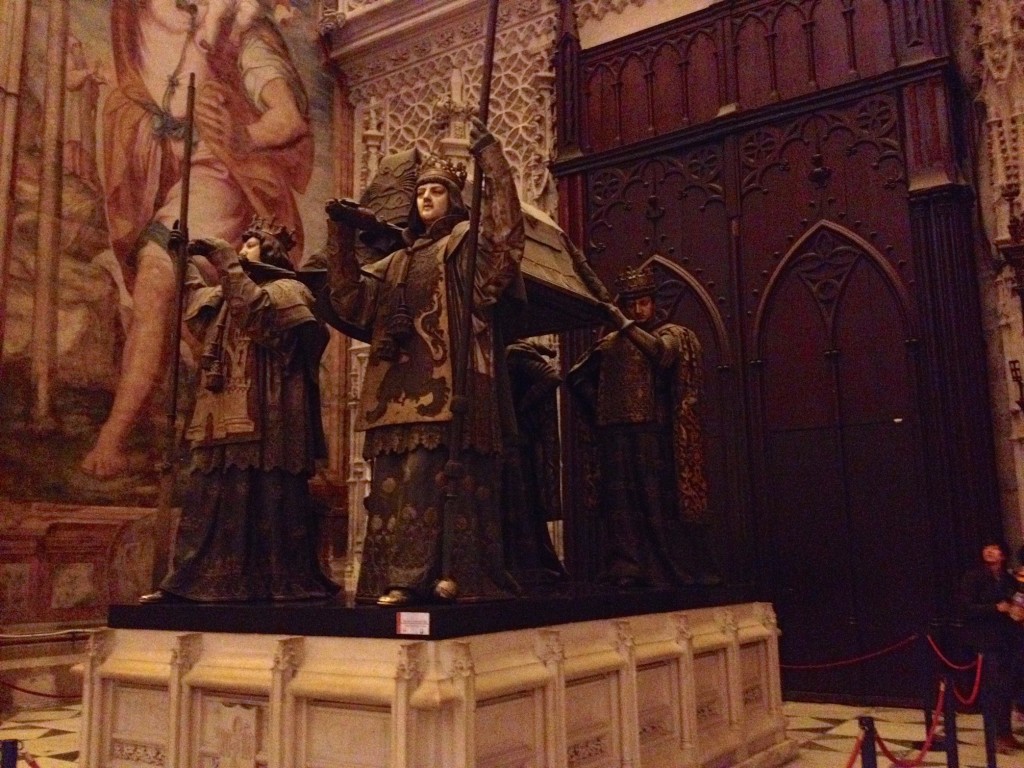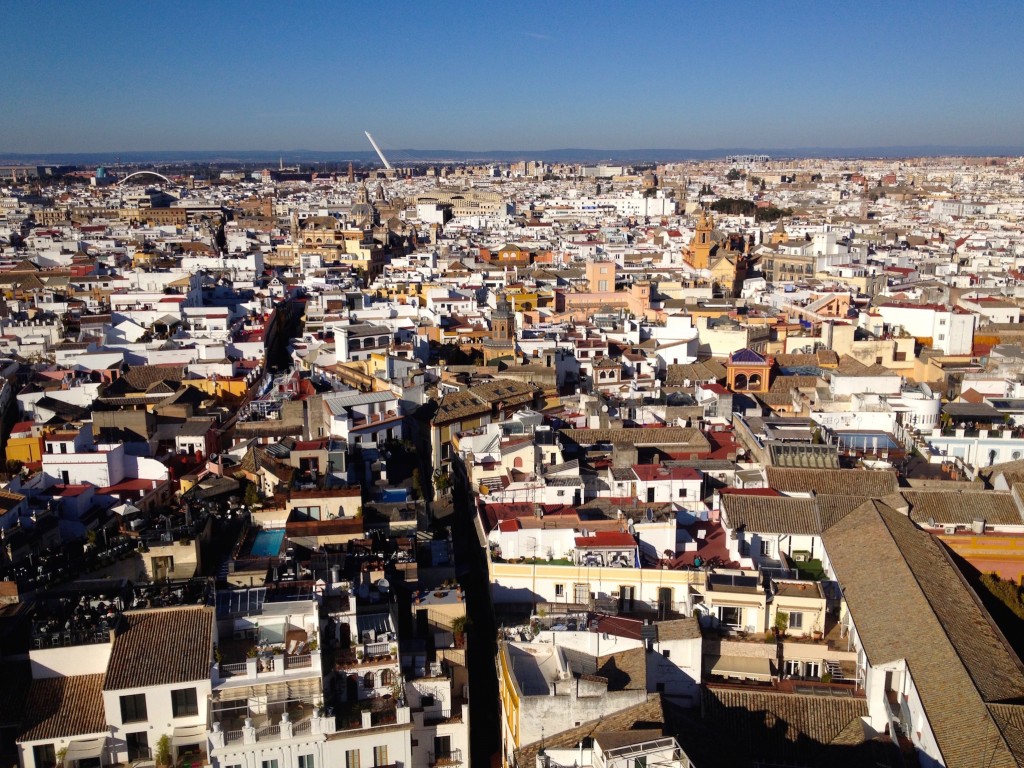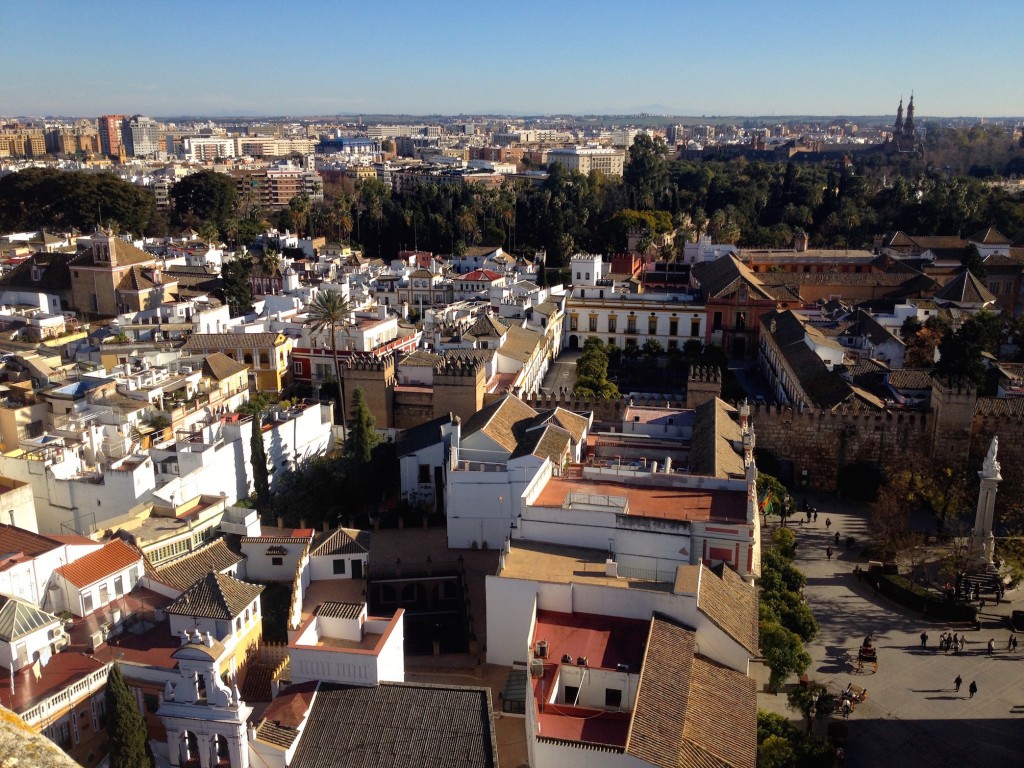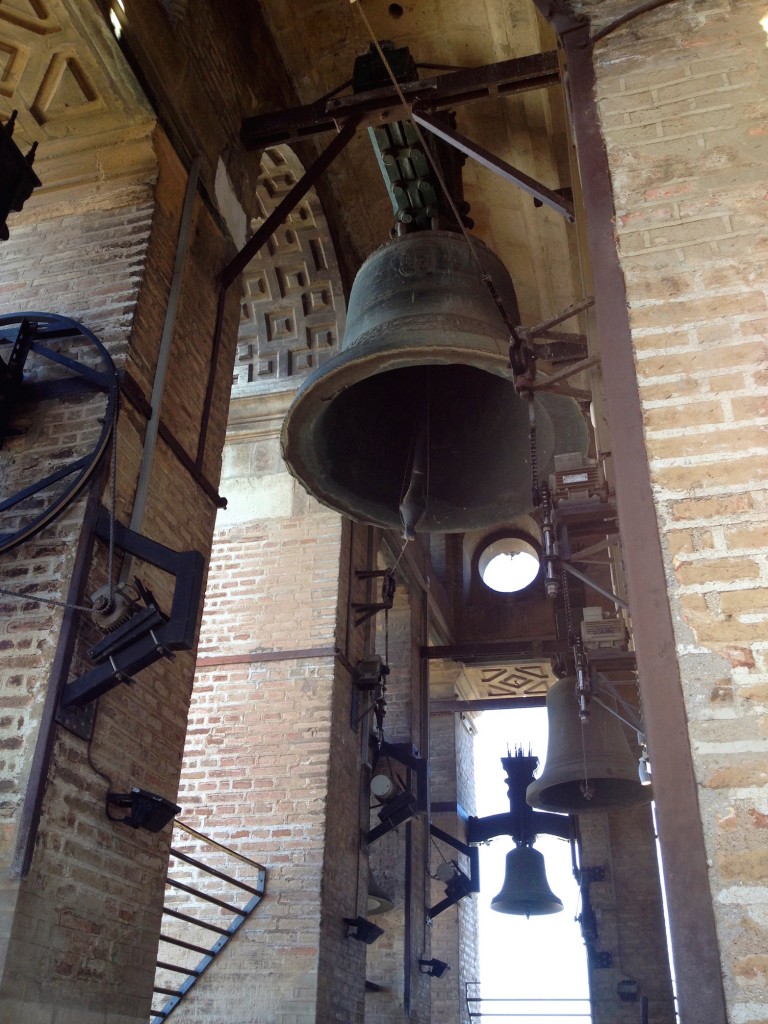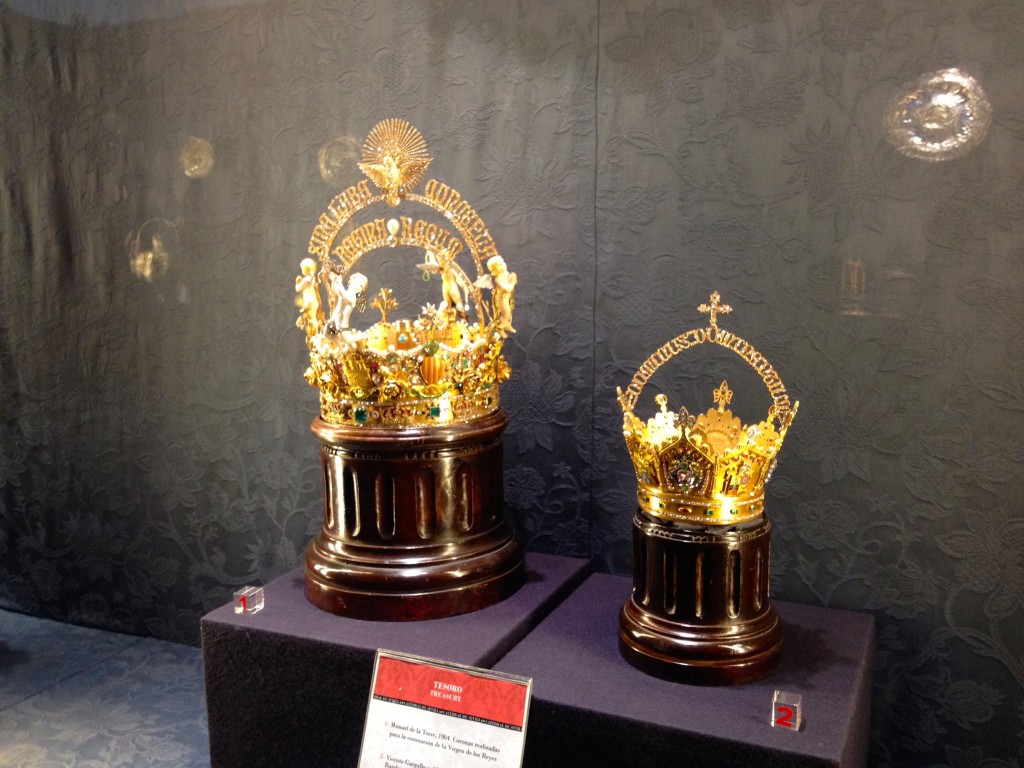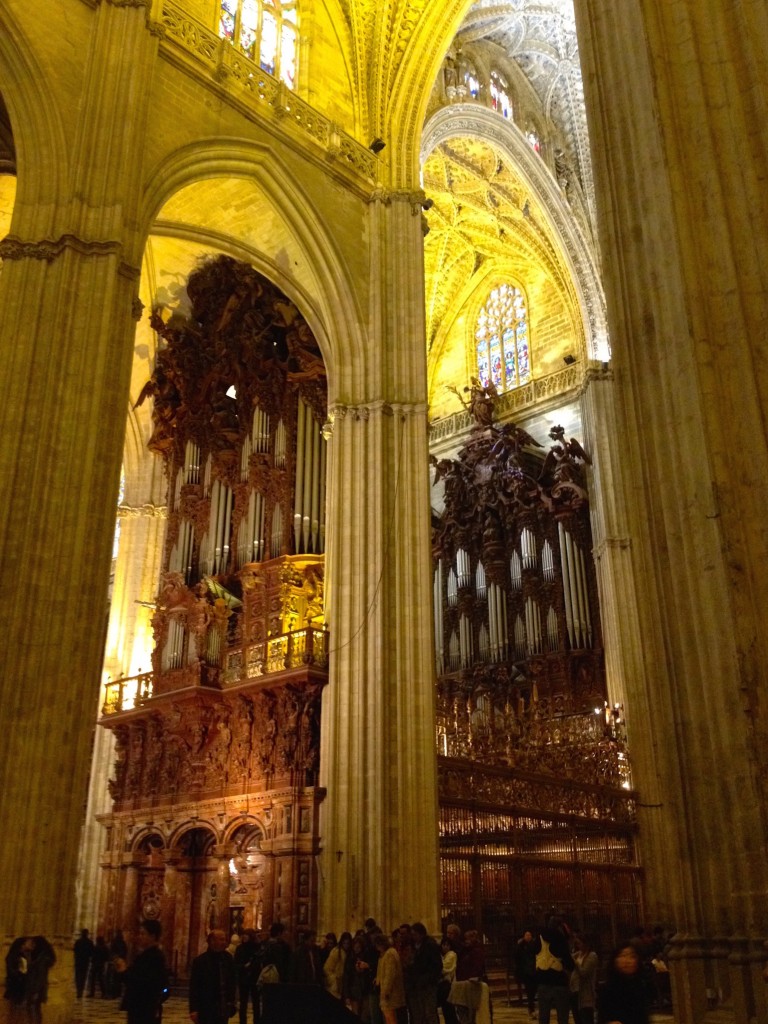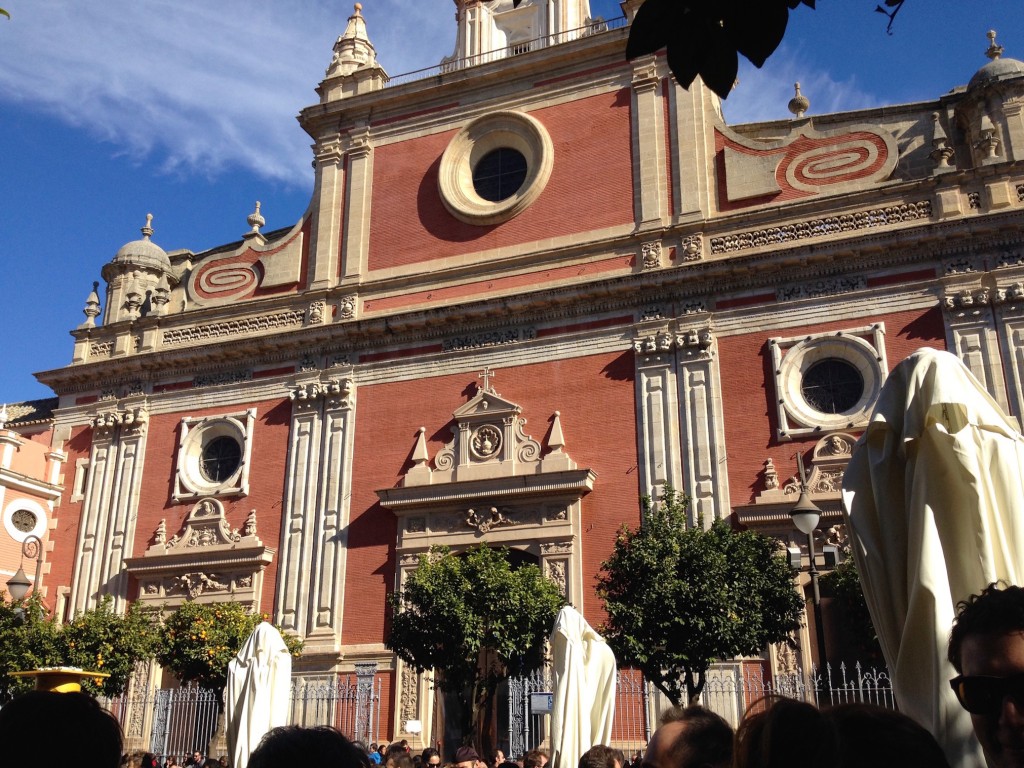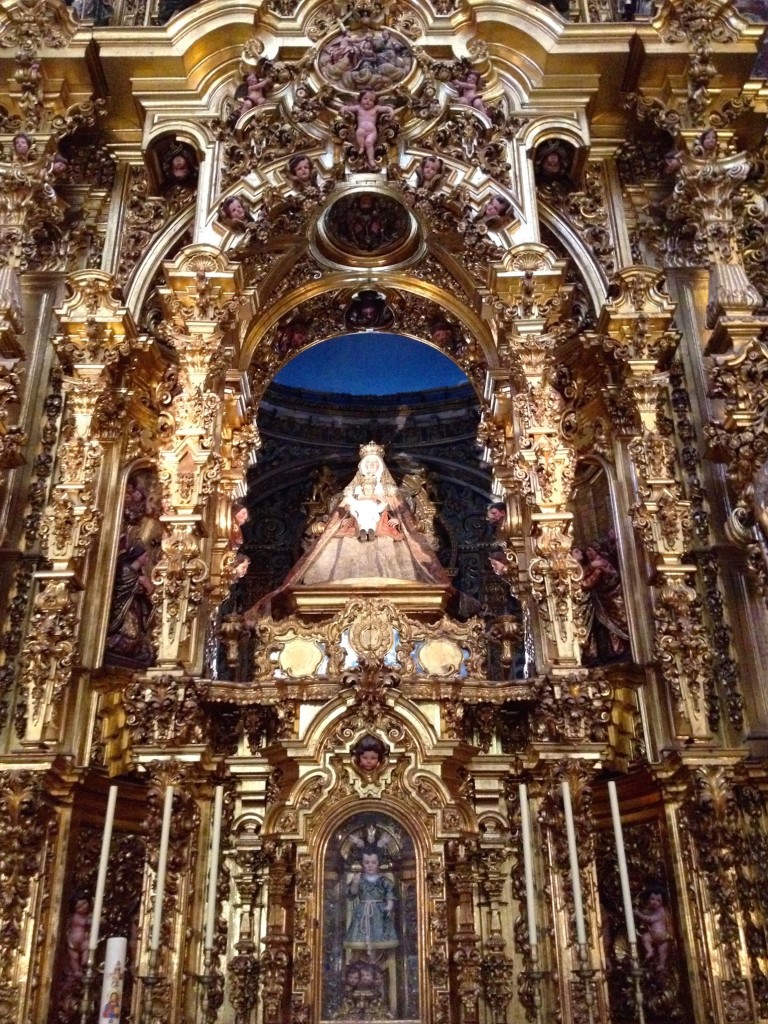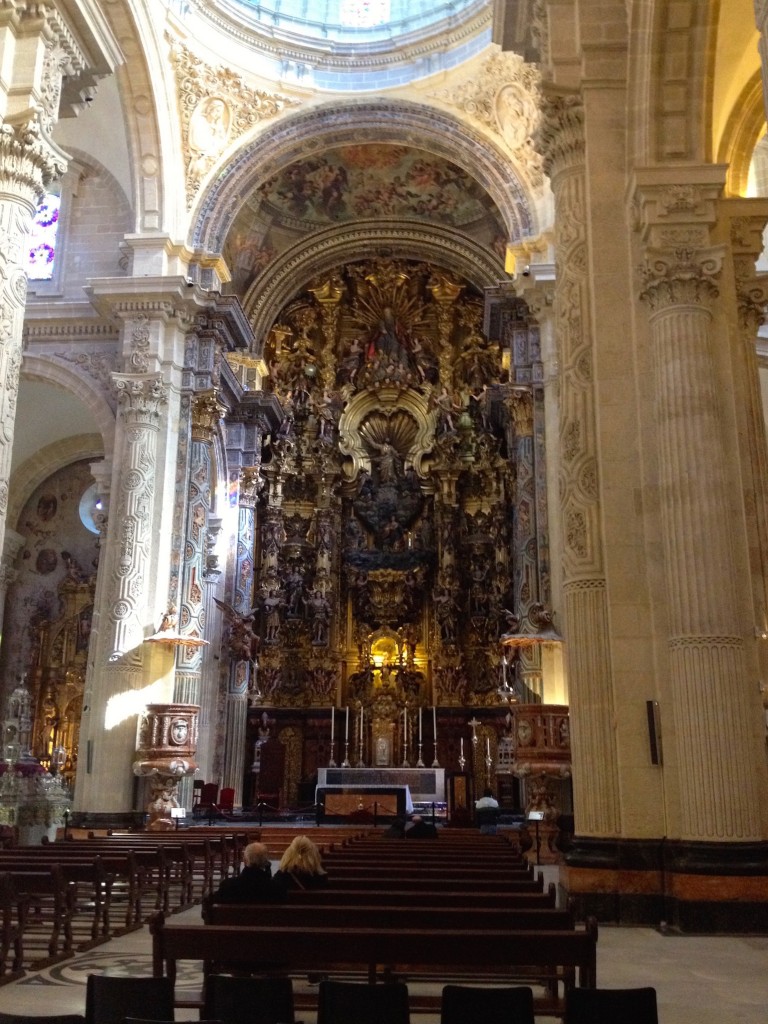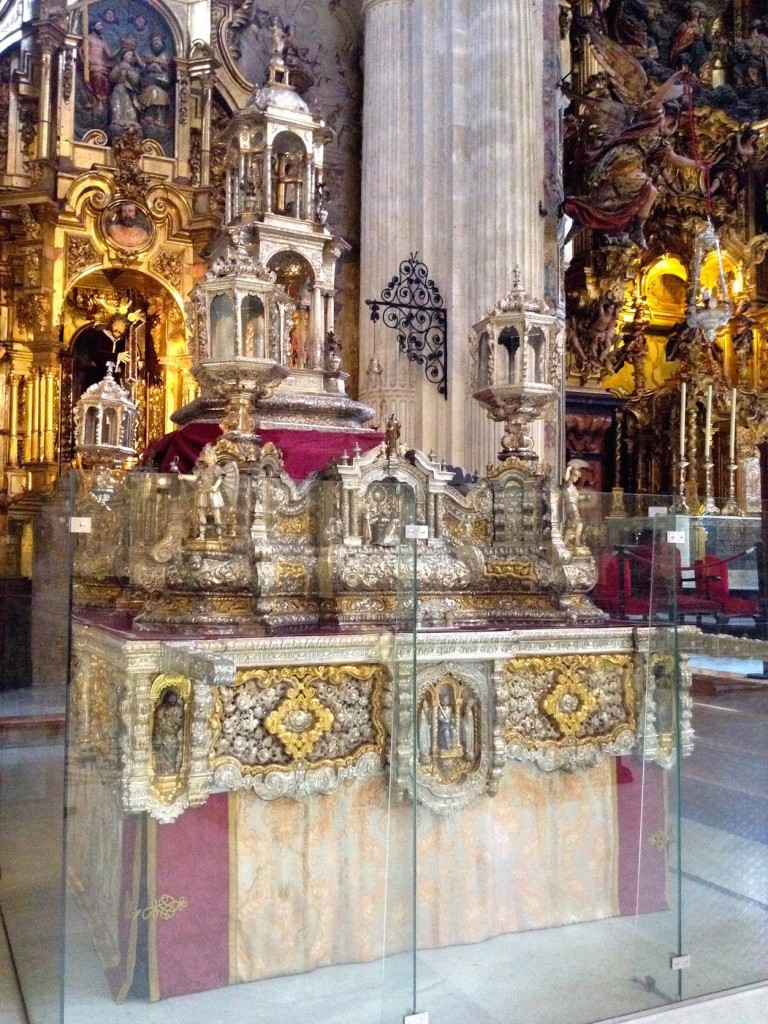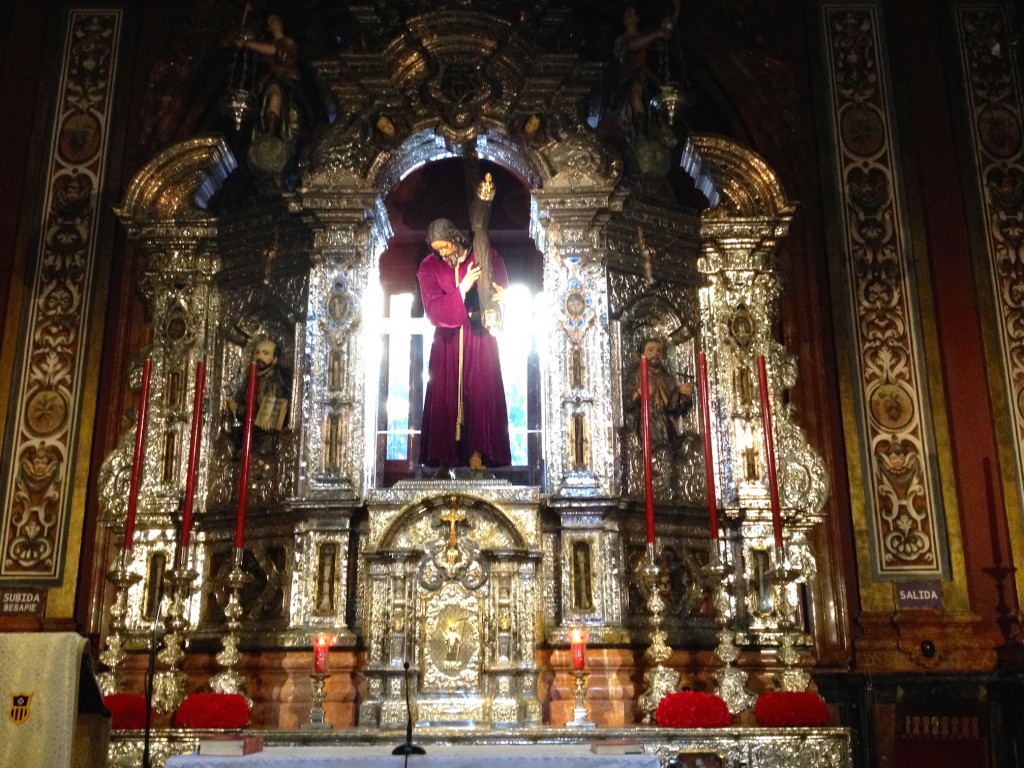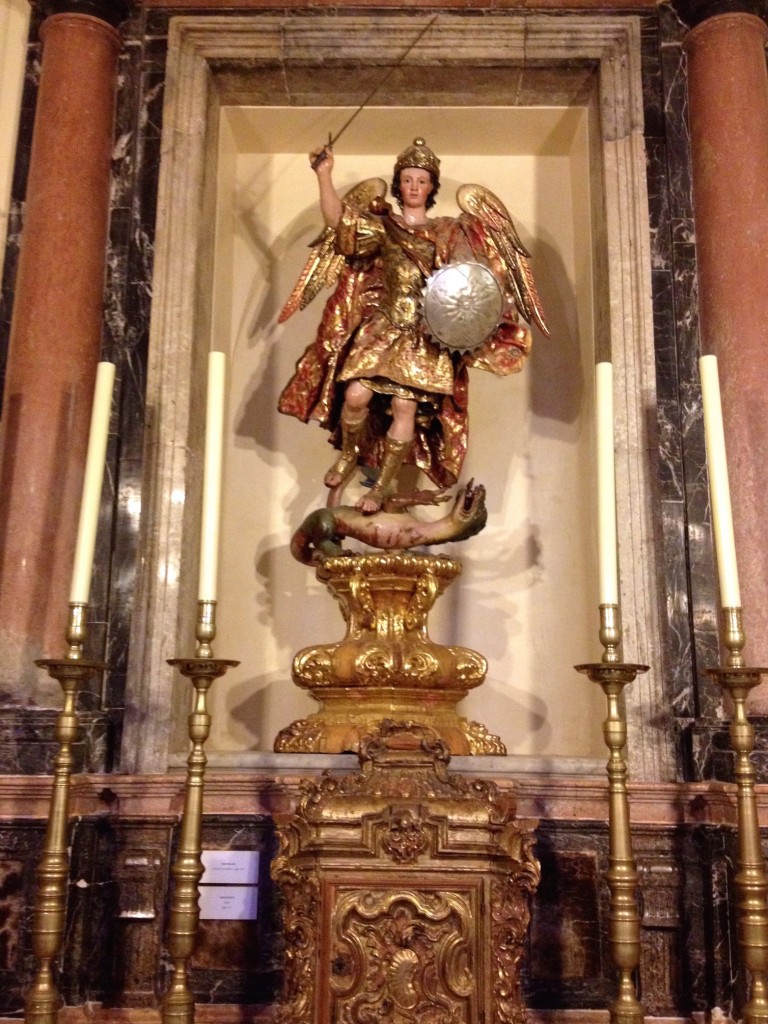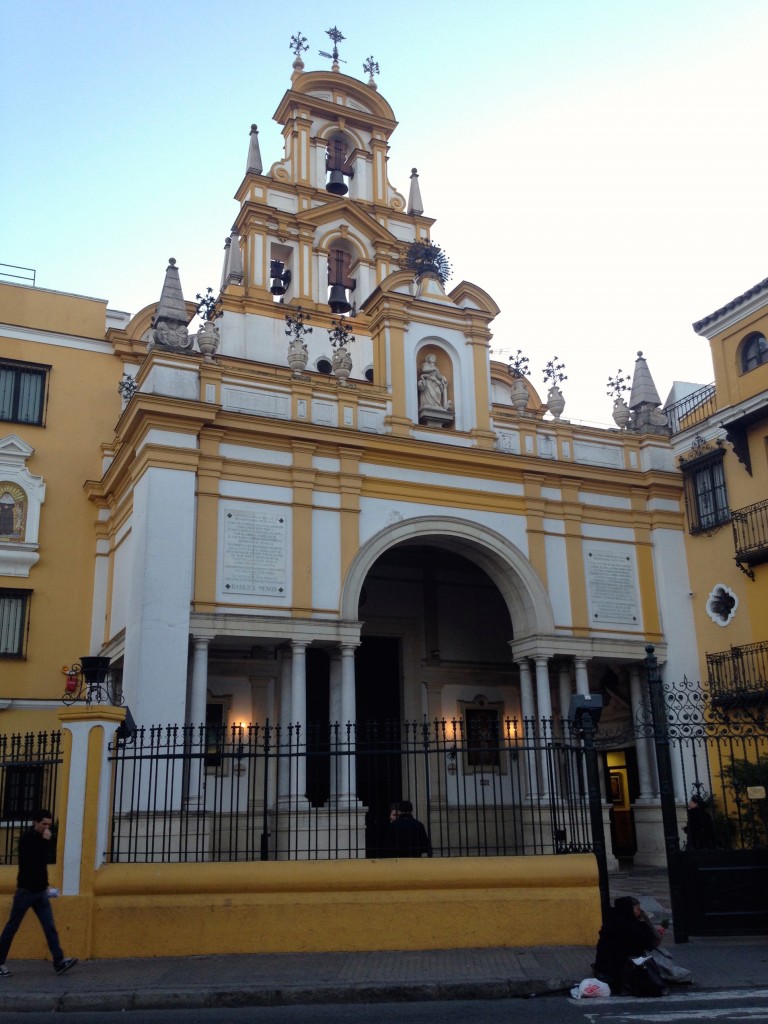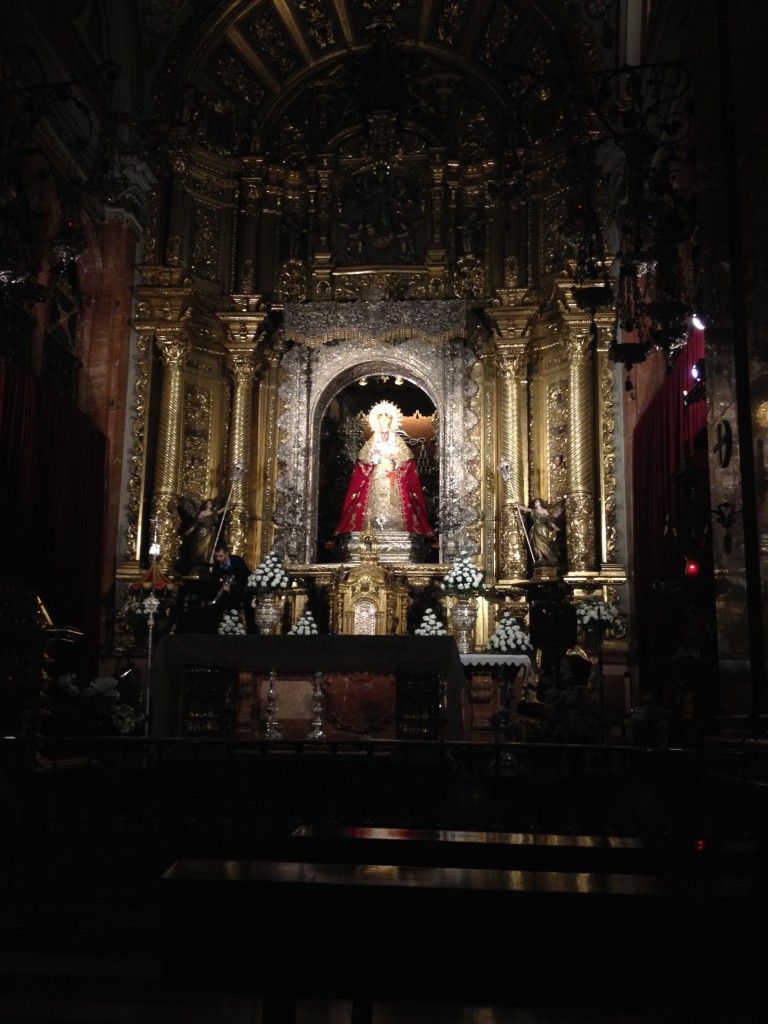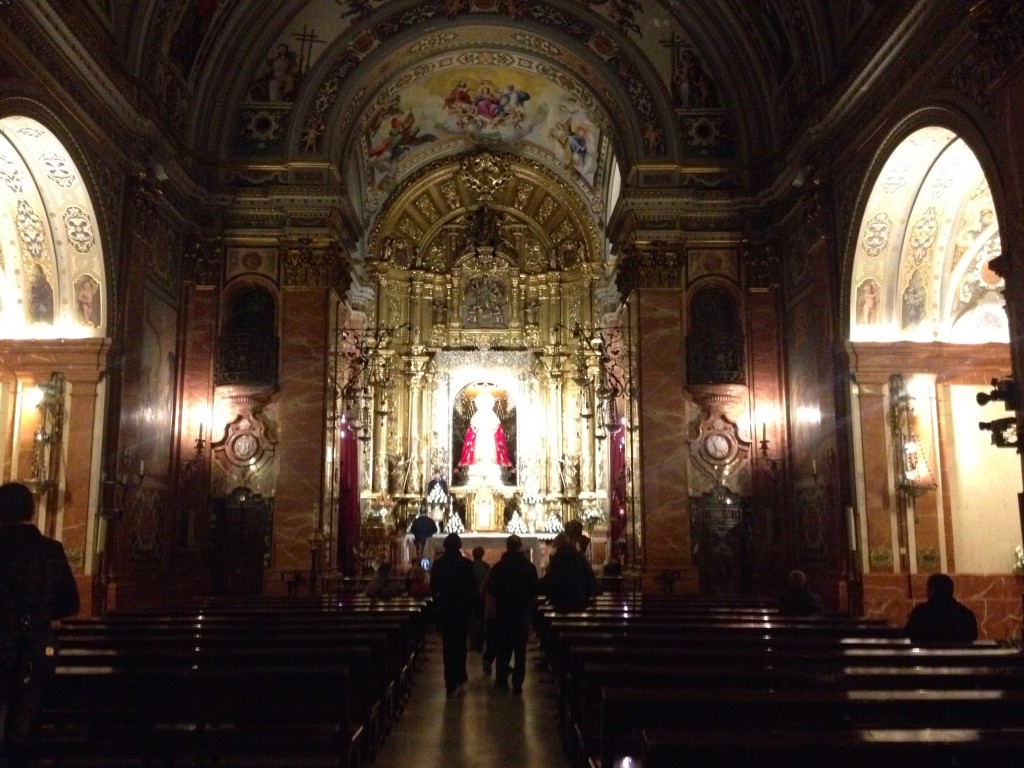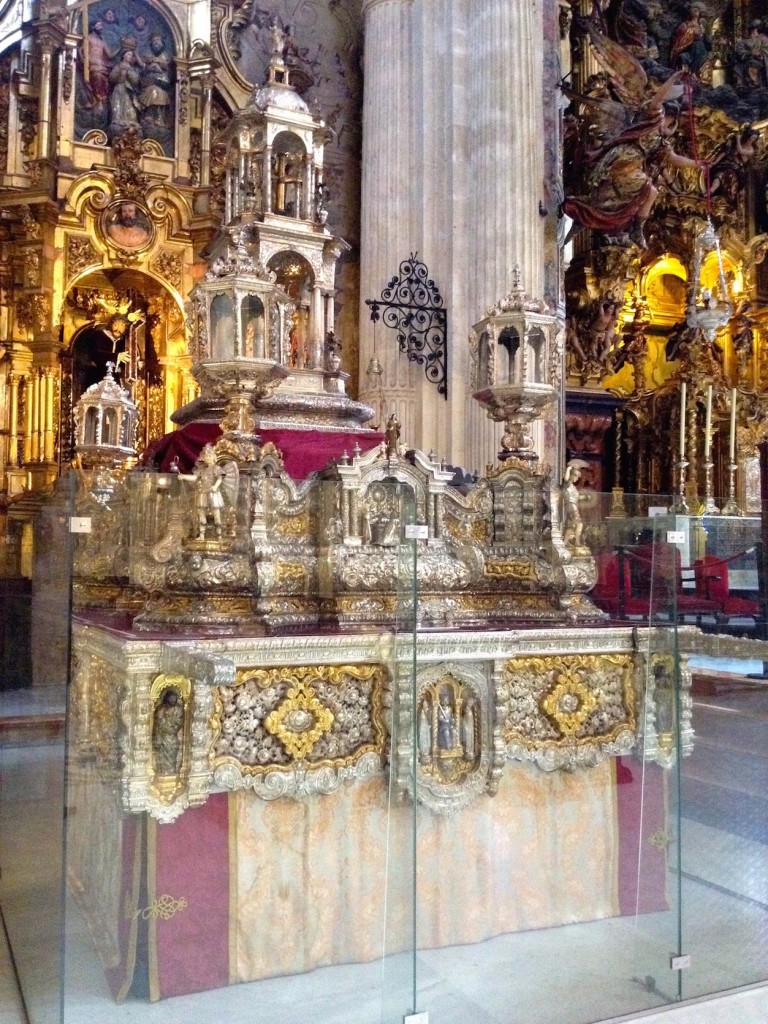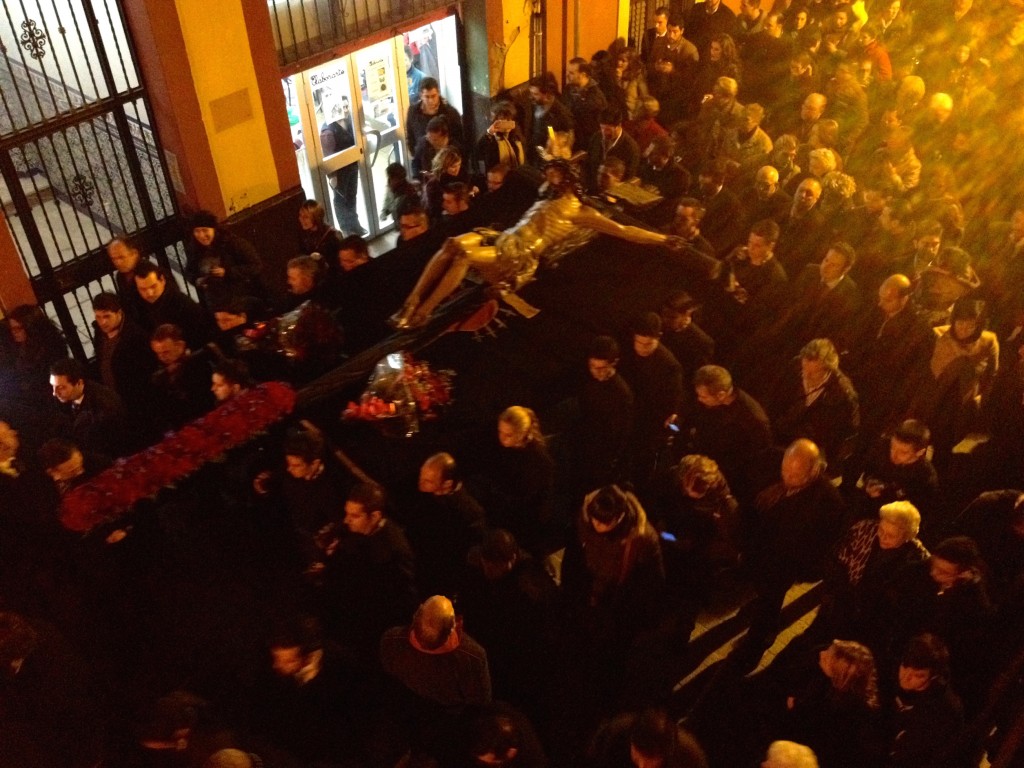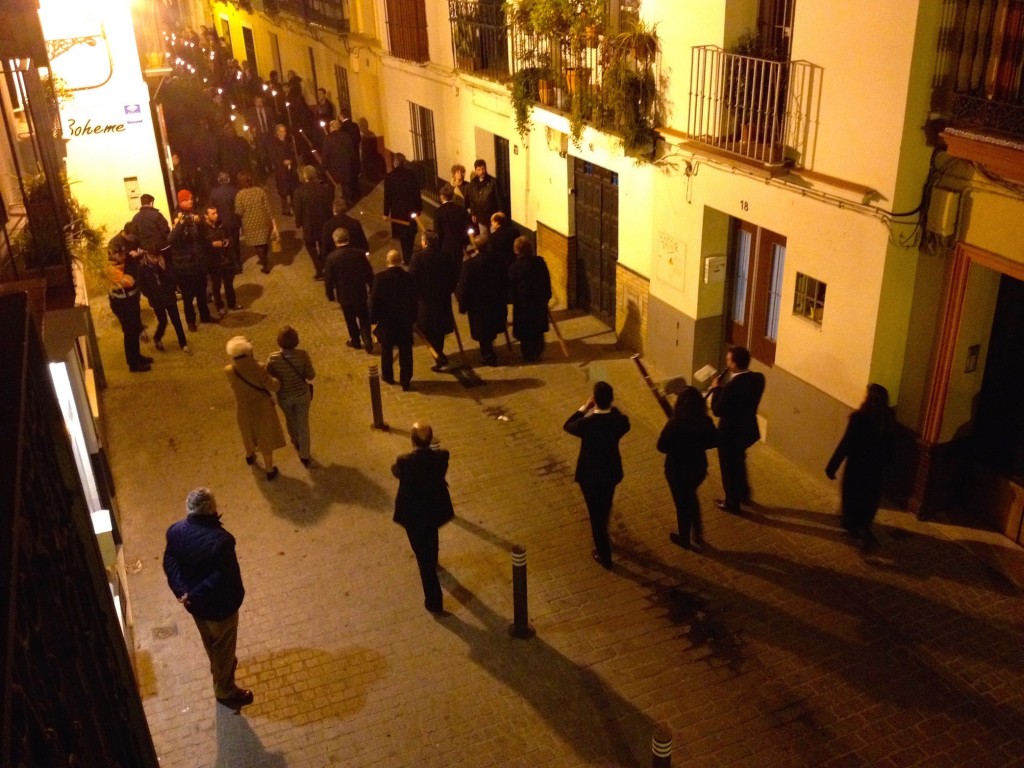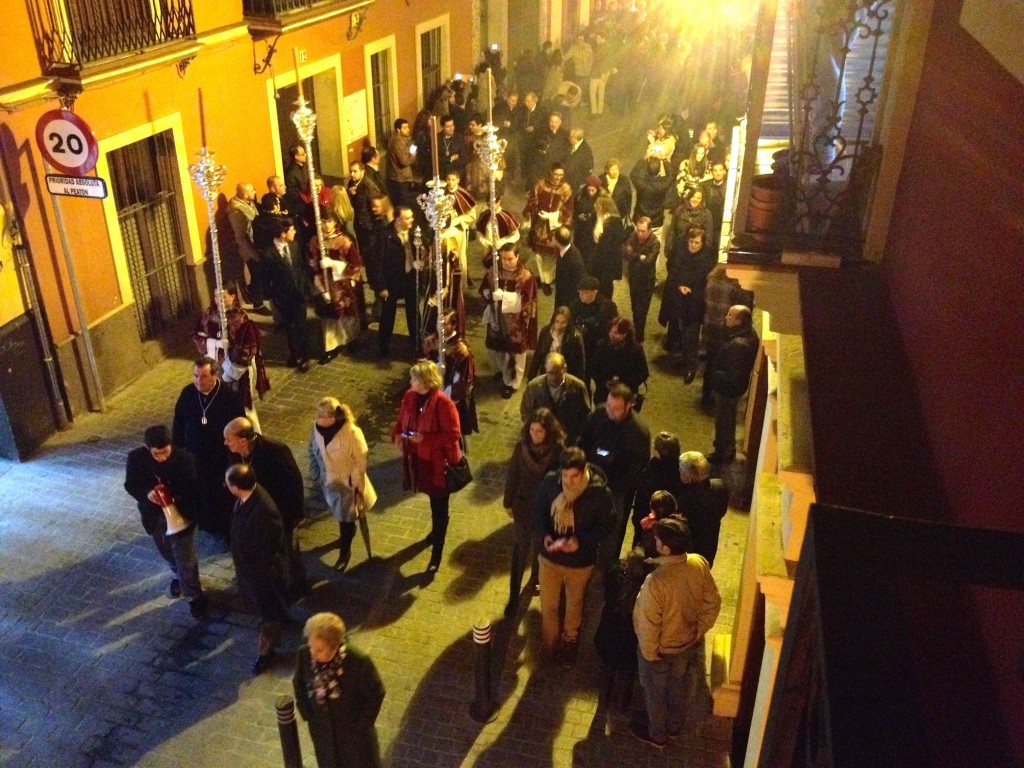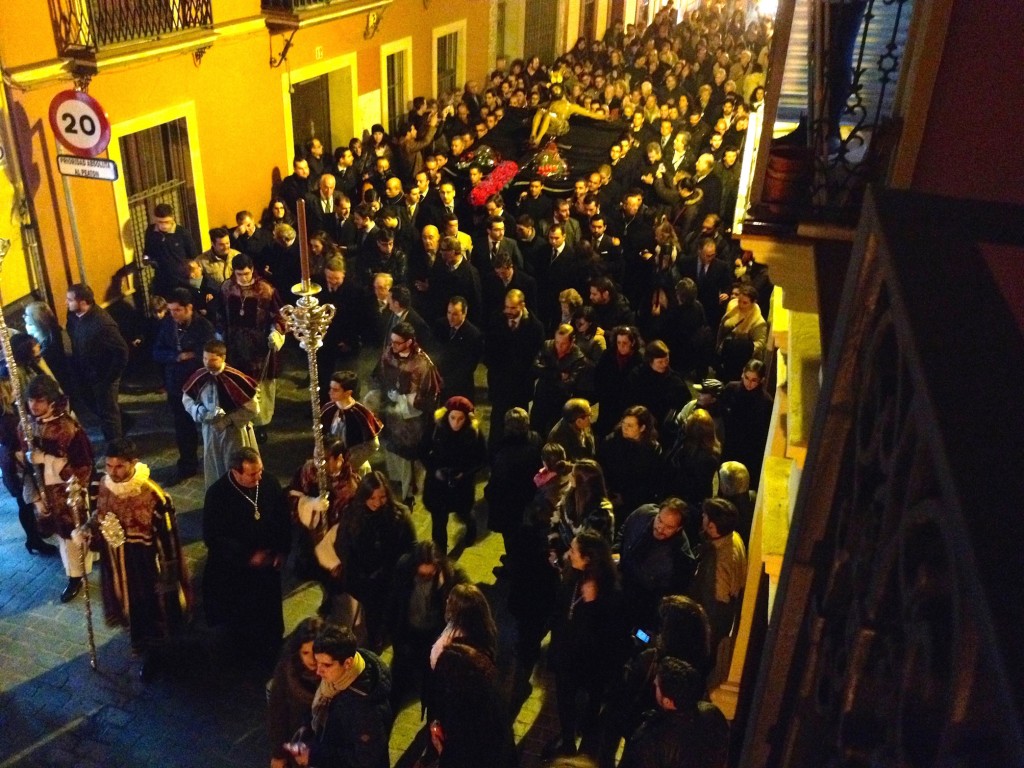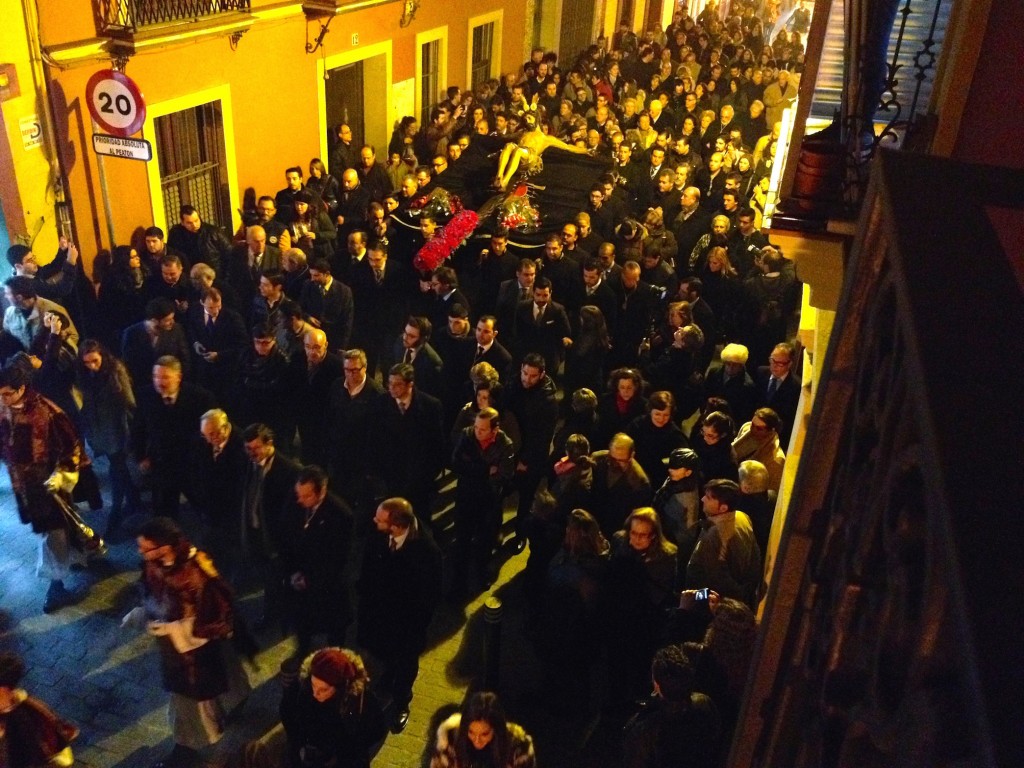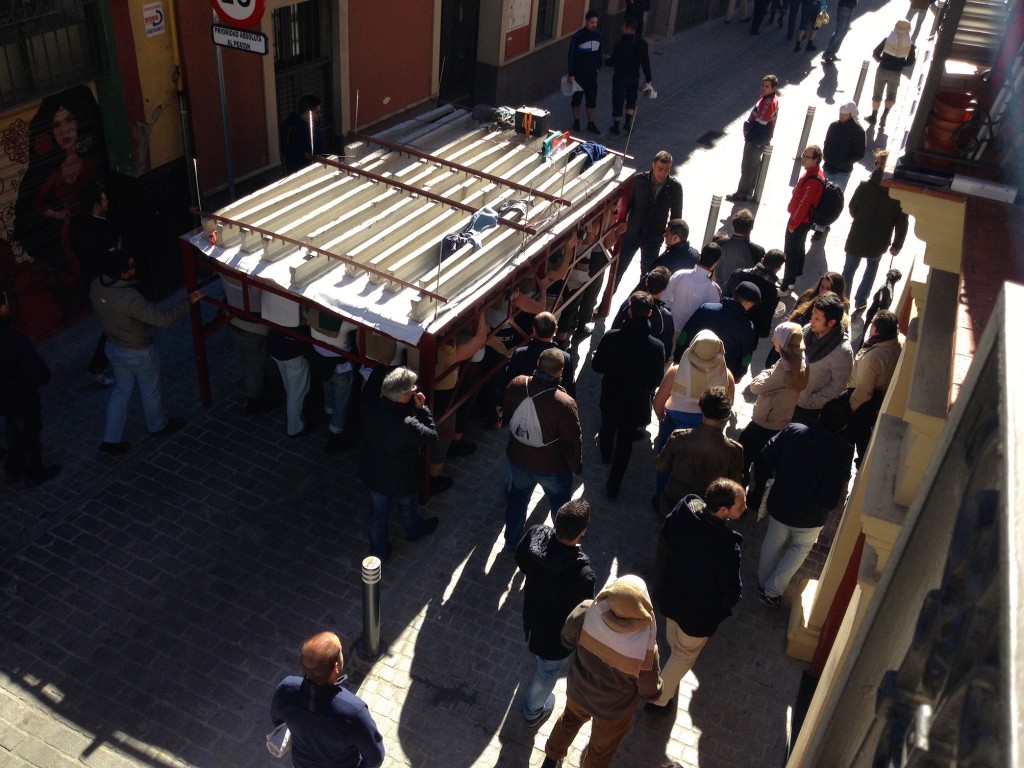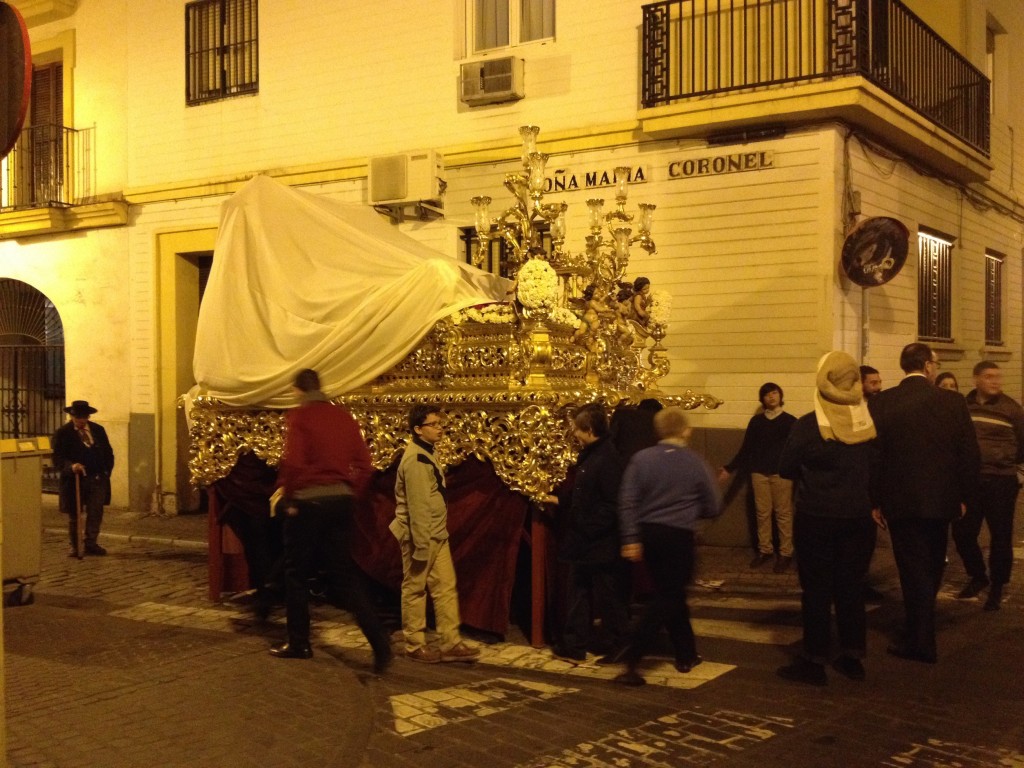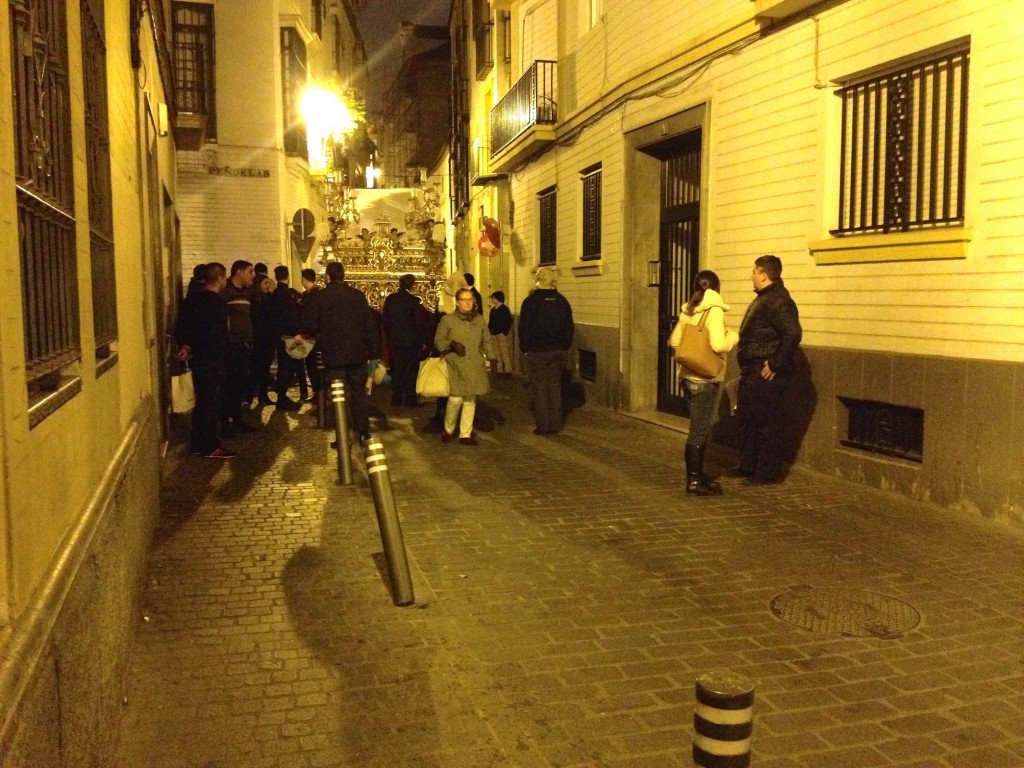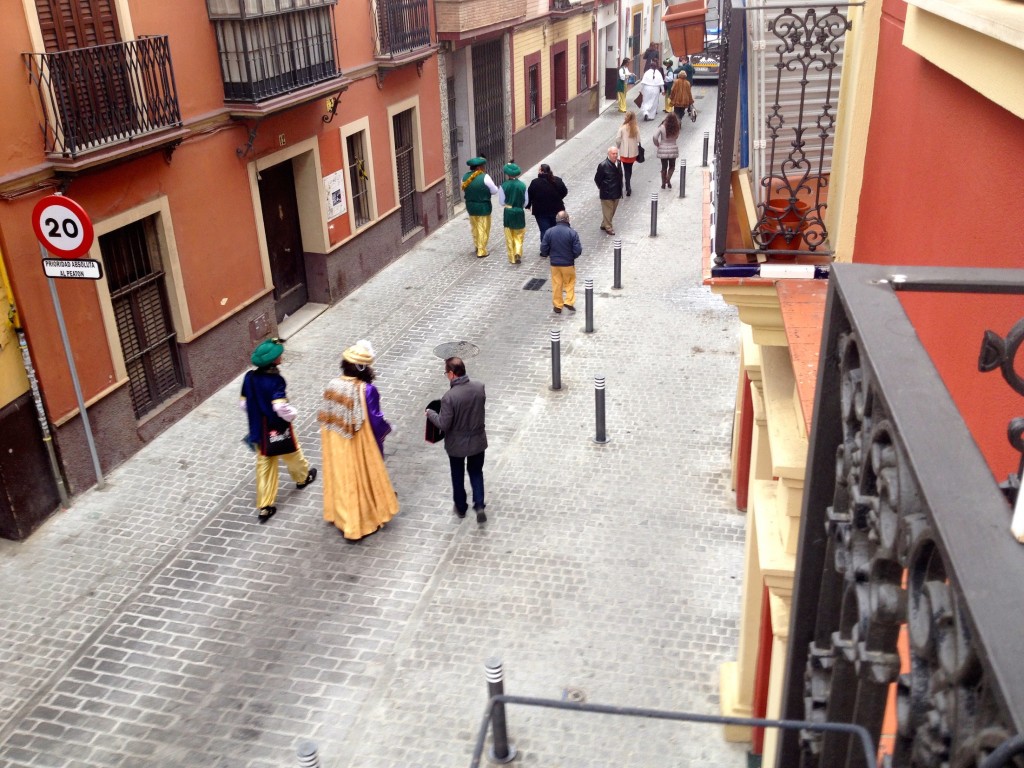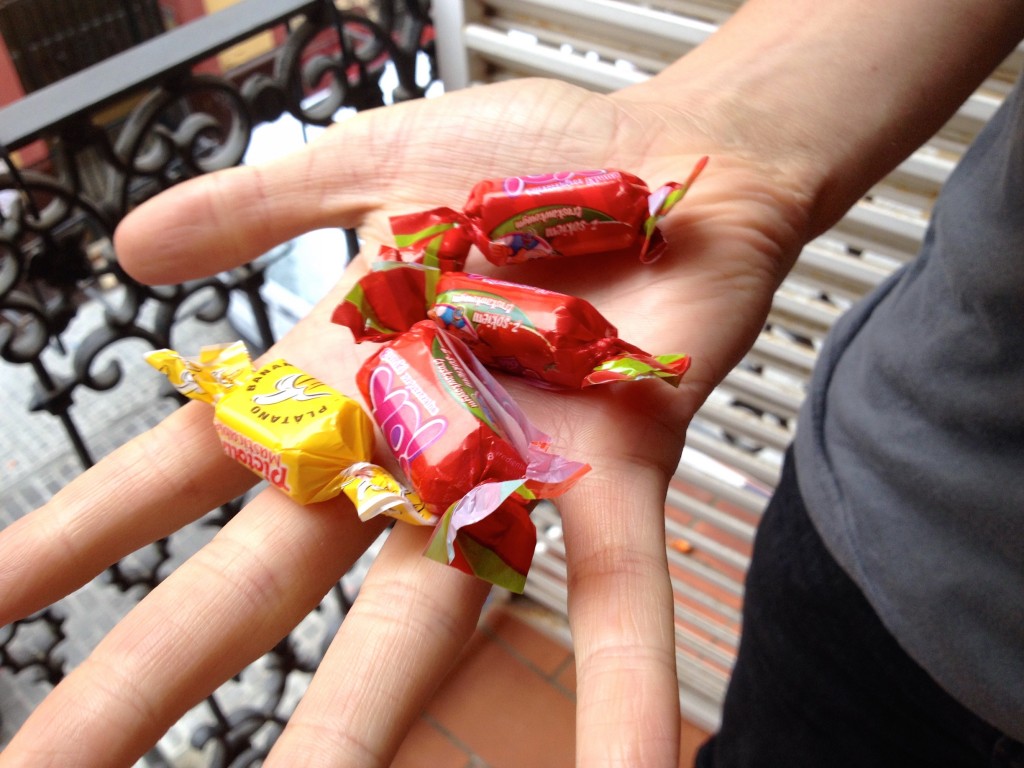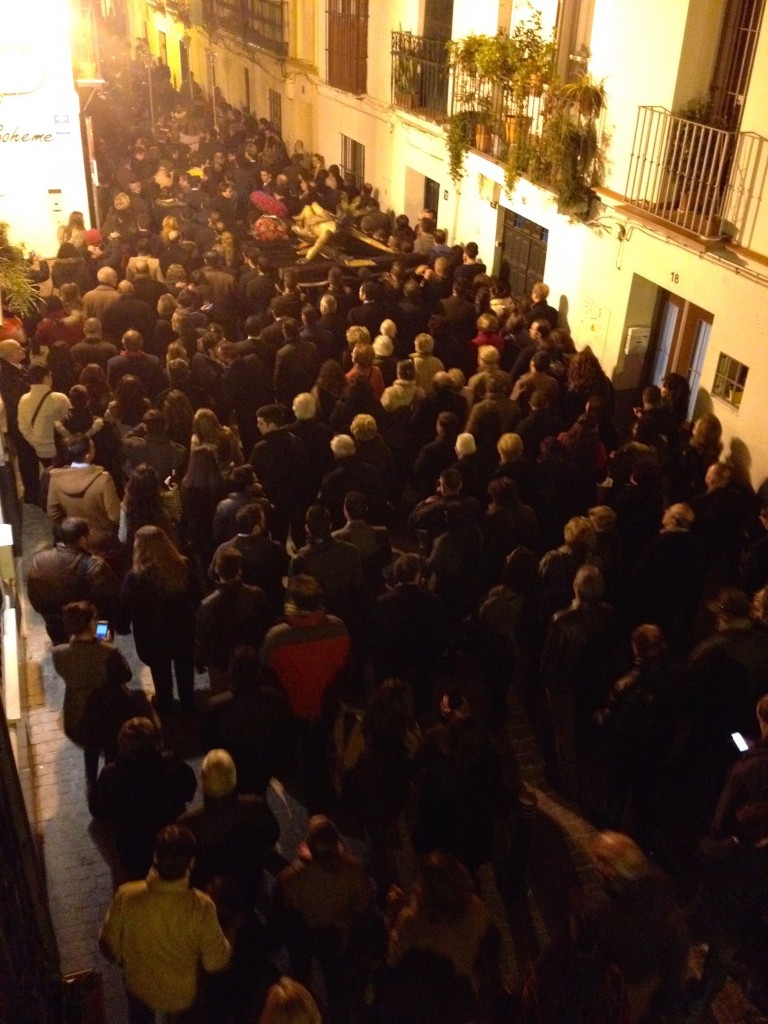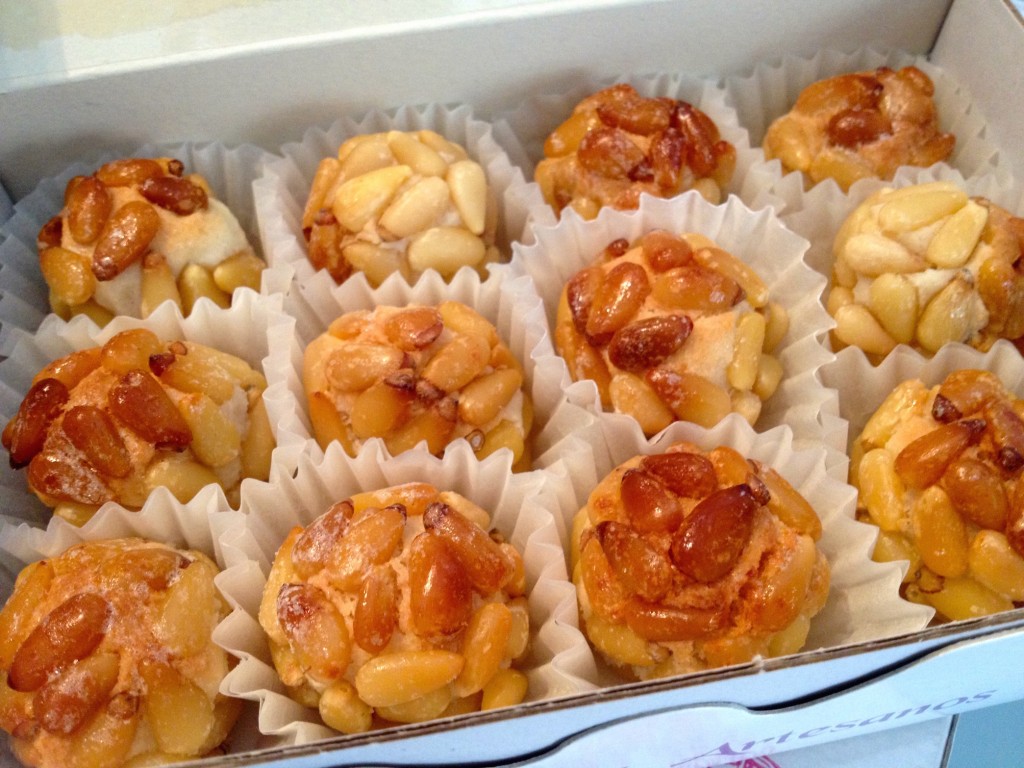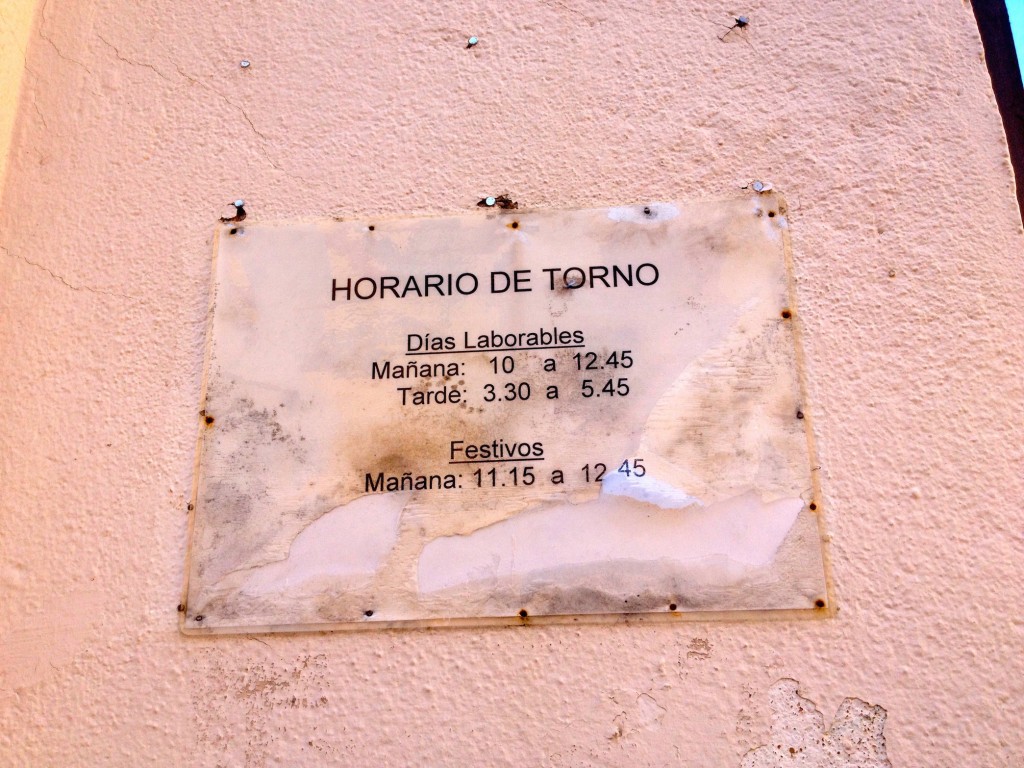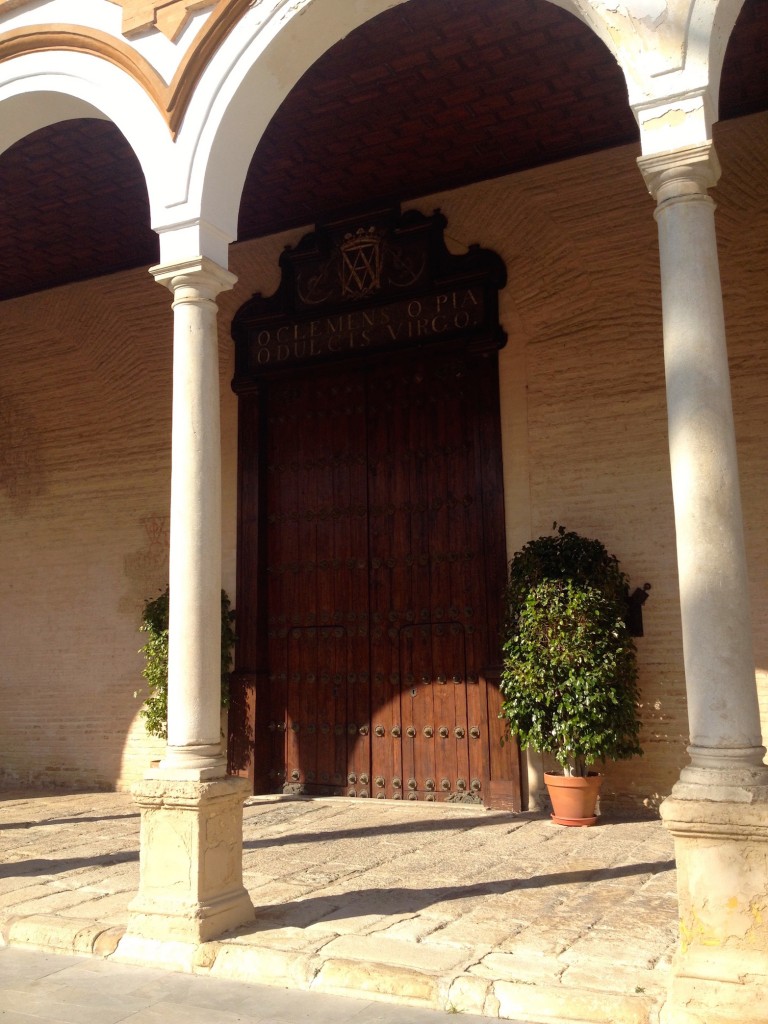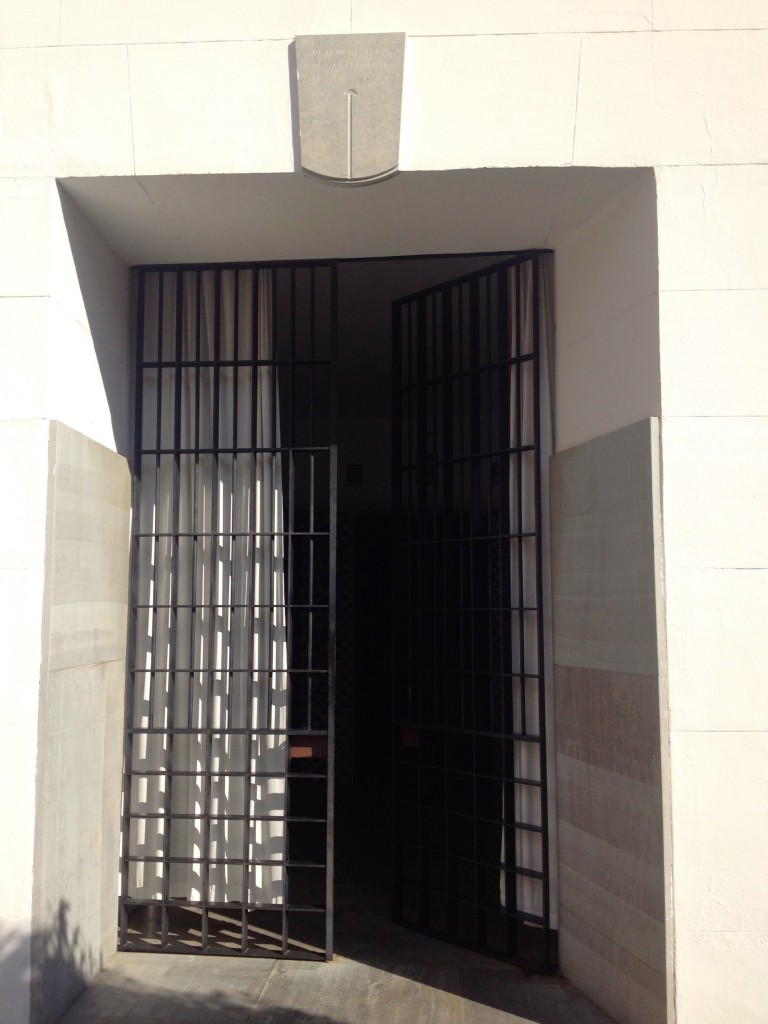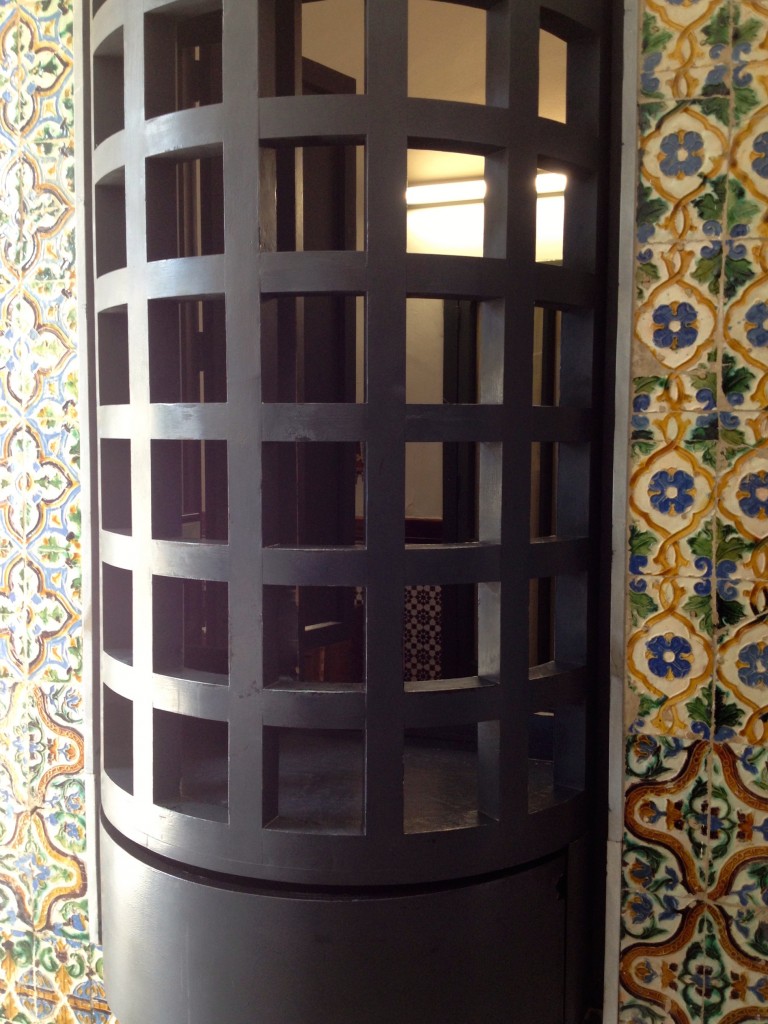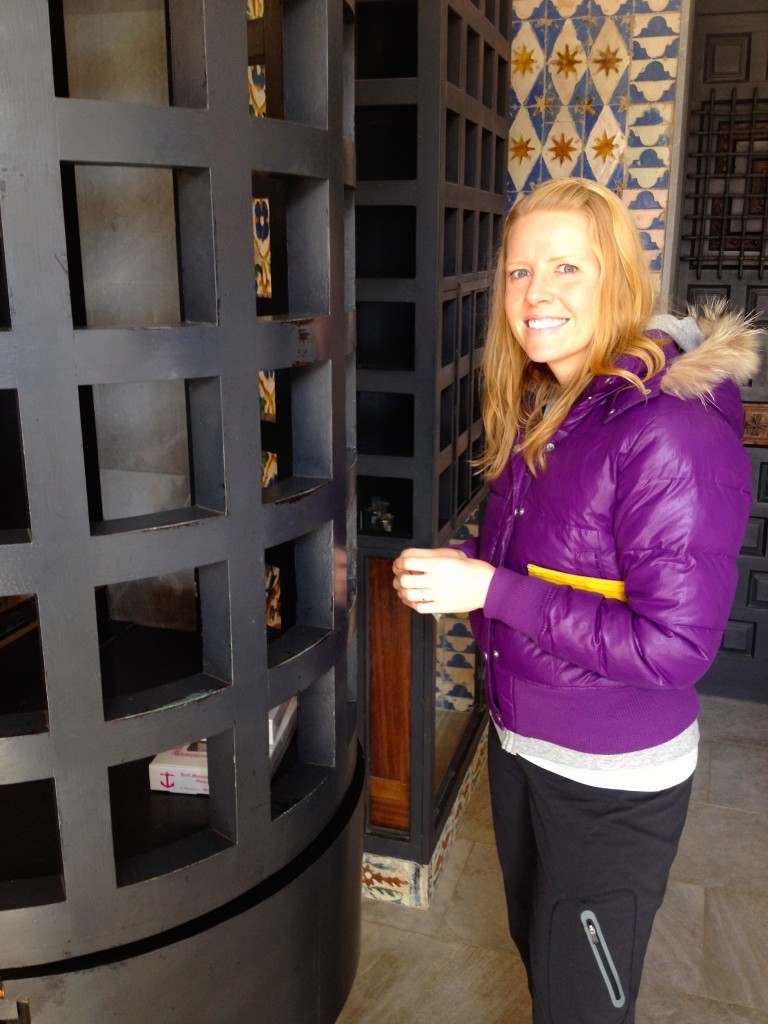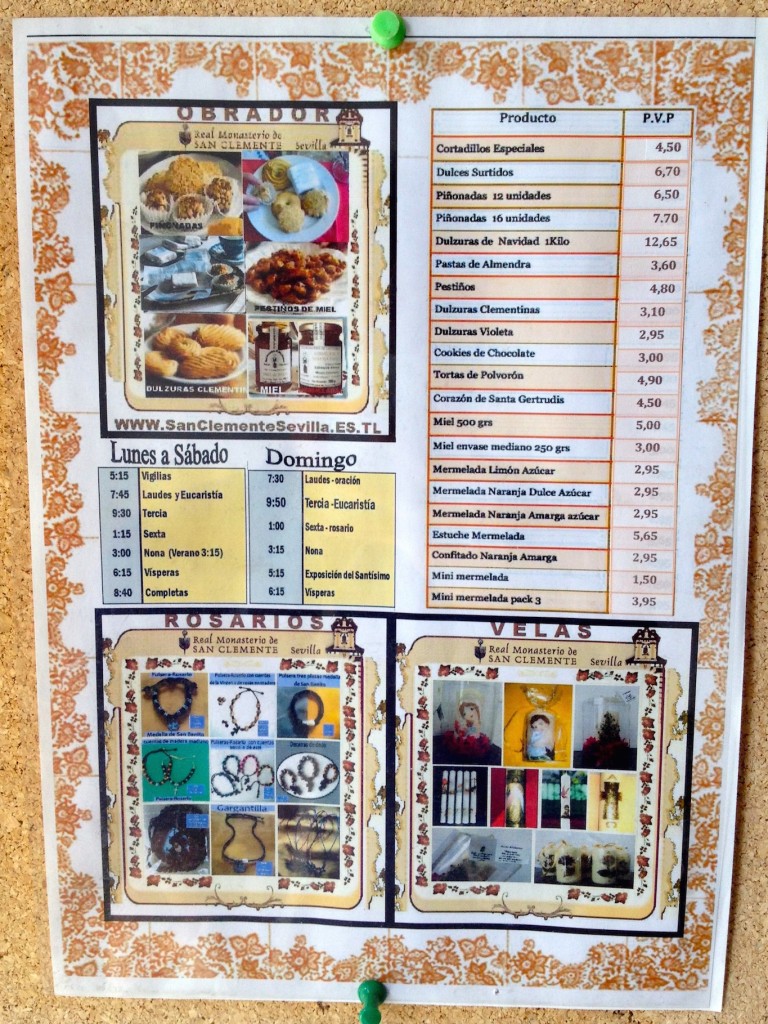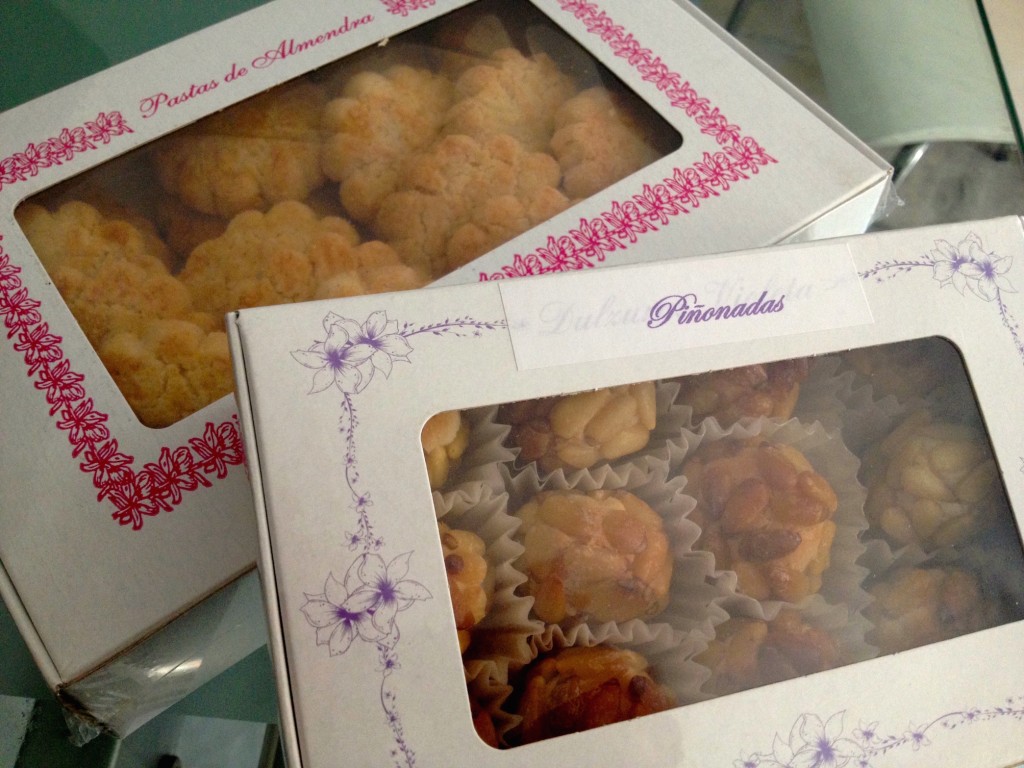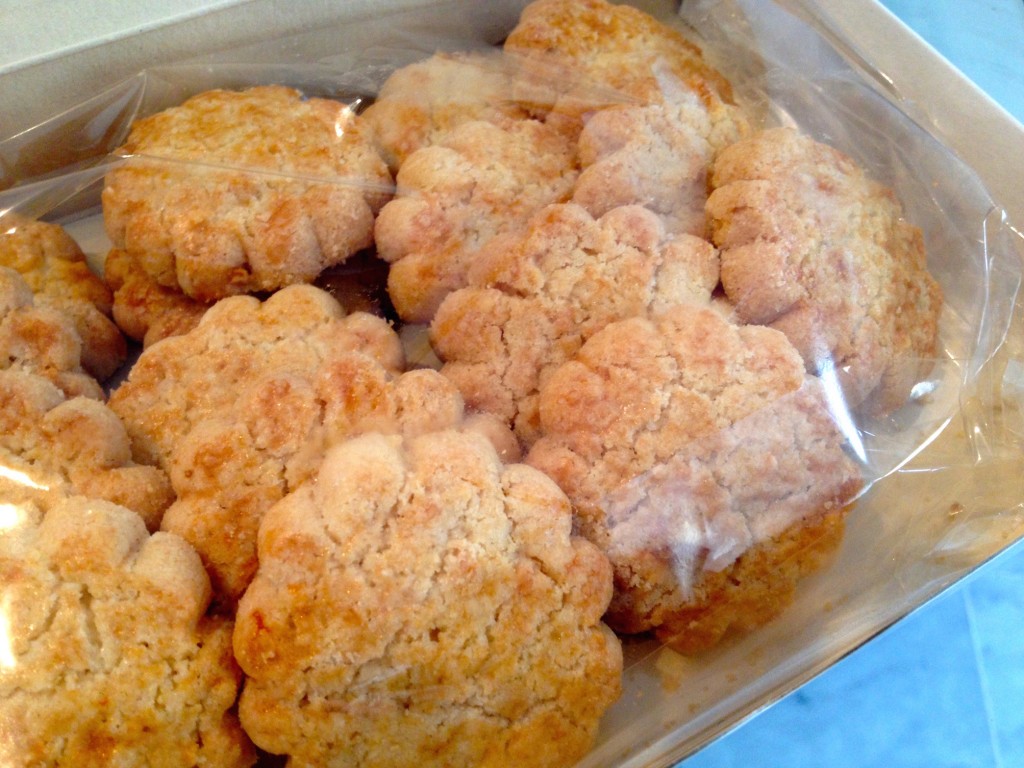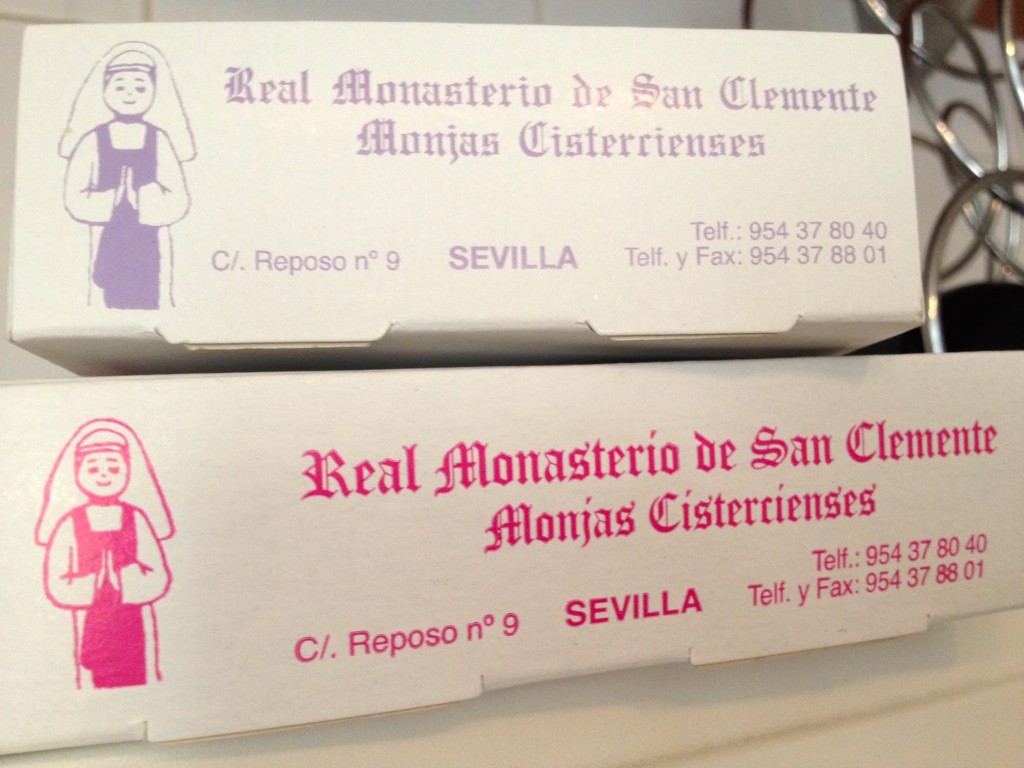Everyday life in Sevilla was wonderful. How could we NOT love living in the land where the Siesta was invented?! What I didn’t realize before moving to Spain, however, is that the Siesta isn’t widely used for sleeping. Instead, between the hours of about 2 and 5pm, most people close down their businesses and use it as a time to eat, drink, and enjoy the company of loved ones. What a wonderful part of Spanish culture – I can definitely get behind the hang-out-with-loved-ones-everyday thing! It was fun to see big multi-generational families hanging out in the January sunshine, sipping beers on the piazza while the kids ran around playing. Why can’t we do that in the US in the middle of the day on a Thursday?!
Things that surprised us in Spain:
- No one works at coffee shops. Ever. It’s downright impossible to find a place to hunker down with your laptop to do a couple hours of work while sipping on a latte. We were spoiled in Chiang Mai.
- It is acceptable to do shots of vodka before noon at your local neighborhood cafe, provided that you accompany it with a glass of fresh squeezed orange juice.
- Almost all businesses (except tourist-oriented ones) are closed on Sundays. Even major grocery store chains.
- The coffee in Spain was SO disappointing. No bueno. We were spoiled in Chiang Mai. (Noticing a theme?)
- Clothing is remarkably cheap compared to the US. Kevin bought a high-quality lightweight duck down jacket for just $40!
- Alcohol is incredibly cheap! Delicious bottles of temperanillo can be had for just 2 euro. A glass of Vino Tinto de la Casa (House red wine) at a restaurant will usually run you just 1 euro! Beers at the grocery store are usually south of a Euro, but are not delicious in any way shape or form. And a love affair with Spanish Wines was born…
So what was daily life like for us in Sevilla? Read on for info on where we lived, what we ate, and what we did with ourselves all day.
Where did we live?
Our Airbnb Rental Apartment
Sevilla was our first venture into rent-an-apartment-blindly-on-Airbnb-for-a-month-without-seeing-it-first world. We were a little nervous because Airbnb can be a bit hit-or-miss; we’ve definitely had some interesting experiences in the past…
In Amsterdam in 2012 we accidentally booked a place at the end of a dark alleyway, located next to a halfway house, and which had dirty sheets and a gross bathroom. There was also the Singapore Chinatown debacle of 2014 where we stayed in a room that was more prison-cell than chic-hotel and shared a teeny tiny bathroom with 12 other people.
Sometimes interesting Airbnb experiences are great, though. We rented a private room in Koblenz, Gemany in 2012 from a fantastic couple. Our hosts Michael and Henrik came to breakfast on our last morning wearing their leiderhosen outfits! It. Was. Amazing. We really loved having them as hosts, though we never did figure out how to use their bathtub/shower…
- Our wonderful Airbnb Hosts from a 2012 Stay in Koblenz, Germany
- The Airbnb bathroom in Koblenz. HOW do you use this shower without getting the ENTIRE BATHROOM WET?!
In spite of the risks, we think month-long rentals on Airbnb are definitely the way to go, because they can be waaaaaaaaaaaaay cheaper than hotels and hostels. The downside is that you’re completely locked in to the apartment once you hit that “book” button. The “long term” refund policy is enforced on all Airbnb rentals that are 4 weeks or longer, which means there’s no way to back out of a 1-month without losing at least 4 weeks worth of money. So it’s important to choose wisely!
We really lucked out this time in Sevilla. I was able to negotiate our monthly rate down even further from what was on the Airbnb site – we saved over 150 euros this way! Our apartment was extremely comfortable, had a great kitchen which we used a LOT, and was in a wonderful neighborhood.
We stayed at our Airbnb for 30 nights for €697 (about $800 USD at the time), which works out to a little under $27/night. Curious what $800/month gets you in Sevilla, Spain? Here’s a video tour of our apartment:
The Neighborhood
We were a 15-minute walk North of the tourist hotbed. This is PERFECT when you’re staying somewhere for a month. No one should stay in the epicenter of the tourist zone for more than a week because things are more expensive, and it insulates you from a lot of the best cultural experiences. For example, outside the tourist area, it’s not as common for restaurants to have English menus, but I 100% guarantee you that the food is better! Also, I am thrown into an anti-tourist rage when people are constantly bumping me with their selfie sticks. Here are a few snapshots of the neighborhood we called home:
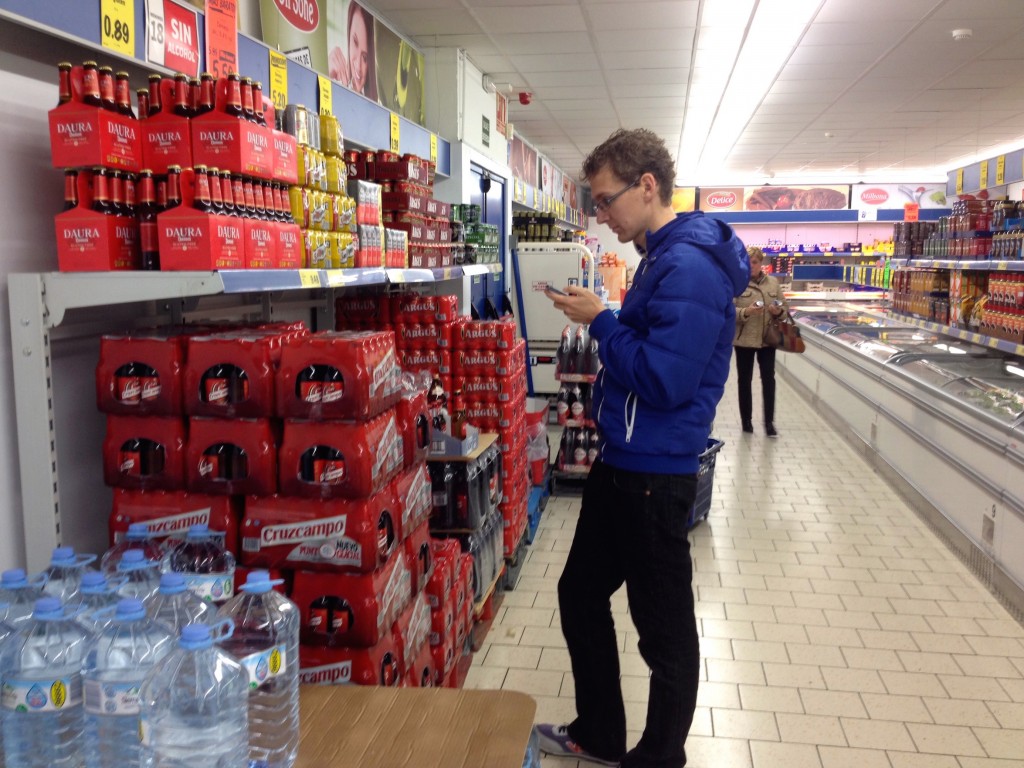
Here’s Kevin at the Lidl Supermercado, our grocery store of choice. Kevin’s doing what he always does, seeking out each country’s best rated and best value beers!
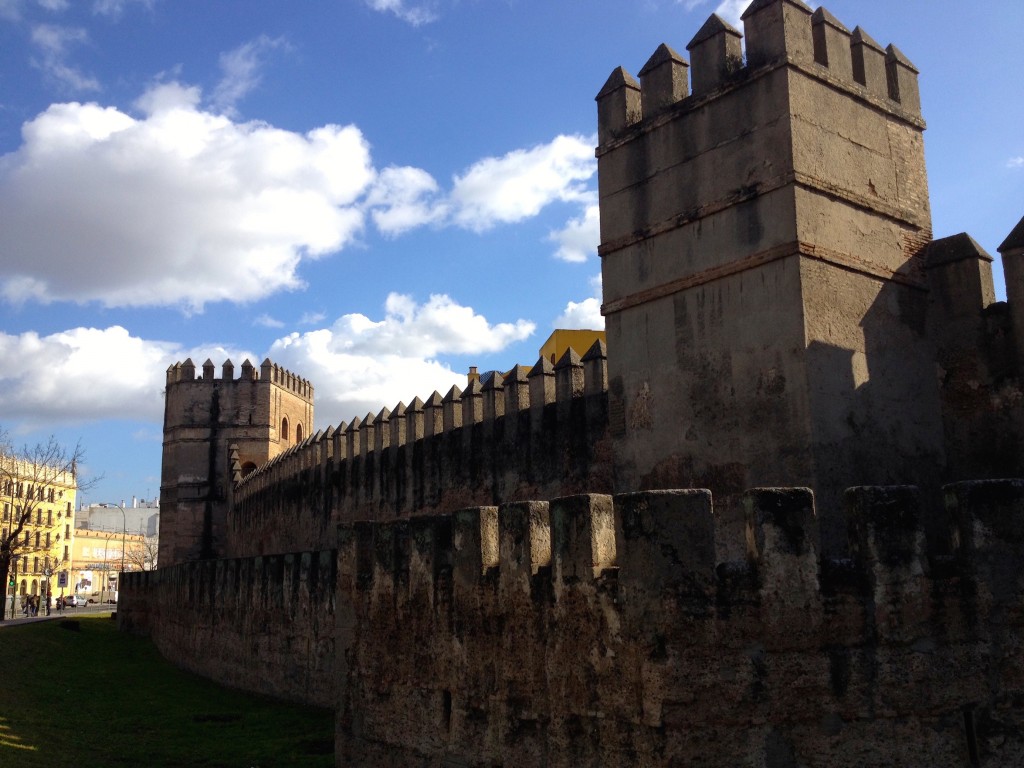
A remaining Part of Sevilla’s old fortified wall. What we’ve come to call “old-ass ruins” are a part of daily life in Europe.
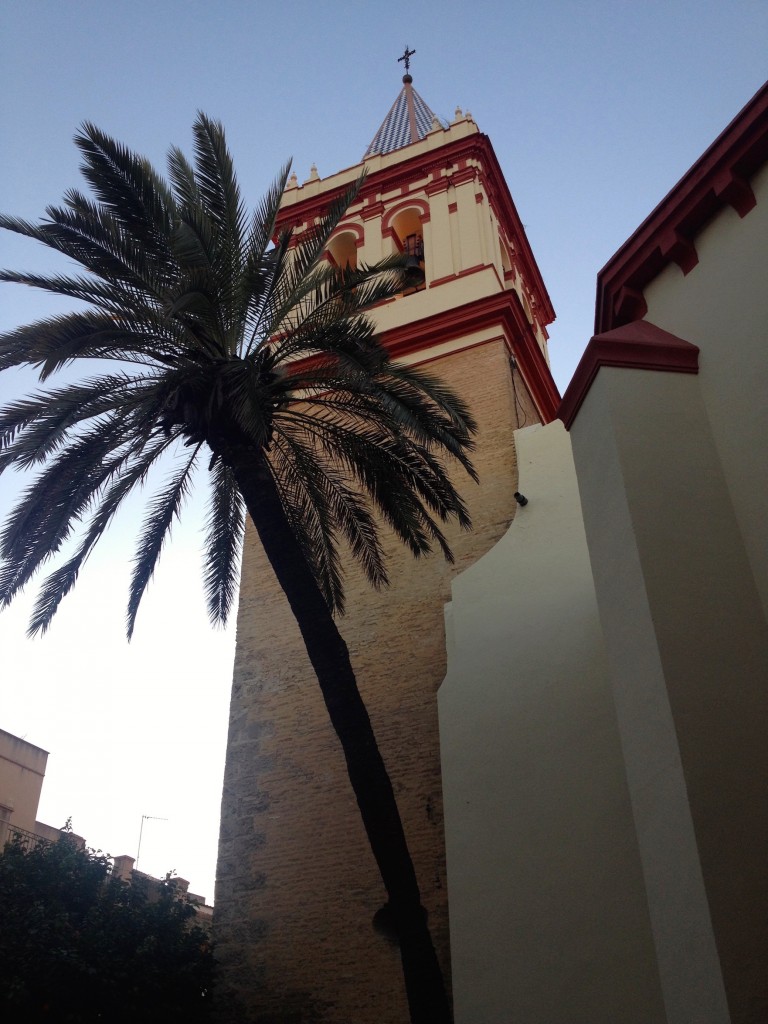
Here’s a palm tree near Basilica de la Macarena, about a 5-minute walk north of our Apartment. A palm tree. Near our home. I never thought I’d say that!
Apartment Downsides
The TV in our apartment was no spring chicken, so it didn’t have an HDMI input. That means that we had to watch this year’s Super Bowl on Kevin’s tiny Macbook pro monitor! It was sad to watch it that way (made even sadder by the last play of the game – BOOOO) but we made due.
We went on an overnight internet blackout since the game started at 12:30am in Spain, and watched it in the morning the next day.
We had some Spanish-inspired snacks. Chorizo and Manchego Cheese stuffed mushrooms (it doesn’t get much more Spanish than that):
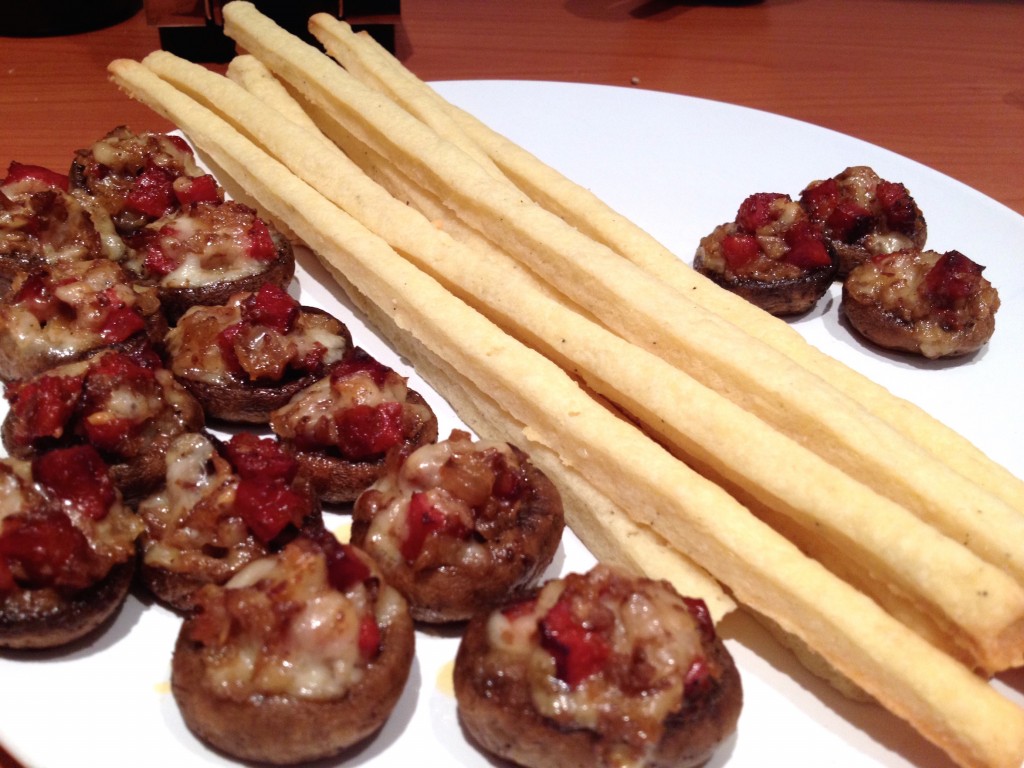
I also made cheese straws, but I don’t have a rolling pin so I rolled them out with a coffee mug. Airbnb is turning me into Macguyver in the kitchen.
What did we eat in Sevilla?
One word: Chorizo. We’ve learned a lot about grocery shopping since we left the US in April 2014. First of all, everyone will look at you like you’re a lunatic if you ask where the Grocery Store is. The rest of the world calls it a Supermarket. Secondly, the rest of the world doesn’t tend to stock as many non-local products. In Spain, you’ll never find a store stocking fruits from South America like we do in the US. Heck, you’d be hard pressed even to find imported Italian Sausage or cheeses from Switzerland. People just tend to eat a lot more locally. So we did as the locals did, and used Chorizo in nearly all of the meals we cooked at home.
Also, oranges in Spain are SO cheap. The going rate seems to be 5 kg for just 2 euros, that’s just $0.20 USD per pound! So this was the typical scene in our kitchen:
Info on Spain’s Ham Culture
Spaniards are absolutely fanatical about pork! We ate so much cured meat during our time in Sevilla that I was afraid I might be slowly pickling myself with salt. All over Sevilla, you’ll find charcuterie shops like these, selling different forms of cured pork:
Now that I’ve talked pork culture, I should tell you about some of our favorite restaurants in Sevilla. In somewhat random order, here are the best places we visited:
Best Tapas Everrrrrr: Eslava Tapas Bar
After eating at a few tapas bars, you start to realize that everyone’s dishing out mostly the same thing: heavy meats, cheeses, and breads. You start to long for something different and out of the ordinary, maybe something other than sausage and pulled pork. Eslava fills that void perfectly! Without being ridiculously expensive, they serve up artful, delicious tapas that even the biggest foodie in the world would love. They were hand down the BEST tapas we tasted in Spain. If you visit Sevilla without eating at Eslava, you are making a huge mistake.
Pro tip: tapas are served in the bar area only. Check out their location and current hours here, and arrive a bit on the early side to avoid crowds.
- Carrillada (tender braised pork) and Salmon Ahumado con salmorejo (smoked salmon on toast with tomato puree)
- “Un Cigarro Para Becquer (a brie wrapper filled with fish, all shaped like a cigar, it was artsy).
- I’m salivating just looking at this one. Costillas a la Miel (honey marinated pork ribs).
Best Tapas Atmosphere: Bodega E. Morales
Bodega E. Morales serves tapas in a back room full of giant Adobe jugs, and their food is both reliably delicious and cheap! Pick your tapas from the chalk board (check out the sign just over Kevin’s left shoulder in the photo below); most tapas are 2-3 euros.
- At just 1 euro per glass, their house red is a total steal.
- In the back is Salchicha Vino (sausage in white wine). Front right is Chipiron (amaaaazing pull apart pork with delicious sauce), and on the left is the Carrillada (stuffed squid topped with squid ink).
- Habas y Jamon (fava beans with ham) in the back, and White Wine Sausage again in the front.
- The inside of Bodega Morales – check out the jugs!
- Look for this entrance, down the side alleyway.
Most Hipster: El Pespunte
Aside from feeling like we had totally teleported to a hip bar in Portland, El Pespunte had the most delicious cured meats we found in Sevilla. They also had a delicious house white wine.
- Does this look like Portland or what?!
- Tastiest Cured Meats Everrrr
Unanimously Best Wine Ever: Bodeguita Antonio Romero
We’ve all heard of “Love at first Sight”. In Sevilla, Kevin, our visiting guest Greg, and I discovered a new phenomenon called “Love at first Sip”. The house red they were serving the day we visited Bodeguita Antonio Romero was the lovely beauty pictured below. This wine from Northern Spain was the perfect red, with a perfect vanilla finish. We looked all over Sevilla to try to find a whole bottle; eight grocery stores and two specialty wine shops later, we were still empty handed. Word on the street is that you can indeed find it in Seattle for a somewhat hefty price. It’s also served at Eslava Tapas Bar in Sevilla.
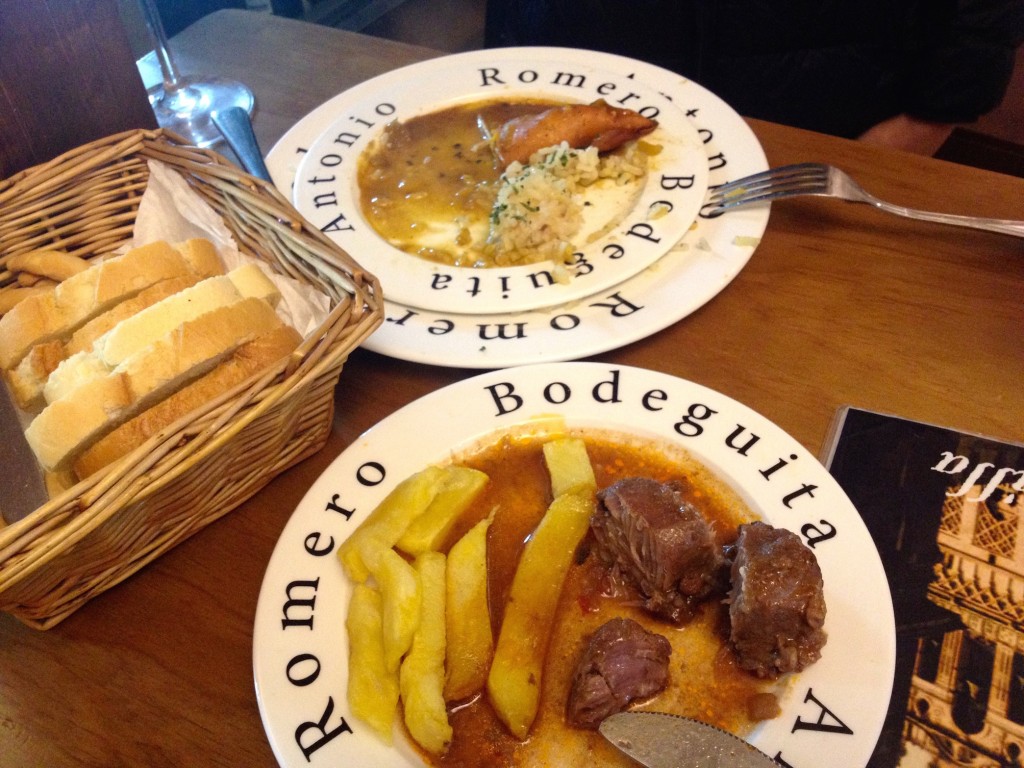
The tapas were so good I forgot to take a photo. I highly recommend the Montaditos (tiny sandwiches) at this spot.
The Only Spot with Authentic Paella: The Calle Feria Sunday Market
Upon arriving in Sevilla, we were sad to realize that paella is mostly a Southeast spain thing, much more common in the Valencia region than it is here in Andalusia. Being the stubborn food lovers we are, we were determined to find a good plate of Paella in Sevilla. Many touristy restaurants do serve it, but after a disappointing experience which involved previously-frozen-then-microwaved Paella, we were discouraged.
That’s when we discovered the Calle Feria Sunday Food Market! This is probably the only place in Sevilla where you can get a small plate of fresh Paella. For just 3 euros, you get a plate AND a beverage. We didn’t realize it would come with wine, so we ended up having a few unplanned glasses of Vino Tinto before our afternoon 6-mile run. That wasn’t very fun, but boy was it tasty!
- Paella #1
- Paella #2, with pork and duck.
- A giant pan of Paella.
TIPS: Arrive right at 2pm on Sunday afternoon and wait for the Paella to be ready. It sells out lightning fast, so you need to be on time. The market is located here, and the food court area is in the backside furthest from Calle Feria. Buy your tapas tickets from the cashier (he’ll also give you your beverage of choice), then give the ticket to the food booth to get your food. On sunny days, there is usually live music!
What did we do all day?
We had to shift our schedule drastically in Spain. GONE are the days of being in bed by 9pm, asleep by 10pm, and up by 7am. In Spain, things happen later in the day. Lunch is never before 2pm and dinner is never before 8pm. To think I used to eat lunch at 11am in Seattle! Madness. We started going to bed at midnight and sleeping until at least 8am. It was a wild ride.
A typical day in Spain went something like this:
- 08:30 – Wake up, have coffee
- 10:00 – Breakfast
- 12:00 – Go for a walk
- 14:00 – Have lunch
- 16:00 – Run a few miles on Sevilla’s great riverside bike path
- 17:00 – Snack (because WHO in their right mind can last from 2pm to 8pm without a snack?!)
- 20:00 – Cook and eat dinner, drink some Vino.
- 24:00 – Bed time. Listen for the regular guy who walks past our window playing flamenco music on his guitar.
Most of our remaining time was filled with working. Right now, “work” for us is studying, blogging, reading coding books, and getting ready for interviews. We sprinkled in some sightseeing here and there, went on lots of walks, and spent some serious time people watching. If this is what retirement feels like, I am IN.
